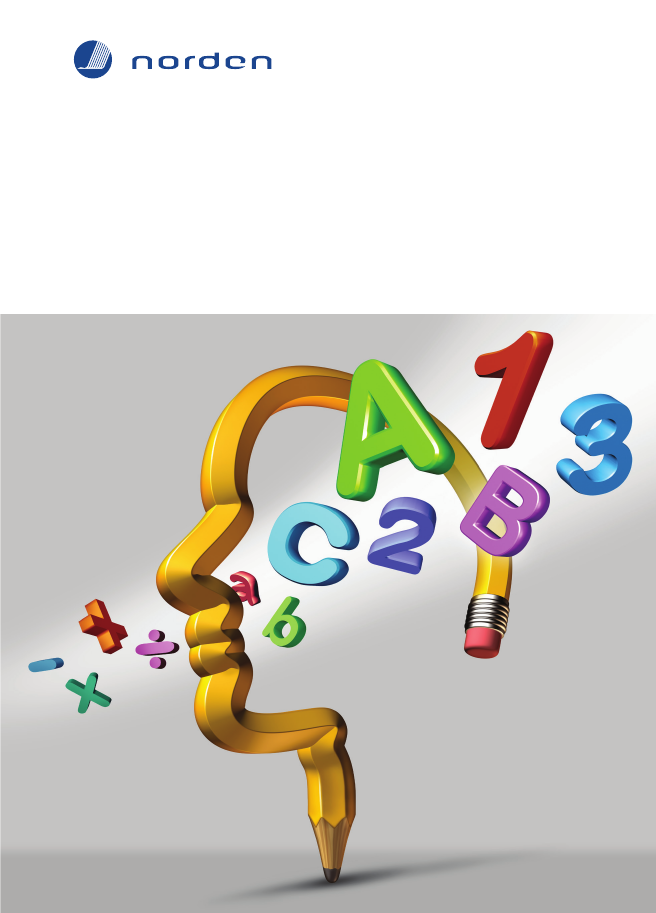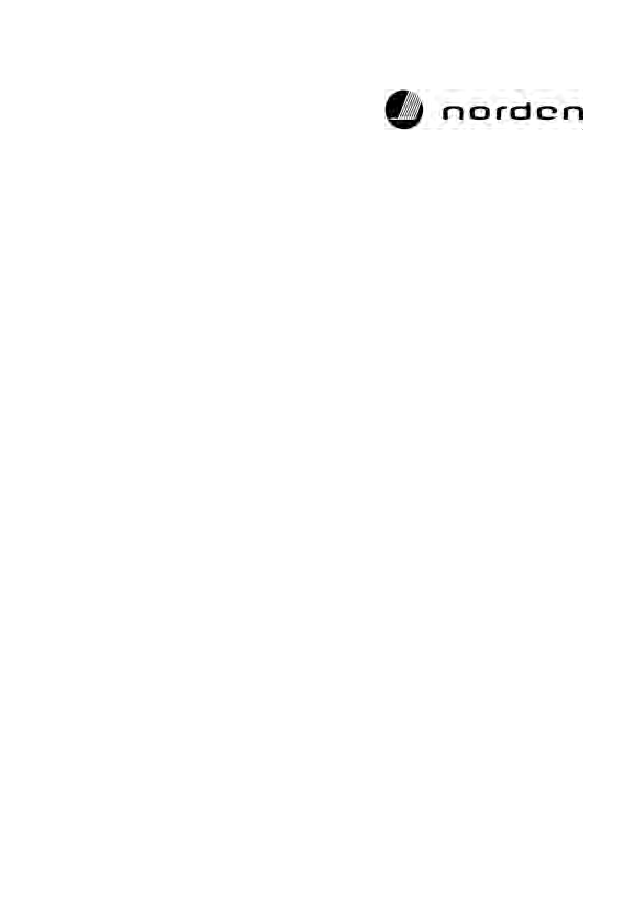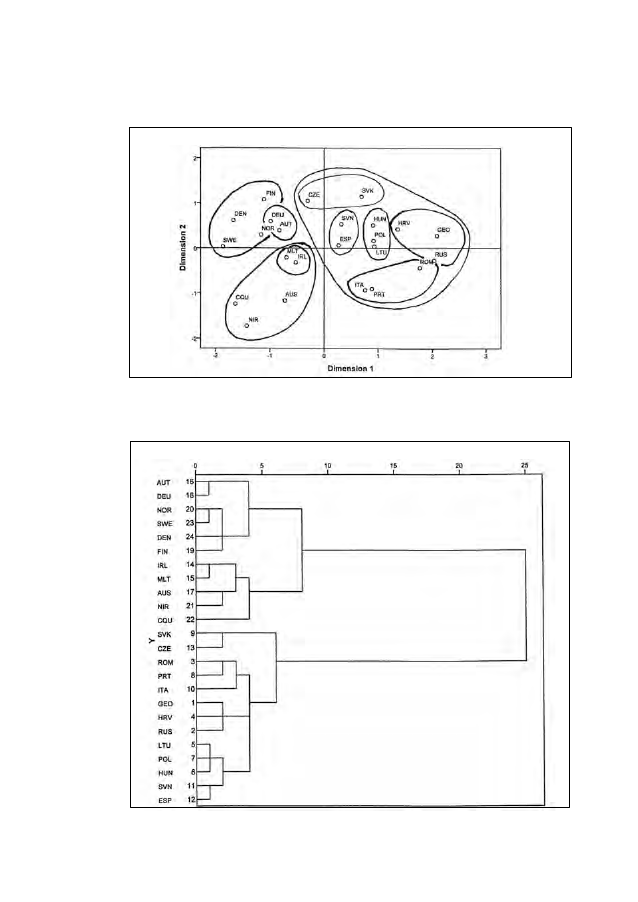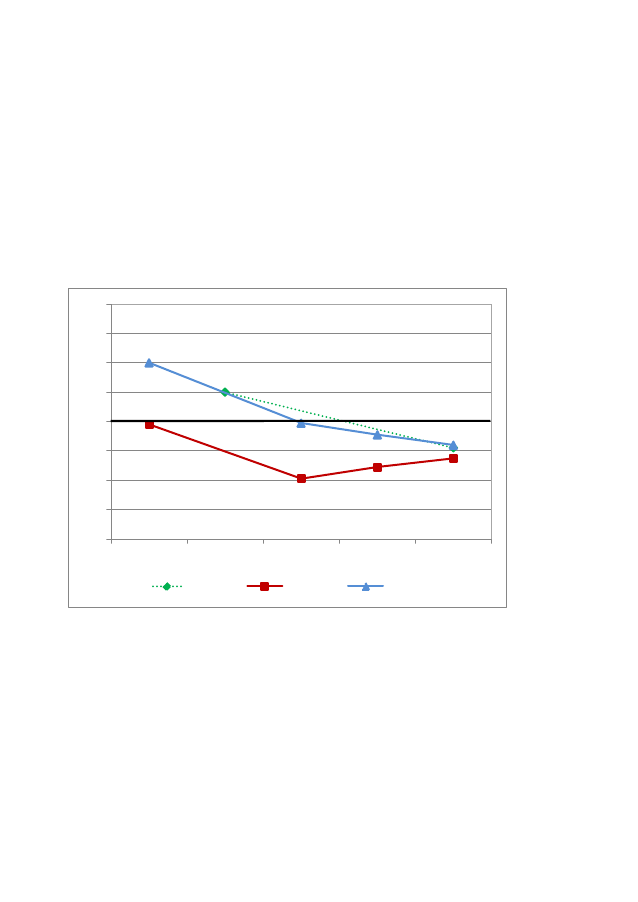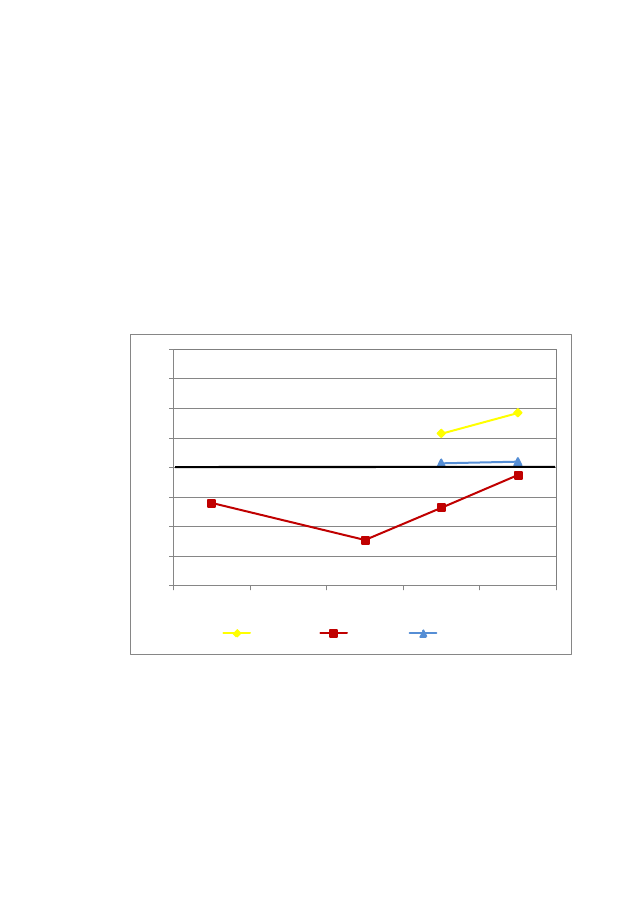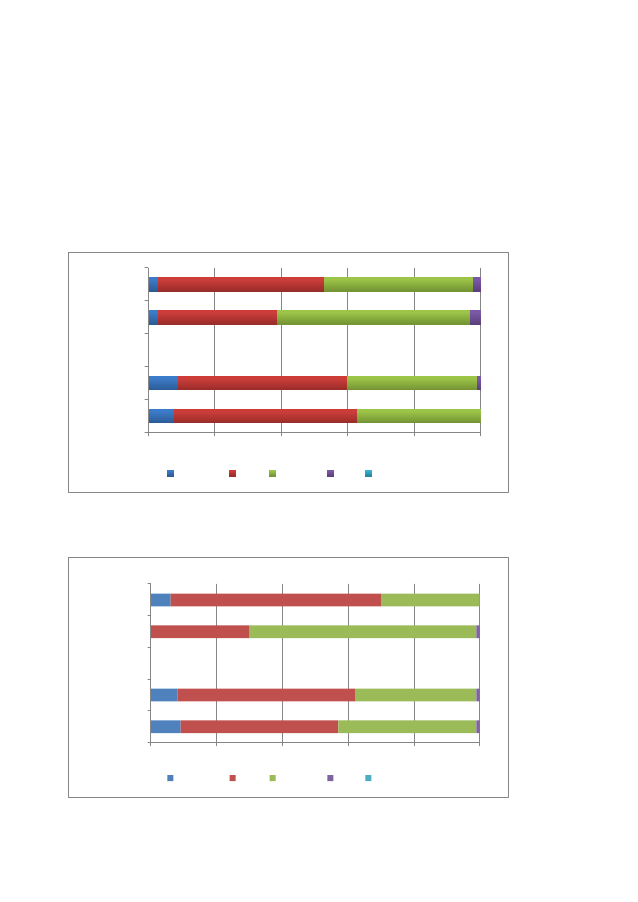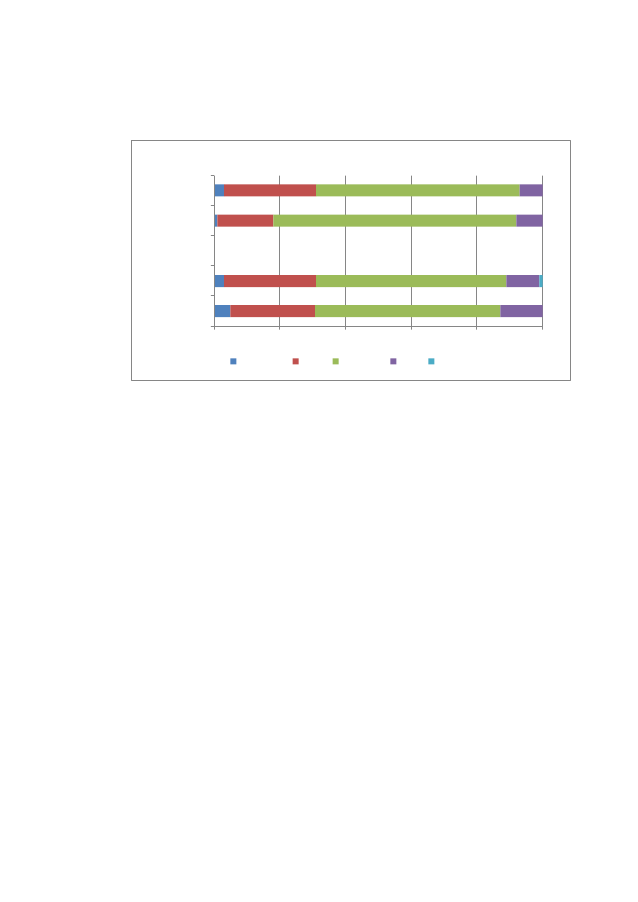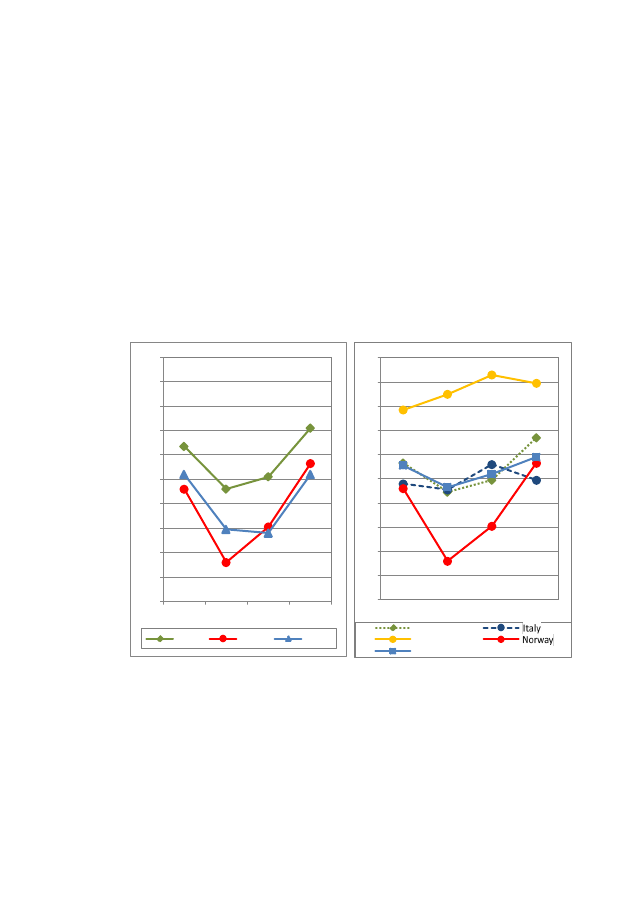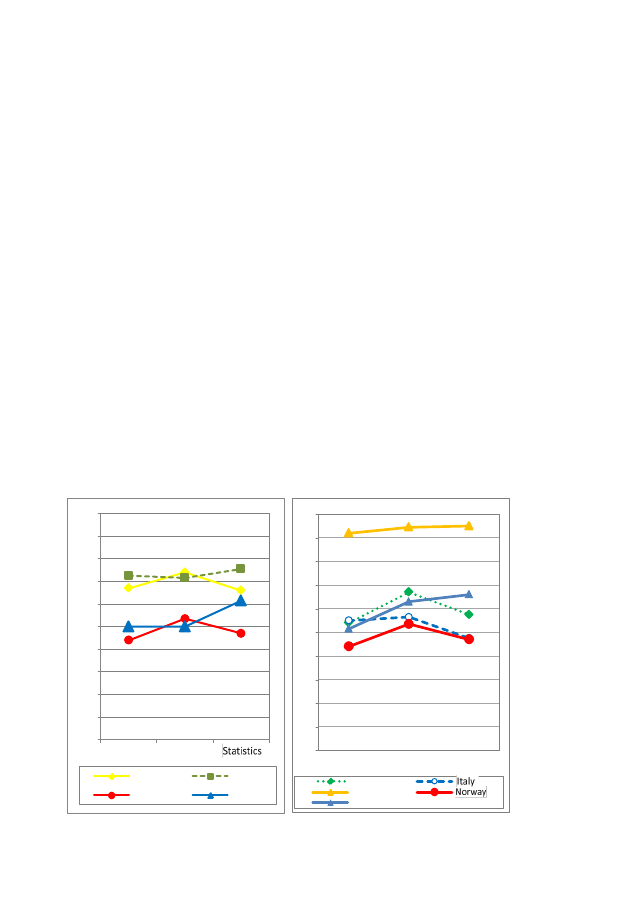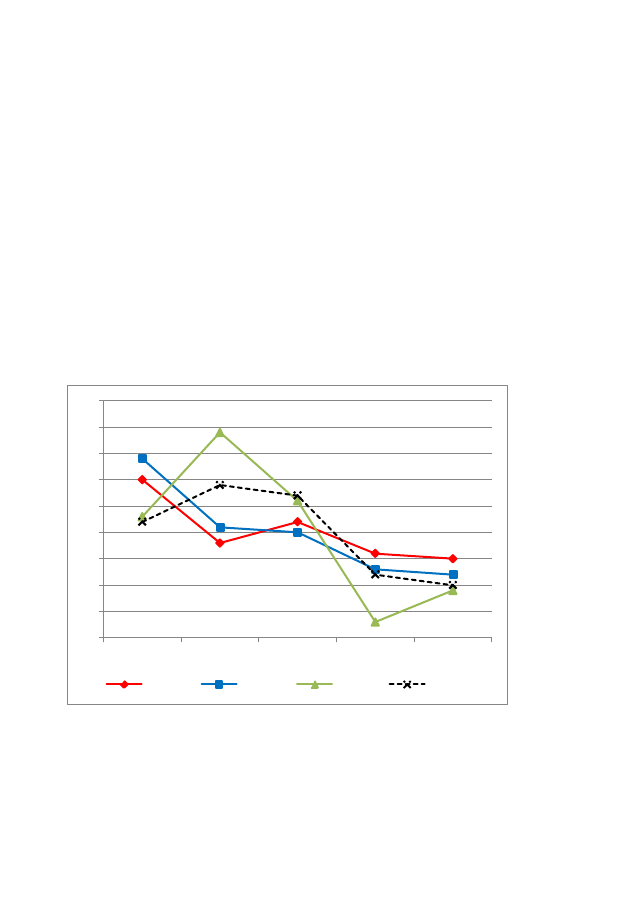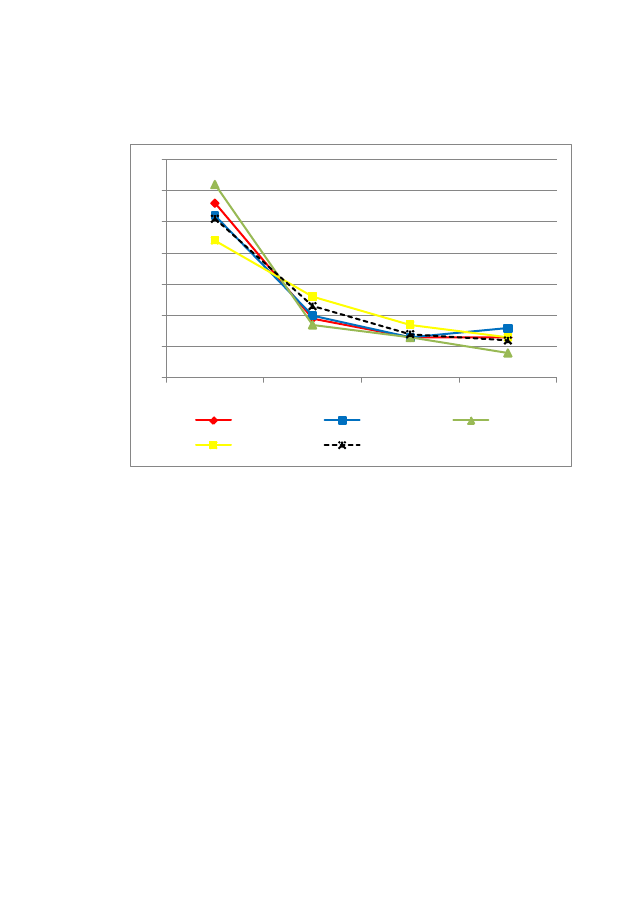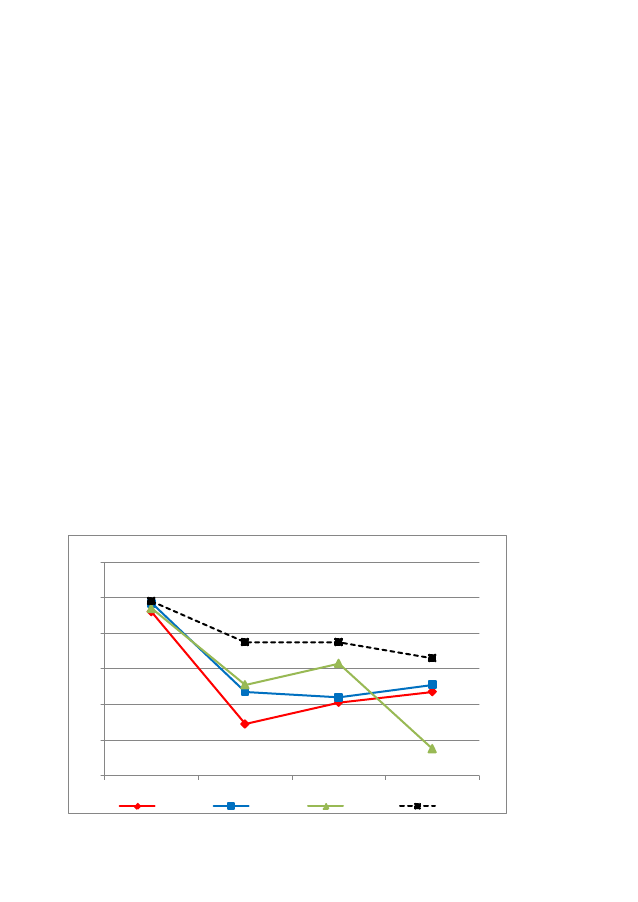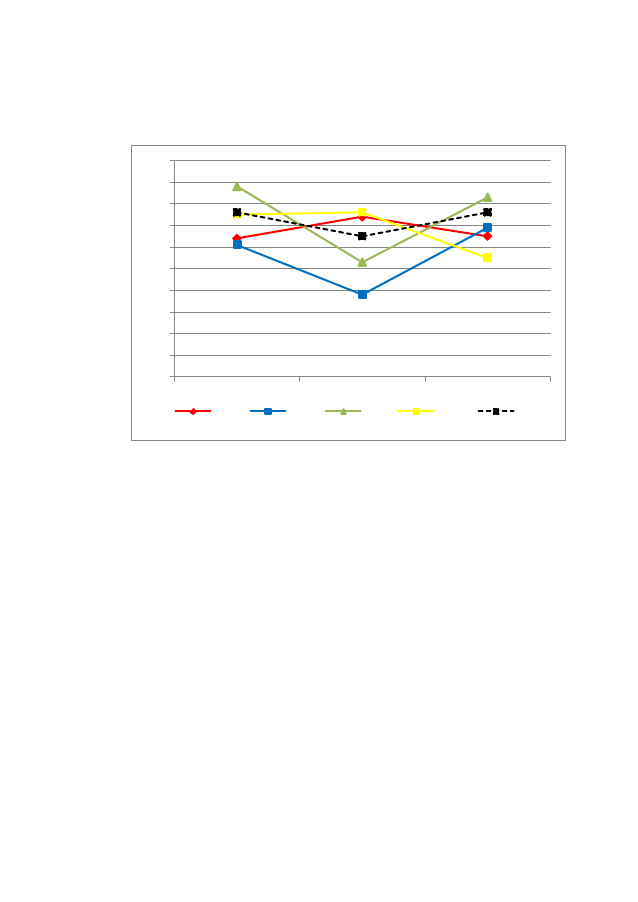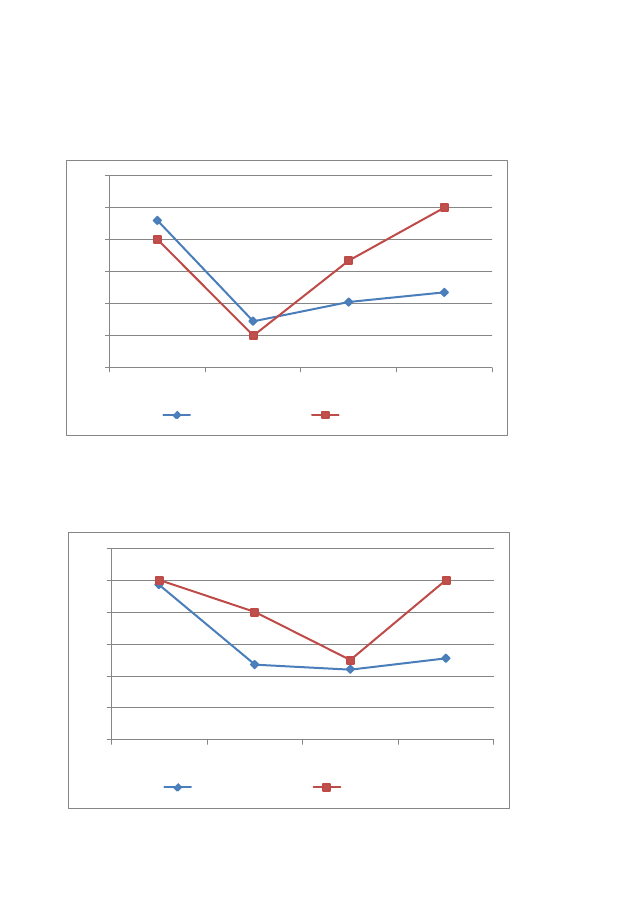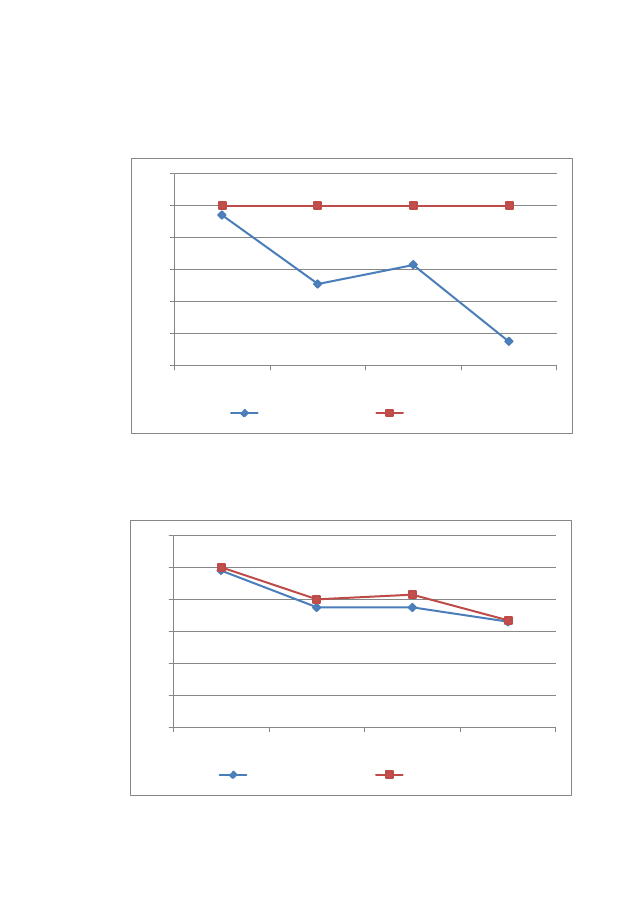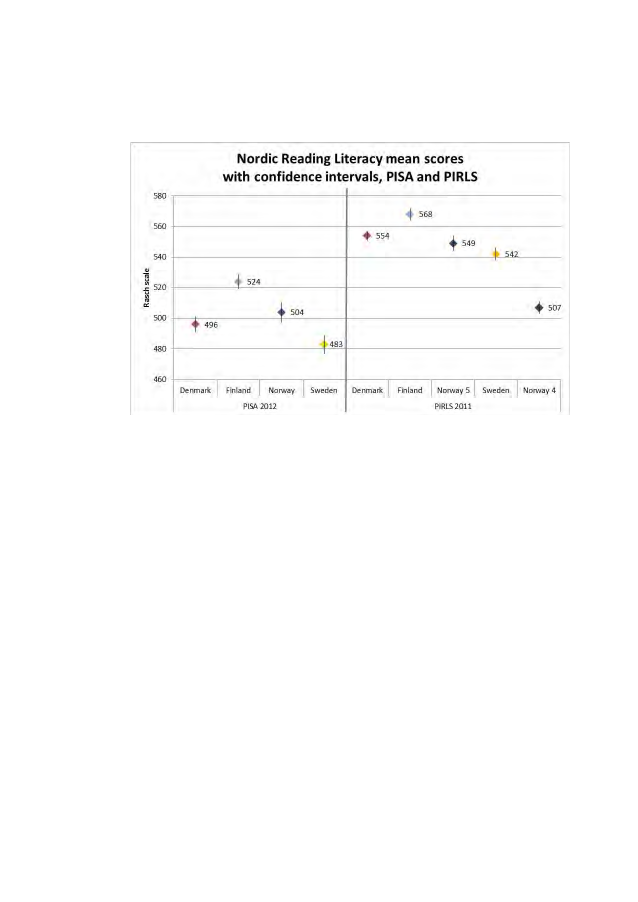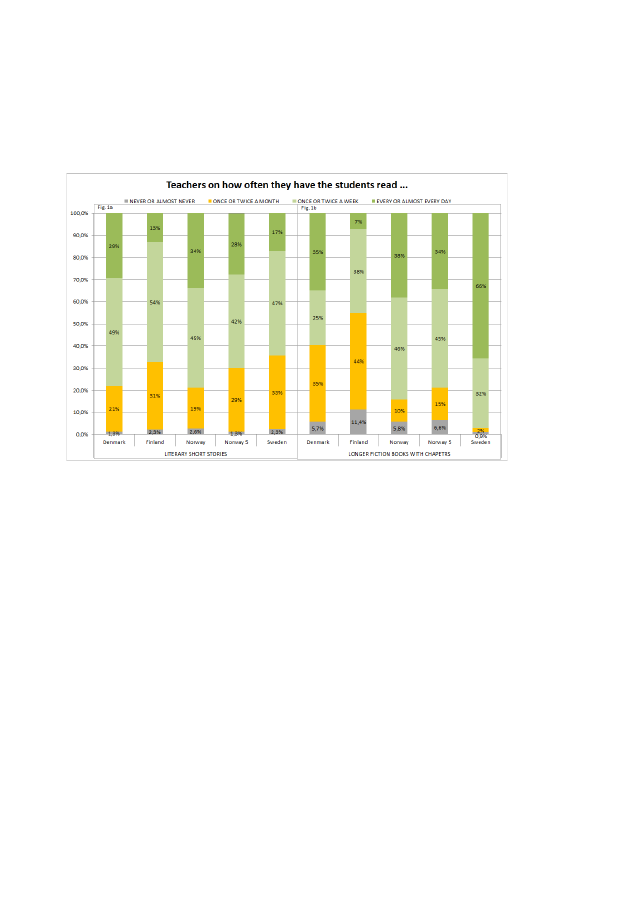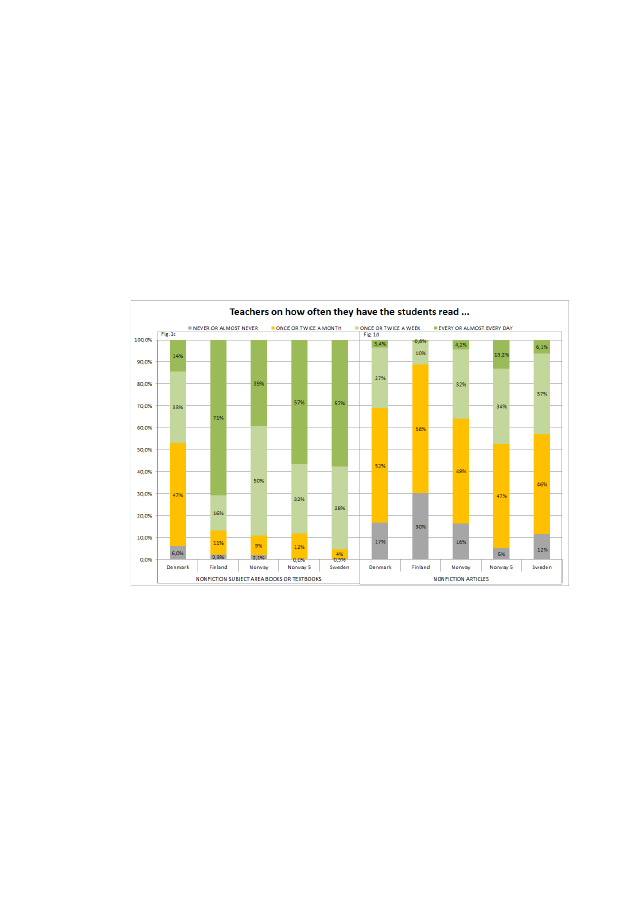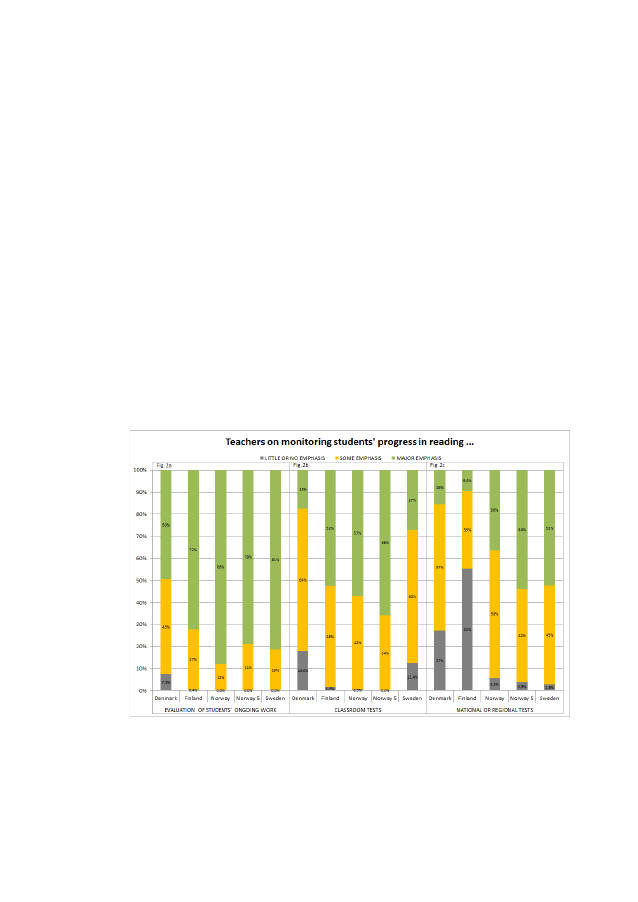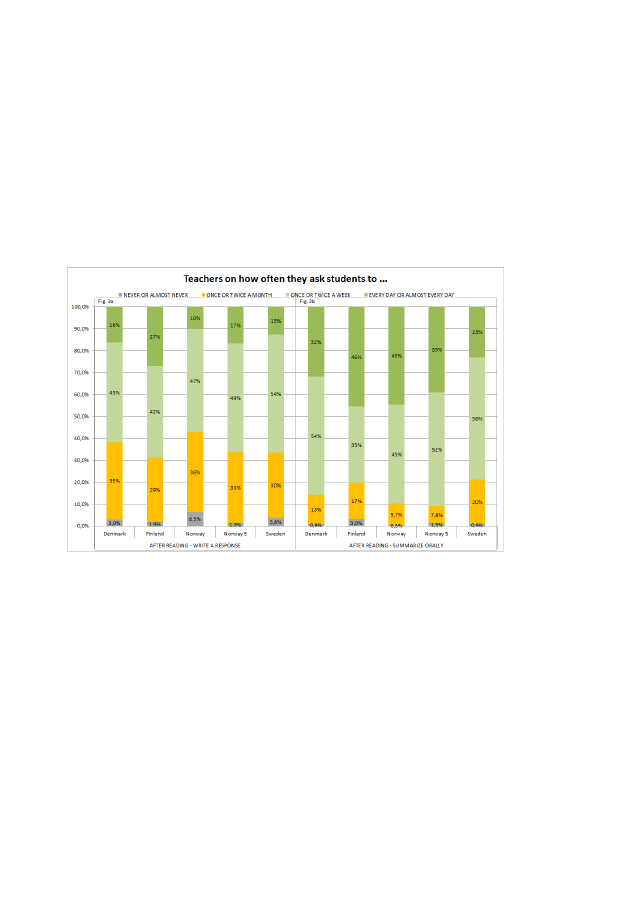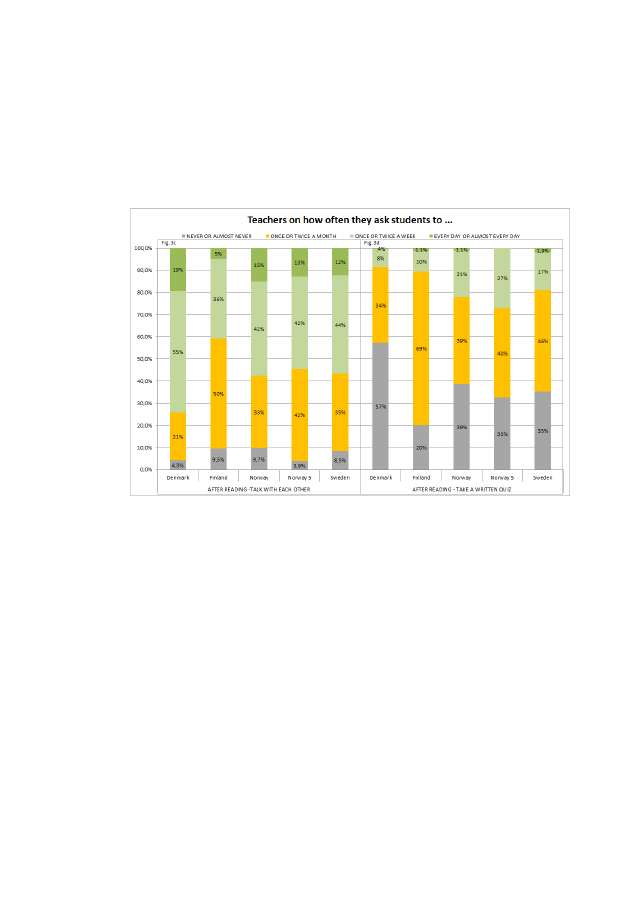Børne- og Undervisningsudvalget 2013-14
BUU Alm.del Bilag 168
Offentligt
Northern Lights onTIMSS and PIRLS 2011Differences and similarities in the Nordic countries
Northern Lights onTIMSS and PIRLS 2011Differences and similarities inthe Nordic countries
Kajsa Yang Hansen, Jan-Eric Gustafsson, Monica Rosén,Sari Sulkunen, Kari Nissinen, Pekka Kupari, Ragnar F. Ólafsson,Júlíus K. Björnsson, Liv Sissel Grønmo, Louise Rønberg,Jan Mejding, Inger Christin Borge and Arne Hole
TemaNord 2014:528
Northern Lights on TIMSS and PIRLS 2011Differences and similarities in the Nordic countriesKajsa Yang Hansen, Jan-Eric Gustafsson, Monica Rosén, Sari Sulkunen, Kari Nissinen,Pekka Kupari, Ragnar F. Ólafsson, Júlíus K. Björnsson, Liv Sissel Grønmo, Louise Rønberg,Jan Mejding, Inger Christin Borge and Arne HoleISBN 978-92-893-2772-5ISBN 978-92-893-2773-2 (EPUB)http://dx.doi.org/10.6027/TN2014-528TemaNord 2014:528ISSN 0908-6692�Nordic Council of Ministers 2014Layout: Hanne LebechCover photo: ImageSelectPrint: 07 Media a.sCopies: 416Printed in Norway
This publication has been published with financial support by the Nordic Council of Ministers.However, the contents of this publication do not necessarily reflect the views, policies or rec-ommendations of the Nordic Council of Ministers.www.norden.org/en/publicationsNordic co-operationNordic co-operationis one of the world’s most extensive forms of regional collaboration, involv-ing Denmark, Finland, Iceland, Norway, Sweden, and the Faroe Islands, Greenland, and Åland.Nordic co-operationhas firm traditions in politics, the economy, and culture. It plays animportant role in European and international collaboration, and aims at creating a strongNordic community in a strong Europe.Nordic co-operationseeks to safeguard Nordic and regional interests and principles in theglobal community. Common Nordic values help the region solidify its position as one of theworld’s most innovative and competitive.Nordic Council of MinistersVed Stranden 18DK-1061 Copenhagen KPhone (+45) 3396 0200www.norden.org
ContentForeword ........................................................................................................................................... 91. Introduction Northern Lights Report on TIMSS and PIRLS 2011 ..................... 111.1 What are TIMSS and PIRLS?................................................................................ 111.2 Why participate in international studies? ..................................................... 131.3 Northern Lights Report: secondary analyses across Nordiccountries .................................................................................................................... 162. Summary of the articles ..................................................................................................... 192.1 School performance differences and policy variations in Finland,Norway and Sweden .............................................................................................. 192.2 Characteristics of low and top performers in reading andmathematics. Exploratory analysis of 4th grade PIRLS and TIMSSdata in the Nordic countries. .............................................................................. 202.3 Teacher attitudes and practices in international studies andtheir relationship to PISA performance: Nordic countries in aninternational context ............................................................................................. 212.4 Mathematics in the Nordic countries – Trends and challenges instudents’ achievement in Norway, Sweden, Finland and Denmark ..... 222.5 A Nordic comparison of national objectives for readinginstruction and teachers’ responses about actual readingpractice ....................................................................................................................... 23
3. School performance differences and policy variations in Finland,Norway and Sweden ........................................................................................................... 253.1 Introduction.............................................................................................................. 253.2 Policy changes in Finland, Norway and Sweden ......................................... 263.3 Research on determinants of school and classroom variation inperformance ............................................................................................................. 293.4 Method........................................................................................................................ 323.5 Results......................................................................................................................... 363.6 Discussion and Conclusions ................................................................................ 413.7 References ................................................................................................................. 45
5. Teacher attitudes and practices in international studies and theirrelationships to PISA performance: Nordic countries in an internationalcontext ......................................................................................................................................855.1 Summary.....................................................................................................................855.2 Introduction ..............................................................................................................865.3 Models of cultural differences ............................................................................865.4 A culture of observation, feedback and improvement...............................885.5 The link with progress...........................................................................................895.6 Methods ......................................................................................................................915.7 Analysis .......................................................................................................................925.8 Results .........................................................................................................................925.9 Discussion ..................................................................................................................995.10 The Nordic countries........................................................................................... 1015.11 References............................................................................................................... 1045.12 Appendix. Data Analysis..................................................................................... 105
4. Characteristics of low and top performers in reading and mathematics.Exploratory analysis of 4thgrade PIRLS and TIMSS data in the Nordiccountries ..................................................................................................................................494.1 Summary.....................................................................................................................494.2 Introduction ..............................................................................................................504.3 Previous findings on predicting performance in reading andmathematics ..............................................................................................................524.4 Materials and methods ..........................................................................................554.5 Low and top performers in the Nordic countries ........................................584.6 Characteristics predicting low performance in reading and inmathematics ..............................................................................................................604.7 Characteristics predicting top performance in reading and inmathematics ..............................................................................................................664.8 Conclusions................................................................................................................694.9 References..................................................................................................................754.10 Appendix.....................................................................................................................80
6. Mathematics in the Nordic countries – Trends and challenges instudents’ achievement in Norway, Sweden, Finland and Denmark ................ 1076.1 Summary.................................................................................................................. 1076.2 Introduction ........................................................................................................... 1086.3 Mathematics Performance and School Emphasis on AcademicSuccess (SEAS)....................................................................................................... 1126.4 What Characterises Mathematics Performance in the Nordiccountries? ................................................................................................................ 1186.5 Students’ Opportunity to Learn (OTL) Mathematics ............................... 1216.6 Summary and Conclusions – Discussions on How to ImproveStudents’ Achievement in Mathematics in the Nordic Countries........ 1286.7 References............................................................................................................... 133
8. Sammendrag ........................................................................................................................ 167
7. A Nordic comparison of national objectives for reading instruction andteachers’ responses about actual reading practice ................................................ 1377.1 Summary .................................................................................................................. 1377.2 Introduction............................................................................................................ 1387.3 The present study ................................................................................................. 1427.4 Formal objectives of reading in the Nordic countries ............................. 1437.5 The Nordic countries’ definition of reading ability .................................. 1457.6 Research-based elements in the national objectives ............................... 1477.7 Analysis of Nordic teachers’ reading instruction based on datafrom PIRLS 2011 ................................................................................................... 1507.8 Materials and genres as a basis or supplement for readinginstruction ............................................................................................................... 1517.9 The use of literary and informational text types during readinginstruction ............................................................................................................... 1527.10 Activities during and after reading instruction ......................................... 1567.11 Emphasis on the evaluation of students’ progress in reading .............. 1597.12 Discussion................................................................................................................ 1617.13 References ............................................................................................................... 164
ForewordThis publication is the first Northern Lights edition based on the TIMSSand PIRLS studies. Earlier editions in the Northern Lights series havemainly focused on PISA. As with former editions, this one has receivedfinancial support from the Nordic Council of Ministers.An editorial group appointed by the Nordic Evaluation Network hasbeen responsible for developing the report. Ann-Kristin Boström, JouniVälijärvi, Ragnar F. Olafsson, Elsebeth Aller, Anne Berit Kavli and RolfVegar Olsen has participated in the editorial group. The group has beenled by Hallvard Thorsen. All the articles in this publication have been re-viewed by the editorial group.On behalf of the editorial group I would like to thank the authors whohave contributed with articles.We hope that this publication will be of interest for policymakers inthe Nordic countries and that we achieve our ambition to give input tofurther policy development.Oslo March 2014Hallvard Thorsen
1.
IntroductionNorthern Lights Report onTIMSS and PIRLS 2011
By Anne Berit Kavli and Hallvard Thorsen, The Norwegian Directorate forEducation and Training•How is reading literacy taught in Nordic classrooms, and how is thisinfluenced by the curricula?
These are some of the questions that are discussed in this collection of arti-cles that are based on the results of the IEA studies TIMSS and PIRLS 2011.Some of the articles also use data from the OECD studies PISA and TALIS.
•What characterizes the top performing pupils, and how can westimulate more pupils to perform at the highest levels?
•What is the relationship between school performance and policyvariations?
•How do teachers’ attitudes, beliefs and practices influence pupils’learning outcomes?
•How can we improve mathematics teaching in Nordic classrooms?
1.1 What are TIMSS and PIRLS?
Trends in Mathematics and Science Study (TIMSS) and Progress in Read-ing Literacy Study (PIRLS) are both large-scale international comparativestudies developed and conducted by the International Association for theEvaluation of Educational Achievement (IEA).
IEA was founded as a non-governmental membership organisation in1958, and it now has 70 members representing countries and educationsystems all over the world. The main goal for the IEA is to conduct largeinternational comparative studies of educational achievement and otheraspects of education, with the aim of gaining an in-depth understanding ofthe effects of policies and practices within and across systems of educa-tion. The IEA studies are grade-based studies designed to measure theeffect that schooling has on a variety of subjects. The subjects range frombasic skills in reading literacy to pupils’ skills in mathematics and science,computer literacy focusing on information and communication skills andpupils’ knowledge and understanding of democracy and citizenship. Inaddition to the tests, the IEA studies also contain surveys of backgroundinformation for pupils, teachers, principals and sometimes also parents.PIRLS is a trend study of the reading literacy capacity of pupils that arein their fourth year of compulsory schooling. The development of ade-quate reading literacy is crucial for learning in all other subjects; there-fore, it is of high importance for education systems to both assess andfollow the pupils’ reading skills development at an early stage, and to seehow this relates to reading instruction. Beginning in 2001, PIRLS has beenconducted every fifth year. A number of countries also participated inIEA’s first Reading Literacy Study, which was conducted in 1990–91, andit is possible to see trends even from that study’s findings.TIMSS assesses pupils’ knowledge and skills in mathematics and sci-ence at the end of Grade 4 and Grade 8. TIMSS has been conducted everyfourth year since 1995. In 2011, both TIMSS and PIRLS were conducted atthe same time, and many countries then used that opportunity to test thesame pupils in all three subjects at Grade 4.All of the Nordic countries except Iceland participated in TIMSS andPIRLS 2011 at Grade 4, and Finland, Norway and Sweden also participatedin TIMSS at Grade 8. Finland, Norway and Sweden tested the same pupilsin both in TIMSS and PIRLS at Grade 4, while Denmark chose to have dif-ferent samples for the two studies.TIMSS and PIRLS are comparative studies designed to test the out-comes of schooling in the tested subjects. The grade-based design hasstrong analytical powers because entire classes are tested. The tests arefollowed by background questionnaires sent to principals, parents, pupils12Northern Lights on TIMSS and PIRLS 2011
and teachers. The questions in those surveys address important aspects ofthe environment for teaching and learning. The studies are also followedby a system-level questionnaire that is sent to countries. That survey de-scribes the various curricula and school systems.Because the age for starting school varies across countries, the grade-based samples have caused some challenges in comparing results acrossthe Nordic countries. In Norway, children start school the year they turn 6without any preschool, while in Denmark, Sweden and Finland most pu-pils attend preschool the year they turn 6 and then start school at the ageof 7. In Denmark, this preschool year is compulsory, while in Finland andSweden most children attend preschool even if doing so is optional. Thecontent of the preschool year in Denmark, Finland and Sweden is quitecomparable to the Grade 1 curriculum taught in Norwegian schools. Thismeans that in Grade 5 Norwegian pupils are the same age and have hadthe same amount of schooling as pupils in Grade 4 in Denmark, Swedenand Finland. For this reason, Norway has tested a smaller additional sam-ple at Grade 5, in order to be able to perform more relevant comparisonswith other Nordic countries.The variation in average age across all participating countries at thetime of testing is quite large, ranging from 9.7 to 10.9 years for pupils inGrade 4. In Norway, the mean age in Grade 4 is 9.7 years, and in Grade 5the mean age is 10.7 years. In Denmark, Finland and Sweden the mean ageat the time of testing varies from 10.7 to 10.9 years. The effect of one yearof age difference is around half a standard deviation, approximately 40points on the scales. For the next rounds of TIMSS and PIRLS in 2015 and2016, it has been decided that Norway will participate by using pupils inGrade 5 and Grade 9 as their main sample in order to make the compari-sons more relevant.
1.2 Why participate in international studies?
In all the Nordic countries, participation in large scale international stud-ies of learning outcomes is an important part of the national strategy forthe quality assessment of educational systems. Textbox 1 and Textbox 213
Northern Lights on TIMSS and PIRLS 2011
provide an overview of the current international comparative studies andNordic participation in those studies.Participation in international comparative studies provides countrieswith an opportunity to assess the strengths and weaknesses of their educa-tional systems. The studies provide important measures of trends in stu-dents’ learning outcomes, and through surveys the countries also receiverich background information on students, their learning environment andthe organisation of the schools. This combination of tests and backgroundquestionnaires offers a unique basis for in-depth analyses of the relation-ship between the learning environment and learning outcomes.The results from these international studies should also always be ana-lysed in a national context. The studies can never give a complete pictureof a country´s educational system; however, combined with national dataand research they provide an important background assessing the qualityof schools. Basic skills, like reading and mathematics literacy, are of cru-cial importance for learning across all subjects, and longitudinal analyseshave shown that these competencies are also highly correlated with fur-thering the students’ educational achievement.
Textbox 1: Overview of current international studiesIEA Studies•
Trends in Mathematics and Science Study (TIMSS) aims to study interna-reports students’ achievement in mathematics and science. TIMSS also col-advanced mathematics and physics. The study also collects policy-relevantconducted again in 2015.
lects detailed information about curriculum and curriculum implementa-•
tional trends in mathematics and science achievement at the fourth andeighth grades. TIMSS has been conducted every four years since 1995, and itTIMSS Advancedassesses final-year secondary students’ achievement inand training. TIMSS Advanced was conducted in 1997 and 2008. It will be
tion, instructional practices and school resources.
data about curriculum emphasis, technology use and teacher preparation
14
Northern Lights on TIMSS and PIRLS 2011
•
Progress in International Reading Literacy Study (PIRLS) is an assessment of
reading comprehension that has been monitoring trends in achievement atinternationally-comparative data about how well children read after fourplementation, instructional practices and school resources in each partici-pating country.
five-year intervals in countries around the world since 2001. PIRLS provides
years of primary schooling. In addition, the study also collects extensive in-ePIRLSis a new extension of PIRLS that will be implemented in 2016.ePIRLS is an innovative assessment of online reading, making it possiblestudents to read, comprehend and interpret online information.ines the outcomes of student computer and information literacy (CIL)vember 2014. Grade 8 is the main target grade for ICILS.
formation about home supports for literacy, curriculum and curriculum im-•
for countries to assess how successful they are in preparing fourth gradeacross countries. CIL refers to an individual’s ability to use computers toinvestigate, create and communicate in order to participate effectively athome, at school, in the workplace and in the community. ICILS was con-
•
The International Computer and Information Literacy Study (ICILS) exam-ducted for the first time in 2013, and its findings will be reported in No-
OECD Studies•
designed to assess the extent to which students at the end of compulsoryeducation can apply their knowledge to real-life situations and becation of that knowledge, which can help analysts interpret the results.national, large-scale survey that focuses on the working conditions ofequipped for full participation in society. The information collectedthrough background questionnaires also provides a context for the appli-The OECD Teaching and Learning International Survey (TALIS) is an inter-teachers, the school climate and school leadership.
Programme for International Student Assessment (PISA) is a triennialby testing the skills and knowledge of 15-year-old students. The tests areinternational survey that aims to evaluate education systems worldwide
•
teachers and the learning environment in schools. TALIS covers themessuch as initial teacher education and professional development, teachers’instructional beliefs and pedagogical practices, appraisal and feedback to
Northern Lights on TIMSS and PIRLS 2011
15
Tabel: Nordic participation in international comparative studiesOrganisationIEAStudyTIMSS 2011TIMSS 2015TIMSS Advanced 2015PIRLS 2011PIRLS 2016ICILS 2013ICCS 2016PISA 2012PISA 2015TALIS 2013Participating CountriesDK, F, N, SDK, F, N, SN, SDK, F, N, SDK, F, N, SDK, NDK, N, SallallallTarget GroupGrade 4 (5) and 8Grade 4(5) and 8(9)Grade 11(12)Grade 4(5)Grade 4(5)Grade 8 (9)Grade 8 (9)15 year olds15 year oldsTeachers and principals
IEA
IEAIEAOECD
OECD
The Nordic countries provide a unique opportunity for relevant cross-country analyses. To a large extent, these countries share a common cul-tural background; however, at the same time they have chosen differentways of developing and organising their educational systems. The patternof achievement has also been rather different among these countries, andthis provides a background for relevant policy analyses where countriescan learn from each other.Since PISA 2000, the Nordic Council of Ministers´has funded Nordicanalytical reports after each PISA study; these are known as the “NorthernLights on PISA” reports. This report is the first Northern Lights reportbased on TIMSS and PIRLS, and the future intention is to use the entirerich datasets based on all the international studies.The aim of these analytical reports is to conduct common Nordic anal-yses, which can shed light on the equalities and differences between theNordic educational systems; this enables the countries to learn from eachother and use the results as input to further policy development. Theseanalyses will also provide input to the joint Nordic initiatives on educa-tional development and further research.16Northern Lights on TIMSS and PIRLS 2011
1.3 Northern Lights Report: secondary analysesacross Nordic countries
The articles in this volume aim to provide input for important policydiscussions and further policy development within the Nordic countries.Therefore, the main target groups are educational ministers and policy-makers at all levels.Since the first PISA results were published in 2001, we have seen alarge increase in the interest in and the impact of international studies,and especially the impact of PISA. A major policy-related message fromthese studies has been the focus on basic skills, like reading and mathe-matics literacy, and the importance of developing these skills as a basis forlearning across all subjects. Furthermore, the comparative internationalstudies have emphasised the importance of a qualified teacher force and,by that, they have also identified teacher education and professional de-velopment of teachers as being the main strategic measures for the im-provement of learning outcomes. As a consequence of this focus on thedevelopment of learning outcomes, many countries have also establishedand improved their national systems for quality assessment.All results from these international studies have to be analysed in a na-tional context in order to be relevant for further policy development. Bystimulating secondary analyses in a Nordic context, the Nordic countriescan receive valuable input to further the development of their educationalsystems. In this report, Nordic researchers have used data from TIMSS andPIRLS to gain research-based knowledge on important issues, such as thelearning environment and the opportunity for learning, characteristics oftop and low performers, the relationship between curriculum and teachingpractice, school performance differences and policy variations and teacher’sbeliefs and practices and their influence on learning outcomes.Researchers representing all the Nordic countries have contributed tothe articles in this book.
Northern Lights on TIMSS and PIRLS 2011
17
2. Summary of the articles2.1 School performance differences and policyvariations in Finland, Norway and Sweden
By Kajsa Yang Hansen, Jan-Eric Gustafsson and Monica Rosén, University ofGothenburgThis article focuses on the differences in the amount of variation in thelevel of performance between schools and classrooms in Grade 4 andGrade 8 in Finland, Norway and Sweden. Variability in the level of perfor-mance between different schools is of great interest both from a researchperspective and from a policy perspective. A large amount of observeddifferences in the level of performance between schools may be indicativeof a segregated school system in which students of different levels of abil-ity are sorted into different schools through processes of selection or self-selection. However, the performance variability between schools may alsoreflect differences in the level of the quality of the education offered bydifferent schools. Therefore, it is essential both to describe the amount ofperformance variability between schools and to determine which factorscould account for that variation.However, teaching typically is organised within more or less flexiblyorganised groups of students within a school, normally in the form of clas-ses. Given that different classes are normally taught by different teachersand that the students within a particular class influence one another, sys-tematic variation in the level of performance of different classes may beexpected. Therefore, in order to correctly determine the amount of schoolperformance differences, it is also necessary to determine the amount ofdifferences between the classes within different schools.This article concludes that there are substantial performance differ-ences between schools in Norway and Sweden, which may be due to both
segregation of living and school choice. In Finland, there are no schooldifferences; instead, very substantial classroom differences have beenidentified. It will be interesting for further research to determine thesources of these school and classroom differences.
2.2 Characteristics of low and top performers inreading and mathematics. Exploratory analysisof 4th grade PIRLS and TIMSS data in the Nordiccountries.By Sari Sulkunen, Kari Nissinen and Pekka Kupari, University of Jyväskylä
This article focuses on studying the background variables that predict lowand top performance in reading and mathematics during the primaryyears of school in four Nordic countries: Denmark, Finland, Norway andSweden. The purpose of the study is to provide information about low andtop performance in the two important key competences in order to devel-op educational systems to better meet the students’ diverse needs.PIRLS and TIMSS 2011 datasets were used in the analysis, which con-sisted of country-specific, three-level logistic regression models. Potentialpredictors for low and top performance were selected on the basis of ear-lier research findings.The results of the study showed that students’ basic skills in reading,their home resources, as well as the attitudes and activities related toreading and mathematics, predicted their performance in all the Nordiccountries. Class and school level variables predicted the students’ perfor-mance only in Denmark and Sweden, and they clearly played a less im-portant role in predicting performance than the student-level variables.The article emphasises the importance of providing individual supportfor pupils who need it. The individualized approach provides a solidframework for learning for students who have a weak start and studentswho have a disadvantage at school for one reason or another. In addition,top performers need individualized education, which includes materials20Northern Lights on TIMSS and PIRLS 2011
and tasks challenging enough to develop their competencies to the level oftheir full potential.The need for an individual approach places a great deal of pressure onteachers’ education and continuous professional development in topicssuch as teaching materials and methods, assessment and diagnosinglearning problems. Still, this article states that resources and opportuni-ties for continuous professional development for teachers are not ade-quate in the Nordic countries, particularly in Finland.
By Ragnar F. Ólafsson and Júlíus K. Björnsson, Educational Testing Institute– ReykjavikThe objective of this article is to explore cultural differences in teachingpractices and attitudes among European countries, with a special focus onNordic countries. The international PIRLS and TIMSS studies provide in-formation about teachers’ attitudes and practices as well as indicators ofpupils’ achievement in reading, math and science. This data provides anexcellent opportunity in which to explore cultural differences in the con-text of teaching and the findings could be used to identify certain types ofteaching practices that may be conducive to higher achievement in read-ing, mathematical and science literacy, which are assessed by PISA, anoth-er international OECD educational research program.Teachers’ responses to the PIRLS and TIMSS questions about theirteaching practices and their attitudes towards teaching in general, includingmath, reading and science, were subjected to Multidimensional ScalingAnalysis, based on OECD country means on each of 325 questionnaire items.Country groups (or clusters) were identified. These groups/clusters con-sisted of East-European, Mediterranean, Anglo-Saxon, Germanic and Nordiccountries, with some overlaps, indicating differences in teaching cultureNorthern Lights on TIMSS and PIRLS 201121
2.3 Teacher attitudes and practices ininternational studies and their relationship toPISA performance: Nordic countries in aninternational context
across these OECD countries. A main dimension of engagement was identi-fied differentiating largely between Eastern European and Western coun-tries. The former showed greater engagement, which consisted of greaterteacher self-confidence, greater use of specific teaching strategies, more testadministration and home-work follow up. In the PISA survey, a correlationwas found between engagement and progress in reading and math literacy,indicating that more engaging teaching practices are associated with moreprogress. The limitations of the approach are discussed.
2.4 Mathematics in the Nordic countries – Trendsand challenges in students’ achievement inNorway, Sweden, Finland and Denmark
By Liv Sissel Grønmo, Inger Christin Borge and Arne Hole, University of OsloThe aim of this article is to provide an overview of the important charac-teristics of mathematics as a school subject in Nordic countries, and topoint out the issues that should be addressed in order to improve stu-dents’ learning of mathematics. The analyses in the article provide evi-dence of the important educational factors that can explain the trends instudents’ achievement.The article presents results from analysing several factors that mayhave contributed to an understanding of trends in Norway, Sweden andFinland. This includes analyses and discussions of factors such as SchoolEmphasis on Academic Success (SEAS) and Students’ Opportunity toLearn (OTL) mathematics. The results of the analyses of what characteriz-es mathematics in schools in Nordic countries are also presented. Thisarticle also refers to the results from other international comparativestudies, such as PISA, TIMSS Advanced and TEDS-M, in order to obtain asolid basis for discussions about how to make improvement in students’achievement in mathematics.The analyses show that the increased School Emphasis on AcademicSuccess and improvement on students’ Opportunity to Learn that is meas-ured in Norwegian schools is an important factor for explaining the im-22Northern Lights on TIMSS and PIRLS 2011
proved results measured in Grade 8. This is likely to reflect changes ineducational policy and curriculum in Norway, with an increased emphasison students’ performance in schools. Another issue stressed in the articleis the low emphasis that Nordic countries place on pure mathematics,such as algebra. This low emphasis is likely to influence the possibility ofstudents pursuing studies and professions using advanced mathematics.
2.5 A Nordic comparison of national objectives forreading instruction and teachers’ responsesabout actual reading practice
By Louise Rønberg and Jan Mejding, Aarhus University, Department ofEducation (DPU)This article presents a comparison of the Nordic countries’ official objec-tives for reading and analyses of 1005 Nordic teachers’ responses regard-ing their reading instruction. The specificity and transparency vary greatlyin the objectives, from broad outlines in Norway to more specific andfunctional goals in Finland. It appears that the Finnish descriptions aremore aligned with current empirical research on reading comprehension.Swedish and Norwegian teachers have the most varied used of bothliterary and informational text types during a week, whereas Finnishteachers give informational texts a higher priority than literary texts – andthe opposite is apparent for Danish teachers. The Finnish and Norwegianteachers prioritise activities that enhance students’ oral reading fluency,which is important for reading comprehension development, to a greaterextent than teachers in Denmark and Sweden do. The Nordic teachers ingeneral appear to prioritise advanced comprehension activities to a lesserextent than teachers in the English-speaking countries do. Furthermore,Danish teachers put the least emphasis on formative assessments com-pared to the other Nordic countries.It is important that national objectives correspond with empirical re-search on reading instruction and that they are functional and transparentas they set the stage for the actual instruction in class.Northern Lights on TIMSS and PIRLS 201123
It is important that national objectives correspond with empirical re-search on reading instruction and that they are functional and transpar-ent as they set the stage for the actual instruction in class.
3. School performancedifferences and policyvariations in Finland,Norway and SwedenBy Kajsa Yang Hansen, Jan-Eric Gustafsson and Monica Rosén, University ofGothenburg
The present study focuses on differences in the amount of variation in levelof performance between schools and classrooms for Grade 4 and Grade 8 inFinland, Norway and Sweden. Variability in the level of performance be-tween different schools is of great interest both from research and policyperspectives. A large amount of observed differences in level of perfor-mance between schools may be indicative of a segregated school system inwhich students of different levels of ability are sorted into different schoolsthrough processes of selection or self-selection. However, performancevariability between schools may also reflect differences in the level of quali-ty of the education offered by different schools. It is therefore essential bothto describe the amount of performance variability between schools and todetermine which factors can account for the variation.However, teaching typically is organised within more or less flexiblyorganised groups of students within a school, normally in the form of clas-ses. Given that different classes are usually taught by different teachersand that the students within a particular class influence one another, sys-tematic variation in the level of performance of different classes may beexpected. In order to correctly determine the amount of school perfor-
3.1 Introduction
mance differences, it is, therefore, also necessary to determine the amountof differences between the classes within different schools. In the presentstudy, we use multi-level modelling techniques which separate the totalobserved variation into factors due to students, classes and schools. Datafrom the International Association for the Evaluation of EducationalAchievement (IEA) 2011 Trends in International Mathematics and ScienceStudy. (TIMSS) for Grade 4 and Grade 8 and Progress in InternationalReading Literacy Study (PIRLS) for Grade 4 form the basis of form thebasis of these analyses.We use a comparative approach focusing on differences between theNordic countries, and originally we aimed to include all five Nordic coun-tries in the analyses. Regrettably, however, Iceland did not participate inthe 2011 TIMSS and PIRLS studies, so we had to exclude Iceland from thestudy. For Denmark, data are available for Grade 4, but the sampling de-sign of the study was such that it does not allow separation of variationdue to schools and classes, so we had to exclude Denmark as well.Our study is, therefore, restricted to comparisons between Finland,Norway and Sweden. One main aim is to determine the magnitude ofschool and classroom performance differences for Grade 4 and Grade 8 inthe three countries, and another main aim is to investigate school andclassroom performance differences as a function of the location of theschool (urban or rural) and the students’ socio-economic status.Given that school and classroom performance differences are likely tobe determined by educational policies, we first review educational policychanges in Finland, Norway and Sweden.
3.2 Policy changes in Finland, Norway and Sweden
The educational systems in the Nordic countries share common valuesand ideologies for geographic, cultural and historical reasons. During thelast 50 years, the Nordic welfare state has been established as a uniquemodel, with a strong emphasis on equity of access to education of a highlevel of quality. During the 1960s and 1970s, the organisationally differen-tiated compulsory education was, in the Nordic countries, replaced withcomprehensive compulsory schooling for at least nine years.26Northern Lights on TIMSS and PIRLS 2011
The comprehensive education system in Finland was introduced in the1970s, following the introduction of comprehensive schooling in Swedenin the 1950s and in Norway in the 1960s (Kerr, Pekkarinen, & Uusitalo,2013). Since that time, Finland has not made any major school-reform(Sahlberg, 2010, 2011).However, in Finland too decision making has been decentralised. In1993, local authorities were given more autonomy in the allocation ofschool resources. They no longer received earmarked funds from the cen-tral government; instead, a lump sum was allocated that the local govern-ment could distribute to different purposes (see, e.g., Aho, Pitkänen, &Sahlberg, 2006; Rinne et al., 2002). Since there is no central regulationconcerning the allocation of school funds, there has been great diversityamong the principles of funding used by different local authorities.In 1998, it was made explicit that parents could choose any school fortheir child within the municipality. However, Finland has very few schoolsthat have providers other than the municipality. Since Finnish schools aredecentralised in terms of curricula, teaching methods and other pedagogi-cal practices and profiles, choice of school was a meaningful policy change.However, admission to school still gives priority to the local students.Schools are allowed to recruit students from outside the local catchmentarea only when there are places left after enrolment of the local students.
One global trend in educational reforms since the 1980s has been toadopt market principles in the realm of schooling. The reforms thus havebeen characterised by an orientation towards output of schooling ratherthan on input of resources. Decentralisation and deregulation of decisionmaking, accountability, choice and competition have also been clearlyvisible global trends (e.g. Sahlberg, 2011). Such educational reform ideashave also influenced the Nordic countries, albeit to a different extent andin different ways.
3.2.1
Finland
Northern Lights on TIMSS and PIRLS 2011
27
3.2.2
Norway has also implemented several reforms. During the 1980s and1990s, the previously strongly centralised school system was decentral-ised in several respects. A radical step towards decentralisation and localautonomy was the introduction of a new funding system in 1986, whichimplied a change from state-determined and earmarked allocation offunds to municipally decided priorities. The 1992 Local Government Actgave the local authorities and school leaders greater responsibility forallocating funds, providing education and assuring its quality. Schools alsogot an increased amount of autonomy, which included budgeting, re-cruitment, education management and competence development. Thelength of compulsory education in Norway was extended to 10 years in1997 (see Helg, Oslash, & Homme, 2006 for a more detailed comparisonbetween Norway and Sweden).The Norwegian Independent School Act of 2003 made it easier to startindependent schools and for authorised independent schools to receivefinancial support from the state. The number of independent compulsoryschools has increased since 2003, but still the great majority of students,approximately 98%, attend public schools. This is because enrolment inprimary and lower secondary schools still largely follows the proximityprinciple. However, in the large cities of Norway, systems of school-choicehave now been introduced, which are similar to those introduced in Fin-land, as is described above.
Norway
3.2.3
The Swedish school system has undergone fundamental changes since thelate 1980s (see SOU 2014:5 for a thorough description and analysis). In1989 the municipalities took over responsibility from the state as employ-ers for the teachers and other categories of school personnel. Further-more, decision-making concerning the organisation of schooling was de-centralised to the municipalities and considerable local autonomy wasallowed (Björklund et al., 2004). The decentralisation was thus followedby a deregulation of principles of funding, giving the municipalities con-siderable freedom to allocate funds. Many decisions, such as hiring teach-28Northern Lights on TIMSS and PIRLS 2011
Sweden
ers, were also decentralised to municipalities and schools, and here, too, apreviously strict system of eligibility of employment was deregulated.A voucher system to support free school choice was launched in thebeginning of the 1990s. It allows students to choose the school of theirpreference, which broke with the proximity principle and made it possiblefor students to choose schools outside of their neighbourhood. A system ofindependent (private) schools was introduced at the same time, and thenumber of students attending independent schools has successively in-creased. Currently, over 16% of the compulsory schools are independentschools, and around 13% of the comprehensive school students attendindependent schools.In 1994, new curricula, primarily describing which goals were to bereached but not how to reach them, were introduced for both compulsoryschool and for upper secondary school. New criterion-related gradingsystems were also introduced.These reforms, and others, have thoroughly transformed the Swedishschool system from being highly centralised and regulated to being verydecentralised and deregulated (Lundahl, 2002; Lundahl, et al., 2013).In summary, different educational policy changes in Finland, Norwayand Sweden have taken place, even though they all tend to be in the direc-tion of decentralisation and deregulation of decision making.
In this section, we provide a brief overview of research on factors influ-encing variation between schools and classrooms.
3.3 Research on determinants of school andclassroom variation in performance3.3.1Selection of students to different schools
Previous research has shown that the most important determinant ofschool level performance differences is the composition of the schools’student body with respect to social and ethnic background, and with re-spect to previous level of performance (e.g. Coleman, et al., 1966; Jencks &Mayer, 1990; Thrupp & Lupton, 2006; Yang, 2003).Northern Lights on TIMSS and PIRLS 2011
29
Explicit selection of students into schools on the basis of previous per-formance is an important factor in causing school differences. Thus, schoolsystems which use organisational differentiation to track students intoacademic and non-academic schools are characterised by very substantialschool performance differences, which may amount to 40–50% of thetotal amount of performance differences (see, e.g., OECD, 2013; Yang,2003). Germany and Austria are two examples of countries with suchorganisational differentiation. In the 1960s and 1970s, the Nordic coun-tries abolished organisational differentiation and introduced comprehen-sive compulsory schooling; so, in these countries, school performancedifferences are smaller and typically account for less than 10% of the totalperformance variation. However, even school differences of this magni-tude may be of substantial importance (e.g. Yang, 2003).Given that students often attend neighbourhood schools, the socio-economic and ethnic composition of schools tends to reflect the socio-demographic characteristics of the neighbourhood that the school serves.Therefore, residential segregation with respect to socio-economic back-ground and ethnicity affects school performance differences. If students andparents are allowed free school choice, this may also affect school perfor-mance differences. Students sorting themselves into schools on the basis ofsocio-economic and ethnic factors may cause school performance differ-ences to increase over and above the differences caused by residential seg-regation. However, students sorting themselves into schools on the basis ofambition and ability may reduce the effects of residential segregation butincrease segregation on the basis of performance (Gustafsson, 2006).There is quite a rich body of literature of international research on dif-ferent mechanisms of school segregation and their relative importance (see,e.g., Palardy, 2013; Sahlgren, 2013). However, results tend to be incon-sistent across studies, and so far little consensus has been achieved. Themain reason for this is probably that the mechanisms to a large extent arespecific to different cultures and school systems. This suggests that it isimportant to investigate these issues within the Nordic countries as well.As has been described above, there have in Finland, Norway and Swe-den been reforms of the educational systems, which to a varying extenthave allowed students and parents increased possibilities of school choice.30
Northern Lights on TIMSS and PIRLS 2011
This may influence the amount of school differences, and particularly so inurban areas where there are real possibilities of choice.If attendance at different schools is determined by residential segrega-tion and/or school choice, it may be expected that this will cause differ-ences between schools with respect to the students’ socio-economic status(SES). Such differences will also be reflected in performance differencesbetween schools, given the strong relationship between SES and perfor-mance, particularly at the school level (Sirin, 2005). These performancedifferences are likely to be observed primarily at the school level unlessallocation of students to different classrooms is made on the basis of pre-vious levels of performance.
Previous research has shown that classroom differences in level of per-formance often are of substantial magnitude and that they often are largerthan school differences (see e.g., Creemers & Kyriakides, 2008). Whileclassroom differences may be due to the sorting of students into differentclasses, they also may reflect differences in quality of instruction and dif-ferences between classrooms with respect to teacher–student relations,for example. Thus, the determinants of classroom differences in perfor-mance are likely to differ from those causing differences in level of per-formance between different schools.Furthermore, many studies confound variation between schools andclassrooms, by not separating their relative contributions. This is some-times due to the fact that this is not possible because it requires that thedifferent schools be represented by two or more classrooms and also thatthe classroom to which each student belongs is correctly represented inthe data. When school and classroom variance is confounded, the resultstypically are reported in terms of school differences. However, such esti-mated school differences may to a considerable extent reflect classroomdifferences. Confounding of the two sources of variation may thus system-atically bias the findings from studies on school variation.
3.3.2
Classroom differences in performance
Northern Lights on TIMSS and PIRLS 2011
31
3.3.3
The TIMSS and PIRLS data include information about different character-istics of the schools, such as location (urban/rural) and students’ socio-economic background. This information can be used to investigate thedifferent mechanisms behind school variation more closely. Thus, schoolchoice is mainly an urban phenomenon, and the effects of school choicecan therefore primarily be expected to be seen in urban areas. Residentialsegregation is also primarily an urban phenomenon, and it may be ex-pected that this is a more important factor for students in lower gradesthan in higher grades. Comparisons of differences in the amount of ob-served school performance differences in urban and rural schools forGrades 4 and 8 in the three countries may therefore be a way to investi-gate the impact of school choice and residential segregation.The following research questions will be focused upon:•What differences are there in the magnitude of school and classroomperformance differences for Grade 4 and Grade 8 in Finland, Norwayand Sweden?•To what extent are school and classroom performance differencesrelated to students’ SES in Finland, Norway and Sweden?•What differences are there in the magnitude of school and classroomperformance differences in urban and rural schools in Finland, Norwayand Sweden?
Research questions
3.4 Method3.4.1
Grade 4 and Grade 8 data from the TIMSS 2011 study were included in theanalyses. For Grade 4, data from the PIRLS 2011 study, take away “literacytest” were also included.32Northern Lights on TIMSS and PIRLS 2011
In this section, samples, variables and analytical methods used in theanalyses are presented.
Samples
Table 1: Number of Students, Classes and Schools Included in the AnalysesGrade 4FinlandRuralN studentsN classesN schoolsTotalN studentsN classesN schools2,11413378Urban2,38312563NorwayRural Urban71455402,29013575SwedenRural Urban1,62291612,52513174FinlandRural2,13713378Urban1,79110258Grade 8NorwayRural2,8334844UrbanSwedenRural Urban2,27711063
3,778 2,3901181118764
4,638268145
3,004185115
4,663252152
4,622258145
3,862170134
5,573266153
Note:The number of urban and rural students does not sum up to the total number of observa-tions due to missing information in the urban/rural variable for some schools.
As is shown in Table 1, there were 12,305 students, 412 schools and 705classes from Grade 4, and there were 14,057 students, 432 schools and694 classes from Grade 8 included in the analysis. The students were dis-tributed over urban and rural schools, and in general there were moreurban schools than rural and more students enrolled in urban schoolsthan were enrolled in rural schools.
3.4.2
The variables used in the analyses are presented in Table 2, along withdescriptive statistics.Information about number of books at home was used to measure SES.This variable in particular captures differences in cultural capital (Bour-dieu, 1997) among the homes, which has been shown to be the aspect ofSES most strongly tied to achievement (Gustafsson, Yang, & Rosén, 2013;Yang, 2003; Yang & Gustafsson, 2004). While there are also other indica-tors of SES available in the TIMSS and PIRLS data, such as level of parentaleducation, the variable representing number of books is the only onewhich is comparable across Grade 4 and Grade 8. We therefore use thisvariable as the sole indicator of SES.Mathematics and science achievement scores were outcome varia-bles for both Grade 4 and Grade 8, and for Grade 4 reading achievementwas also measured. These are estimated as so called “plausible values”which are multiple imputed scores, taking advantage of all availableNorthern Lights on TIMSS and PIRLS 201133
Variables
responses to both test items and background variables (von Davier,Gonzalez, & Mislevy, 2009).The variable “Type of community” is dummy coded, with rural schoolscoded as 0 and urban schools coded as 1. This variable is based a questionasking about “the type of immediate area of the school’s location”. Theresponse alternatives “Urban”, “Sub-urban” and “Medium size city” werecollapsed into the “urban” category, while “Small town” and “Remote ru-ral” were collapsed into the “rural” category. However, this information ismissing in the Grade 8 data for Norway. The question “how many peoplelive in the area where the school is located” was therefore used for classi-fying urban vs. rural schools in the Norwegian data. For both Grade 4 andGrade 8, communities where over 15,001 people live were defined asurban, while communities with less than 15,000 people were defined asrural. This implies that comparisons with respect to urban-rural differ-ences between Norway on the one hand, and Finland and Sweden on theother hand, should be interpreted with caution.
34
Northern Lights on TIMSS and PIRLS 2011
Table 2: Descriptive Statistics of the Variables Involved in the Analysis for Grade 4 and Grade 8 in Finland, Norway and SwedenGrade 4FinlandMeanSDMeanSDMeanSDMeanSDMeanSDMeanNorwaySwedenFinlandNorwaySwedenSDGrade 8
Variables
RuralNumber of books in the home (5 categories)Mathematics AchievementScience AchievementReading achievement3.265455715673.345465695693.295465705680.451.066866630.503.194964955080.661.136862610.483.255045355420.501.146674650.503.29514553-0.421.176466-0.491.096967633.224984975101.146864613.265065335441.186878673.33515553-1.206567-3.40479497-3.36475494-0.681.246474-1.236473-0.471.036765633.094894905031.136560603.255015345381.126571633.26512552-1.136264-3.27468486-1.216472-
3.17479507-3.32490516-3.23484510-0.49
1.266578-1.316984-1.296781-0.50
UrbanNumber of books in the home (5 categories)Mathematics AchievementScience AchievementReading achievement
TotalNumber of books in the home (5 categories)Mathematics AchievementScience AchievementReading achievement1Type of community (Urban vs. Rural)
Note: 1. The variable “Type of community” is a dummy variable, coded 1 for schools in urban areas and 0 for schools in rural areas.
Multi-level regression techniques were used to separate the total varia-tion in outcomes into three different parts: one that is due to the differ-ences among individual students within classrooms, a second that is dueto differences between classrooms within schools, and a third that is dueto performance differences between schools. The SES-related variable“Number of books at home” was then introduced into the analysis as anindependent variable, and it was investigated as to how much variancethis variable accounted for at each of the three levels of observation.The analyses were done with the Mixed Models procedure in the SPSSsystem, using individual case weights. The models were estimated usingthe first plausible value of the mathematics, science and reading achieve-ment scores.
3.4.3
Analytical method
3.5 Results3.5.1
The magnitude of between-school and between-class differences in math-ematics, science, and reading performance can be measured by the Intra-class Correlation Coefficient (ICC), which expresses the proportion of var-iation in a variable that can be explained by belonging to different groups,such as schools or classrooms. When there are large mean differences inthe level of performance between the different groups, the ICC becomeslarge. It may be noted though that even though the ICC is referred to as acorrelation measure, it is rather a squared correlation, expressing amountof variance explained. Table 3 shows the estimated ICCs for TIMSS andPIRLS 2011 in Finland, Norway and Sweden for Grades 4 and 8.
Results pertaining to the research questions are presented below.
School and classroom performance differences
36
Northern Lights on TIMSS and PIRLS 2011
Table 3: Estimated School- and Class-level ICCs of Mathematics, Science and Reading Achieve-ment for Grade 4 and Grade 8CountryLevelMathematicsFinlandClassSchoolClassSchoolClassSchool.13.04.08.10.03.15Grade 4Science.12.04.05.07.03.19Reading.13.02.02.09.04.15Grade 8Mathematics.26.02.02.10.07.08Science.30.03.03.10.09.12
Norway
Sweden
Different patterns of ICCs were observed in the three countries. For Fin-land, the school ICCs were close to zero, while the classroom ICCs werelarge, and particularly so for Grade 8 where the ICC approached .30 forboth mathematics and science. For Norway, the school ICCs were relative-ly large (around .10) for both Grade 4 and Grade 8. The classroom ICCswere small, even though estimates were somewhat higher for mathemat-ics and science for Grade 4. For Sweden, the school ICCs were large, andparticularly so for Grade 4. In Grade 8, there were both classroom- andschool-differences. These results thus show substantial differences be-tween the countries in terms of whether there are performance differ-ences at the classroom- or the school-level.One reason for these differences may be that students are sorted intoschools and classrooms according to different principles. In particular, it isof interest to investigate to what extent student SES accounts for the per-formance differences at different levels. Table 4 presents results from amodel in which the variable “Number of books at home” (or SES) has beenadded to the model. For each component of variance in the model, it isshown how much variance in performance the SES variable accounted for.However, for ICCs .06 or lower, the percentage estimates have been set tozero so as not to disturb the pattern of results with trivially small esti-mates. The .06 limit was somewhat arbitrarily chosen on the basis of con-siderations of both practical and statistical significance.
Northern Lights on TIMSS and PIRLS 2011
37
Table 4: Percentage of Variance in Mathematics, Science and Reading Achievement at School-,Class- and Student-levels Explained by Number of Books at HomeExplained VarianceMathematicsFinlandStudentClassSchoolStudentClassSchoolStudentClassSchool57051187041Grade 4Science813070299042Reading613060216044Grade 8Mathematics52001403692747Science1024014050132952
Norway
Sweden
In Sweden, school performance differences were to a substantial degree(40–50%) accounted for by the SES variable for both Grade 4 and Grade 8.For Norway, a similar pattern of results was observed for Grade 8, while theestimates were lower, but still large, for Grade 4 (20–30%). In Finland, SESdifferences did not account for any school performance differences, but itshould be noted that such differences were almost non-existent in Finland.In Finland, classroom differences were of substantial magnitude and,particularly for Grade 8, they could be accounted for by SES differences. InSweden, too, SES accounted for a part of the classroom differences (a littleless than 30%) for Grade 8, while for Grade 4, the amount of classroomdifferences was too small to make it meaningful to try to account for thesein terms of SES. In the Norwegian data, there were no classroom differ-ences, neither for Grade 4 nor in Grade 8.At the student level, SES accounted for more variance in Grade 8 than inGrade 4, with the exception of mathematics in Grade 8 in Finland, whereSES accounted for only 5% of the variance. This low relationship at the stu-dent level may be related to the large magnitude of classroom differences inFinland, which to a certain extent could be accounted for by SES.
Note:The explained variance has been set to zero for ICC estimates 0.06 or lower (see Table 3).
38
Northern Lights on TIMSS and PIRLS 2011
3.5.2
School and classroom performance differences
Table 5: Estimated School- and Class-level ICCs by Urban and Rural Schools for Grade 4 andGrade 8Grade 4MathematicsRuralFinlandClassSchoolClassSchoolClassSchool.13.03.07.09.04.06Urban.12.05.09.10.04.21ScienceRural.12.03.03.11.05.05Urban.10.05.06.07.03.27ReadingRural.14.00.02.07.05.04Urban.11.04.03.10.05.21Grade 8MathematicsRural.22.00.01.05.06.02Urban.22.06.02.11.09.14
Given that opportunities for choice of school vary across urban and ruralareas, it is of interest to investigate to what extent the amount of varianceassociated with schools and classrooms was different for schools locatedin different types of areas. Table 5 presents estimates of the ICCs for Grade4 and Grade 8.
among urban and rural schools
ScienceRural.26.01.01.05.06.05Urban.25.06.03.11.13.20
Norway
Sweden
For both Finland and Norway, the patterns of results were quite similaracross schools located in urban and rural areas, even though there was atendency for the magnitude of school differences to be larger for urbanschools than for rural schools for Grade 8. For Sweden, the results werestrikingly different – the amount of school differences being larger in ur-ban than in rural areas for both Grade 4 and Grade 8.Only small school differences in level of performance could thus be ob-served among rural schools in all three countries. Among urban schools,there were at least some school differences, and the pattern of differencesamong countries was similar for Grade 4 and Grade 8 – the largest differ-ences being observed for Sweden, the lowest for Finland and Norway inbetween. In Finland, there were large classroom differences among bothurban and rural schools in both grades, while in Sweden there were class-room differences primarily among urban schools for Grade 8. This sug-gests that the classroom differences observed in Sweden and Finland maybe due to different determinants.Northern Lights on TIMSS and PIRLS 201139
Table 6: Percentage of Variance Explained by Number of Books at Home in Urban and RuralSchools (%)Explained variance (%)MathematicsRuralFinlandStudentClassSchoolStudentClassSchoolStudentClassSchool4105012600Urban612047197044Grade 4ScienceRural7506011900Urban1021070318041ReadingRural4130500600Urban816070257044Grade 8MathematicsRural4160900900Urban72101704092859ScienceRural91508001100Urban1226017052143556
Norway
Sweden
Table 6 presents the amount of variance accounted for by SES. For Swe-den, the school differences for urban schools in both Grade 4 and Grade 8were to a large degree accounted for by SES. For the Swedish ruralschools, the ICCs were too small to allow estimation of SES impact. In theNorwegian data, school differences were accounted for by SES in bothrural and urban schools for both grades, except that estimates were notcomputed for Grade 8 in rural schools. For Finland, SES did not accountfor any school differences. Thus, for Sweden and Norway, SES accountedfor school variance in urban schools, and in Norway, this also held true forGrade 4 in rural schools. However, as has already been pointed out thesomewhat different definition of the urban-rural distinction in Norwaymakes it necessary to interpret this result with caution. For Grade 8 urbanschools, SES accounted for quite large amounts of school variance in Nor-way and Sweden.In Sweden, there were classroom differences in performance particu-larly among urban Grade 8 schools. These differences could, to around30%, be accounted for by SES, suggesting that in urban Grade 8 schoolsstudents may be allocated to different classrooms on the basis of level ofachievement. In Finland, there were classroom differences among bothrural and urban schools for both Grade 4 and Grade 8, but differenceswere larger in Grade 8. The classroom differences among urban Grade 440Northern Lights on TIMSS and PIRLS 2011
Note:The explained variance has been set to zero for ICC estimates 0.06 or lower (see Table 7).
schools could to a certain extent be accounted for by SES, as could theclassroom differences among urban Grade 8 schools.At the student level, SES accounted for somewhat less variance inachievement in rural schools than in urban schools in all three countries.In other respects, the patterns of relationships with SES were similar tothose observed in the overall analysis.One main aim of the current study is to determine the amount of schooland classroom performance differences in Grade 4 and Grade 8 in Finland,Norway and Sweden. Another main aim is to find explanations for thepatterns of differences between the countries and the grades, particularlyin terms of mechanisms related to the sorting of students across schools.The results show a clear pattern of school-level differences in perfor-mance between the three Nordic countries. In Finland, there are no schooldifferences, neither in Grade 4 nor in Grade 8. In Sweden, in contrast, theschool differences in level of performance are quite substantial, and this isalso the case for Norway. In Norway around 10% of the student differ-ences in performance are accounted for by school differences for bothGrade 4 and Grade 8. In Sweden, the school differences for Grade 8 are ofthe same size, but they are larger for Grade 4 (15–19%).In the academic year 2010–2011, 9% of the Swedish Grade 4 studentsattended independent schools, while 15% of the Grade 8 students did.These numbers indicate that the frequency of school choice in Sweden islarger in the higher grades of compulsory school than it is in the lowergrades. Therefore, the larger magnitude of school differences in Grade 4 isan unexpected result, given that the school differences are hypothesisedto be partly due to school choice.The Swedish results also show that for both Grade 4 and Grade 8, theschool differences are to a considerable extent accounted for by SES dif-ferences among the students. Thus, the quite substantial decrease in theamount of school differences between Grade 4 and Grade 8 is associatedwith a fairly stable, or slightly increasing, relationship to SES. This patternof results suggests that in Grade 4, the school differences are mainly dueNorthern Lights on TIMSS and PIRLS 201141
3.6 Discussion and Conclusions
to segregation of living, the SES impact being driven by cost of living indifferent parts of the three metropolitan areas in Sweden. The increasedopportunity for school choice in the higher grades may have been takenadvantage of by high SES students representing both lower and higherlevels of performance, but to some extent also by low SES students of highability and ambition. The combined effect of these different categories ofstudents sorting themselves into attractive schools could be decreasedperformance differences between schools, while the strength of relation-ship to SES is maintained. One possible explanation of the decrease in theamount of school differences in the higher grades in Sweden thus is thatincreased school choice counteracts the effects of segregation of living(see, e.g., Yang Hansen & Gustafsson, 2012). However, there also are otherpossible explanations. In 2010–2011, there were in Sweden about twiceas many Grade 8 students in each school than there were Grade 4 stu-dents. This implies that the catchment areas are larger in Grade 8 thanthey are in Grade 4, which in turn should imply that the catchment areasare more heterogeneous in Grade 8 than in Grade 4. This larger heteroge-neity could explain the smaller magnitude of school differences in Grade 8.In Norway, the amount of school differences remained constant be-tween Grade 4 and Grade 8, but SES accounted for a larger part of theschool differences for Grade 8 than for Grade 4. The smaller school differ-ences in level of performance and the relatively weak SES relationship forGrade 4 suggests that the impact of segregation of living is lower in Nor-way than it is in Sweden. It may be hypothesised that in Norway, too,more opportunities of school choice are made available for Grade 8, whichmay cause the SES impact on school differences to increase. It is interest-ing to note, however, that the magnitude of school differences does notincrease between Grade 4 and Grade 8, which suggests that the high SESstudents who actively choose their schools do not as a group performbetter than other students.For Swedish Grade 4 schools, there is a much higher school variationamong urban schools than among rural schools. Assuming that schoolvariation in the early school years is determined most of all by segregationof living, this suggests that such segregation is primarily an urban phe-nomenon in Sweden, and it may be hypothesised that it is particularlyconnected to the three metropolitan areas in Sweden. In Norway, there is42Northern Lights on TIMSS and PIRLS 2011
no difference in the amount of school variation for Grade 4 betweenschools in rural and urban areas, suggesting that there is an equal amountof segregation of living in the two categories of areas in Norway. ForGrade 8, there is only little school variation among rural schools in bothNorway and Sweden. This may be explained by the fact that such schoolstend to be larger than those for Grade 4 and therefore have more hetero-geneous catchment areas. In Norway, both the amount of school varianceand the SES impact is for Grade 8 higher in urban than in rural schools,which pattern suggests an impact of school choice. It should also be notedthat the classification of urban and rural schools in Norway was based onthe number of inhabitants in the community, rather than the communitytype, as used in Sweden and Finland.Perhaps the most striking empirical result of the present study is thevery substantial amount of classroom variation in Finland, amounting to12–13% for Grade 4 and at least twice as much for Grade 8. The estimatesare highly similar across rural and urban schools. This was an unexpectedfinding, and our study includes few variables that could help us understandthis result. In urban schools, a part of the between-class variance (around20–25%) is due to SES, and for rural Grade 8 schools, SES accounts forabout 13%. Thus, a part of the classroom variance may be due to the sortingof students into different classrooms on the basis of level of performance.Kupari and Nissinen (2013) also conducted three-level analyses of theTIMSS 2011 data and reported that the three-level model for the TIMSS 2011data suggests that about a quarter of the total variation is contributed by theclassroom differences. However, they did not report results from analyseswhich included explanatory variables, so this still remains to be done.One of the things that is clearly brought out in descriptions of the Finn-ish school system is the high degree of autonomy of the Finnish teachers(e.g. Sahlberg, 2011). With the exception of the matriculation exam at theend of upper secondary school, there is little external accountability andcontrol. Furthermore, the curriculum gives the teacher considerable free-dom in making decisions about what to teach and how to teach. A systemwhich decentralises much of the control of the teaching process to theteachers may, of course, also cause considerable variation both in how theteaching is organised and in the results that are achieved. Given that aconsiderable amount of information from the teachers is available in theNorthern Lights on TIMSS and PIRLS 201143
While the analyses reported in this article are based upon high qualitydata, it must be observed that the data and the analyses are also afflictedby limitations. One main limitation of the study is that it did not provepossible to include all Nordic countries, which was originally planned.Iceland did not participate at all in TIMSS 2011. While Denmark partici-pated in the TIMSS and PIRLS 2011 studies, the sampling design was suchthat the school and classroom variance could not be separated. It was,therefore, only possible to include three of the Nordic countries in thestudy. In future research, it may be worthwhile to try to take advantage ofthe data available in all the TIMSS and PIRLS studies. This could allowfurther countries to be included in the analyses, and it could also provideinteresting information about trends in the development of contributionsof variance at the school-, class-, and student-levels.It must also be emphasised that in some cases, the information was notoptimal for the purpose of separating school and classroom variance.Thus, for rural schools, it was quite common to have only one classroom,which caused standard errors for the estimated variance components tobe large. We also observed that in some cases, there were schools withonly one class comprising some 50–60 students. This is most likely a prob-lem of coding to which class the students belong, and it does seem essen-tial that care be taken to enter the full and correct information about this.Another limitation of the current study is that we have relied on thesingle measure of “Number of books at home” to represent SES. While thisis a simple and powerful indicator of cultural capital for both younger andolder students, it does not represent other important aspects of SES, suchas economic capital (Yang, 2003; Yang & Gustafsson, 2004). It is conceiva-ble that the mechanisms of segregation of living and school choice relatedifferentially to cultural and economic capital, so for both theoretical andempirical reasons, it may in future research be important to try to captureaspects of SES other than cultural capital.44Northern Lights on TIMSS and PIRLS 2011
questionnaires that are part of the TIMSS study, this information could beanalysed to see to what extent there are similarities and differencesamong the teachers at different schools.
3.6.1
Limitations
3.6.2
This article had the aim of describing and understanding sources of per-formance variation at different levels of observation in three Nordic coun-tries. We have found that there are performance differences betweenschools in Norway and Sweden, which may be due to both segregation ofliving and school choice. In Finland, there are no school differences, butinstead we have identified very substantial classroom differences. It willbe interesting tasks for further research to find the sources of these schooland classroom differences.Aho, E., Pitkänen, K., & Sahlberg, P. (2006). Policy development and reform princi-ples of basic and secondary education in Finland since 1968. Working Paper Se-ries: the World Bank.Björklund, A., P-A. Edin, P. Fredriksson, & A. Krueger (2004). Education, equality,and efficiency – An analysis of Swedish school reforms during the 1990s. IFAUreport, Uppsala. http://www.ifau.se/upload/pdf/se/2004/r04-01Bourdieu, P. (1997). The forms of capital. In A. H. Halsey, H. Lauder, P. Brown & A.Stuart-Wells (Eds.), Education: culture, economy, and society, (pp. 46–58). Ox-ford: Oxford University Press.Coleman, J. S., Campbell, E., Hobson, C., McPartland, J., Mood, F., Weinfeld, F. et al.(1966). Equality of educational opportunity. Washington, DC: U.S. GovernmentPrinting Office.
Yet another limitation of the study is that very few explanatory varia-bles were included in the study. This was partly intentional because of theexploratory nature of the three-level modelling approach that was adopt-ed. However, while SES does seem to be a powerful variable in accountingfor school differences, the school questionnaire includes many interestingmeasures of school characteristics that should be systematically analysedto better understand the sources of the school-level differences in perfor-mance observed in Norway and Sweden. As has already been discussed, italso is important to establish a deeper understanding of the substantialclassroom differences identified in the Finnish data.
Conclusions
3.7 References
Northern Lights on TIMSS and PIRLS 2011
45
Creemers, B. P. M., & Kyriakides, L. (2008). The dynamics of educational effective-ness: A contribution to policy, practice and theory in contemporary schools. Lon-don, UK: Routledge.Gustafsson, J.-E. (2006). Barns utbildningssituation. Bidrag till ett kommunaltbarnindex. Stockholm: Rädda Barnen.Gustafsson, J.-E., Yang Hansen, K., & Rosén, M. (2013). Effects of home backgroundon student achievement in reading, mathematics, and science at the fourth grade.In M. O. Martin & I. V. S., Mullis (Eds.), TIMSS and PIRLS 2011: Relationshipsamong reading, mathematics, and science achievement at the fourth grade–implications for early learning. Boston College, USA, Chestnut Hill, MA: TIMSS &PIRLS International Study Center, Boston College.Helg, I., Oslash, Y., & Homme A. (2006). Policy tools and institutional change: Com-paring education policies in Norway, Sweden and England. Journal of Public Poli-cy, 26(2), 141–165.Jencks, C., & Mayer, S. E. (1990). The social consequences of growing up in a poorneighborhood. In L. Lynn Jr. & M. G. H. McGeary (Eds.), Inner-city poverty in theUnited States (pp. 111–186). Washington, DC: National Academy Press.Kerr, S. P., Pekkarinen, T., & Uusitalo, R. (2013). School tracking and developmentof cognitive skills. Journal of Labor Economics, 31(3), 755–602.Kupari and Nissinen (2013). Background factors behind mathematics achievementin Finnish education context: Explanatory models based on TIMSS 1999 andTIMSS 2011 data. Paper presented at the European Conference on EducationalResearch (ECER), Istanbul, Turkey, September, 2013.Lundahl, L. (2002). Sweden: Decentralization, deregulation, quasi-markets – Andthen what? Journal of Education Policy, 17(6), 687–697.Lundahl, L., Erixon Arreman, I, Holm, A. S., & Lundström, U. (2013). Educationalmarketization the Swedish way. Education Inquiry, 4(3), 497–517.OECD (2013). PISA 2012 results: What students know and can do: student per-formance in mathematics, reading and science (volume I). Paris: OECD.Palardy, G. (2013). High school socioeconomic segregation and student attain-ment. American Educational Research Journal, 50(4), 714–754.Rinne, R., Kivirauma, J., & Simola, H. (2002). Shoots of revisionist education policyor just slow readjustment? The Finnish case of educational reconstruction. Jour-nal of Education Policy, 17(6), 643–58.Sahlberg, P. (2010). Educational change in Finland. In A. Hargreaves, M. Fullan, A.Lieberman & D. Hopkins (Eds.), Second international handbook of educationalchange (pp. 323–348). New York: Springer.Sahlberg, P. (2011). The fourth way of Finland. Journal of Educational Change,12(2), 173–185.Sahlgren, G. H. (2013). Dis-location. School choice, residential segregation andeducational inequality (Research report 4). Centre for Market Reform of Educa-tion, London.Sirin, S. R. (2005). Socioeconomic status and academic achievement: A meta-analytic. Review of Educational Research 75(3), 417–453.46Northern Lights on TIMSS and PIRLS 2011
SOU (2014:5). Staten får inte abdikera – om kommunalisering. Stockholm: Utbild-ningsdepartementet.Thrupp, M., & Lupton, R. (2006). Taking school contexts more seriously: The socialjustice challenge. British Journal of Educational Studies, 54(83), 308–328.von Davier, M., Gonzalez, E., & Mislevy, R. J. (2009). What are plausible values andwhy are they useful? IERI Monograph Series. Vol 2, 9–36.Yang, Y. (2003). Measuring socioeconomic status and its effects at individual andcollective levels: A cross-country comparison. Gothenburg: Acta UniversitatisGothoburgensis, Gothenburg Studies in Educational Science 193.Yang, Y., & Gustafsson, J.-E. (2004). Measuring socioeconomic status at individualand collective levels. Educational Research and Evaluation, 10(3), 259–288.Yang Hansen, K., & Gustafsson, J-E. (2012). Causes of educational segregation insweden – school choice or residential segregation. Paper presented at the Europe-an Conference on Educational Research (ECER), Cadiz, Spain, September, 2012.
Northern Lights on TIMSS and PIRLS 2011
47
4. Characteristics of low andtop performers in readingand mathematics.thExploratory analysis of 4grade PIRLS and TIMSS datain the Nordic countriesBy Sari Sulkunen, Kari Nissinen and Pekka Kupari,1University of Jyväskylä
This article focuses on studying the background variables predicting lowand top performance in reading and in mathematics during the primaryyears of school in the four Nordic countries of Denmark, Finland, Norwayand Sweden. The purpose of the study is to provide information about lowand top performance in the two important key competences in order todevelop educational systems to meet the students’ diverse needs better.The Progress in International Reading Literacy Study (PIRLS) and Trendsin International Mathematics and Science Study (TIMSS) 2011 datasetswere used in the analysis which comprised country-specific three-levellogistic regression models. Potential predictors for low and top perfor-Acknowledgements: The authors would like to thank the Norwegian co-NRC for PIRLS 2011 Victor van Daal,who generously provided the Norwegian Grade 5 data from the PIRLS 2011 study for the authors’ use.1
4.1 Summary
──────────────────────────
mance were selected on the basis of earlier research findings. The resultsof the study showed that students’ basic skills in reading and their homeresources as well as attitudes and activities related to reading and math-ematics predicted their performance in all the Nordic countries. Class andschool level variables predicted students’ performance only in Denmarkand in Sweden, and they had clearly less important roles in predictingperformance than student-level variables.It has been widely accepted in many countries that the quality of educa-tion is the key to any nation’s – and individual’s – success (OECD 2010a).Often, the perspective of economy is emphasised, but social and culturalwellbeing is also attributed to the quality and level of education. Conse-quently, international assessments of learning outcomes have become aregular exercise in many school systems as they can provide informationon the relative weaknesses and strengths of the system, which is useful indeveloping education. In all the currently implemented international as-sessments for children, young people and adults alike, the focus is on keycompetences (EC 2007), which are important basic skills in all furtherlearning at school and out of school, in everyday life, for active citizenshipand at work. These competences include reading and mathematics,whether they are in the framework of reading comprehension, readingliteracy or literacy, mathematics, mathematical literacy or numeracy (Mul-lis, Martin, Kennedy, Trong & Sainsbury 2009; Mullis, Martin, Ruddock,O’Sullivan & Preuschoff 2009; OECD 2009, 2012, 2013). In the recent In-ternational Association for the Evaluation of Educational Achievement(IEA) study PIRLS 2011, the focus was on Grade 4 students’ reading com-prehension, and in TIMSS 2011, which was implemented at the same time,the focus was on mathematics and science learning outcomes.In addition to average performance, countries participating in interna-tional assessments pay attention to both ends of the student distribution.The percentage of low-performers indicates the extent to which the edu-cational systems succeed in providing all students equal learning oppor-tunities and the support they need. A number of studies report that poor50Northern Lights on TIMSS and PIRLS 2011
4.2 Introduction
key competences are in relation to a higher risk of dropping out of uppersecondary education and becoming marginalised from further educationaltogether (e.g. OECD 2010b; Alatupa et al. 2007). This may also havesignificant consequences at the national level. The Organisation for Eco-nomic Co-operation and Development (OECD) has estimated that thequality of learning outcomes has greater impact than the length of theeducational careers on nations’ economic success (OECD 2010a). For anindividual, becoming marginalised would mean not only being left out ofeducation but also possibly lead to financial and social problems as well asa passive role in society. For the society, this would mean direct and indi-rect costs (HLG 2012, 23–26).At the higher end of the student distribution, the interest is on the per-centage of top performers, which indicates how well the country is pre-pared for the demands of expertise and innovations in the global context.Both ends of the student distribution have an important impact on theaverage performance as well. Several countries that have succeeded inimproving their average performance, such as in the PISA reading assess-ment, have decreased the percentage of low performers (OECD 2010c;Sulkunen 2013).The crucial question for countries is how to minimise the number oflow performers and maximise the number of top performers. In answer-ing this, more information is needed on the background factors related toperformance levels in reading and mathematics. The purpose of the cur-rent study is to explore the characteristics of the top and low performersin reading and mathematics in the four Nordic countries based on theenormously rich PIRLS and TIMSS 2011 datasets. The specific researchquestion is as follows: Which background variables predict the low andtop performance in reading and in mathematics? Additionally, recom-mendations for supporting low and top performers’ learning are given.
Northern Lights on TIMSS and PIRLS 2011
51
There are several national and international studies on the reading andmathematics performance of school-aged children and adolescents sum-marizing factors behind learning outcomes. Additionally, there are somestudies explaining low performance and somewhat fewer studies on topperformance. These studies may have rather different approaches interms of target group, data used, countries in question and methodology,but the results are still quite consistent. The focus in this section is onresearch relevant for the Nordic countries of Denmark, Finland, Norwayand Sweden.At the student level,home backgroundand, more specifically,socio-economic statusmeasured as parents’ educational level and/or occupation(Linnakylä, Malin & Taube 2004, 2006; Linnakylä & Malin 2007) or aseconomic, social and cultural status (Sulkunen & Nissinen 2012; Fredriks-son et al. 2012) is one of the most important predictors of reading literacyperformance. Home background also explains some of the differencesbetween schools (Myrberg & Rosen 2006; Alivernini 2013). However,there is evidence that cultural capital and social capital are more im-portant predictors of reading performance than the economic status of thefamily (Jensen & Turmo 2012). Especially in the case of low performers,this means that low appreciation of culture and reading at home – reflect-ed in the number of cultural items and books – is a risk for low perfor-mance in reading even if home is relatively wealthy (Sulkunen & Nissinen2012). The significance of home background for Grade 4 students’ readingliteracy is evident also in recent studies conducted on PIRLS 2011 data(Sulkunen & Nissinen 2013; van Daal et al. 2012).Also in mathematics, the results from various studies have shown thathome background and socio-economic statusare strongly related to stu-dents’ mathematics achievement in school (Kupari 2006; Kupari & Nis-sinen 2013; Lamb & Fullarton 2000; Marks et al. 2006). Brese andMirazchiyski (2008) focused on the TIMSS 2007 and PISA 2006 studiesand covered five aspects of home background, revealing that the variableson parents’ education and home possessions were strong predictors ofmathematics achievement. Furthermore, studies in numerous countries52Northern Lights on TIMSS and PIRLS 2011
4.3 Previous findings on predicting performance inreading and mathematics
have shown that the socio-economic profile of schools in strongly associ-ated with student mathematics achievement (McConney & Perry 2010).Another important home-related predictor of reading performance isstudents’language background.Home language differing from the lan-guage of instruction at school increases the risk for low performance inreading. This is evident in the most recent PIRLS data for Finland andNorway (Sulkunen & Nissinen 2013; van Daal et al. 2012) but also in thePISA 2009 study for the four Nordic countries participating in the study(Fredriksson et al. 2012; Sulkunen & Nissinen 2012) and also in earlierPISA studies (e.g. Linnakylä, Malin & Taube 2004, 2006; Linnakylä & Malin2007). The language used at home can differ from the school’s language inimmigrant families but also in, for instance, some Finnish-speaking fami-lies in Finland who send their children to Swedish-speaking schools (Har-ju-Luukkainen & Nissinen 2011). In mathematics, also, the accumulatedresearch evidence suggests that students’ language background (homelanguage differing from the language of instruction) and students’ readingability are related to their mathematics achievement (Brese &Mirazchiyski 2008; Brookhart 1997; Howie 2002).Moreover, individual students’ characteristics, attitudes and practicesare relevant in explaining reading performance. At Grade 4 in particular,students’basic reading skills,measured as accuracy and fluency of reading,are the most important predictors of the reading comprehension meas-ured in the PIRLS study (Sulkunen & Nissinen 2013; van Daal et al. 2012).However, the basic skills are relevant for reading literacy performancealso at the age of 15, as shown in the Danish study on PISA 2009 data inwhich vocabulary knowledge was the strongest predictor of low readingperformance after controlling for socio-economic status (Arnbak 2012).Student’sgenderis also related to reading performance. In several studiesbased on PISA and PIRLS data, boys are frequently overrepresentedamong the low performers (Linnakylä, Malin & Taube 2004, 2006; vanDaal et al. 2012; Fredriksson et al. 2012; Sulkunen & Nissinen 2012).However, when other variables are taken into account, gender is not nec-essarily a significant predictor of reading performance. For instance, inthe analysis of Finnish Grade 4 students’ reading performance in PIRLS2011 (Sulkunen & Nissinen 2013), the gender effect did not appear in thepredictive model. Instead, gender was replaced with variables highly cor-Northern Lights on TIMSS and PIRLS 201153
related with it, most importantlyreading engagement.This suggests that itis not the male gender as such that is a risk for low reading performancebut boys’ lower engagement compared to that of girls. Reading engage-ment (enjoyment of reading, diversity of reading and time spent reading)in fact mediates more than 40% of the gender differences in reading (Chiu& McBride-Chang 2006). OECD has estimated that if boys had the sameaverage of reading for enjoyment in the PISA 2009 study as girls, the gen-der gap would be reduced significantly, and in many countries it would bereduced to less than half of the current gender gap. For instance, in Den-mark it would almost disappear. (OECD 2010d.)In mathematics, research has repeatedly suggested thatmathematicsattitudeis a critical construct related to learning. Attitudes towards math-ematics are positively and significantly associated with mathematicsachievement in several countries: students with positive attitudes tend toachieve higher (Else-Quest et al. 2010; Winheller et al. 2013). Mathematicsattitude includes three important dimensions (Vandecandelaere et al.2012). Mathematics self-concept (confidence) concerns the students’ ca-pabilities to master the subject matter and to do well in mathematics.Enjoyment of mathematics involves the extent to which the student enjoysmathematics lessons and the subject matter itself. Finally, perceived valueof mathematics refers to the beliefs the student holds about the im-portance of mathematics in every day and later life. A substantial body ofresearch during the last three decades demonstrates that all these aspectsof mathematics attitude have emerged as salient predictors of achieve-ment in mathematics (e.g. Kupari 2006; Kupari & Nissinen 2013; Marsh &Hau 2004; Wilkins 2004). Earlier research ongenderdifferences in schoolmathematics (e.g. Else-Quest et al. 2010; Hyde et al. 1990) reveals thatdifferences in mathematics performance are small in many countries.However, findings seem to be dependent on the type of mathematicstasks: boys outperform girls especially on word problems, girls scorehigher on mental arithmetic and there are no gender differences found incomputational tasks (Hyde et al. 1990; Vermeer et al. 2000). Furthermore,girls show lower levels of confidence and comfort with mathematics, ex-perience more anxiety and consider themselves less competent. In linewith this, girls have a lower mathematics self-concept, lower self-perceived math skills and lower math motivation. Girls’ lower levels of54Northern Lights on TIMSS and PIRLS 2011
confidence can lead to a reliance of girls on (proven) rules and procedures(such as finger counting), whereas boys seem to use more intuitive strate-gies (Skaalvik & Rankin 1994).Compared to student-level predictors, school- and class-level factors arefound to play a clearly weaker role in predicting learning outcomes both inreading and mathematics (e.g. Schagen 2004 on PIRLS 2001 in the UK;Rolfsman et al. 2013). In a recent analysis of the Finnish students’ readingperformance in PIRLS 2011, Sulkunen and Nissinen (2013) found that notonly the variation of students’ outcomes, but also school and class differ-ences were explained almost solely by student-level characteristics. Thisimplies that the schools’ and teachers’ efforts and practices are not success-ful without engaging students in instruction – something affected also bystudents’ characteristics. In the Norwegian analysis of PIRLS 2011, howev-er, teachers’ instructional practices and number of computers in schoolsproved to have impact on reading performance (van Daal et al. 2012).The PIRLS 2011 study assessed reading literacy – students’ ability tounderstand and use written language forms required by the society andvalued by the individual (Mullis et al. 2009a, 11) – for Grade 4 in 45countries, including the Nordic countries Denmark, Finland, Norway andSweden. The TIMSS 2011 study, which assessed students’ learning out-comes in mathematics and science for Grade 4 and Grade 8 (Mullis et al.2009b, 19–21) coincided with PIRLS, offering the opportunity for as-sessing the reading, mathematics and science performance of the samestudents Grade 4. Three Nordic countries, Finland, Norway and Sweden,chose this option, while Denmark decided to implement PIRLS andTIMSS studies with separate student samples. As a national option, Nor-way implemented PIRLS and TIMSS studies also for Grade 5 students2──────────────────────────2
4.4 Materials and methods
In terms of age and formal instruction in reading and writing, Grade 5 in Norway is comparable withGrade 4 in other Nordic countries.
Northern Lights on TIMSS and PIRLS 2011
55
(see van Daal et al. 2012). Additionally, Finland, Norway and Swedenmeasured students’ basic decoding skills in relation to the PIRLS test tostudy to what extent the basic reading skills explain performance inPIRLS reading comprehension test.The material used in the present study consists of the Danish, Finnishand Swedish PIRLS 2011 and TIMSS 2011 Grade 4 datasets and the com-parable Norwegian Grade 5 data. These data provide an opportunity toconsider low and top performance especially from the perspective of earlyrecognition and support for low performance. The datasets include thestudent achievement data but also a large amount of background infor-mation gathered from students and their parents, teachers and schoolprincipals. Table 1 summarises the number of students and schools in thePIRLS and TIMSS datasets considered. The Norwegian Grade 5 dataset isessentially smaller than the other countries’ datasets, which reduces thepower of statistical analysis of Norwegian data compared to the others.This must be kept in mind when examining the results.The purpose of this study is to describe the characteristics of the topand low performers in reading and mathematics in the four Nordic coun-tries. More specifically: which background variables predict low and topperformance in reading and in mathematics?Table 1: Schools and students in the PIRLS and TIMSS 2011 datasets in the Nordic countriesNumber ofschools partici-pating in PIRLSDenmark Grade 4Finland Grade 4Norway Grade 5Sweden Grade 423214553152Students as-sessed in PIRLSNumber ofschools partici-pating in TIMSS21614554152Students as-sessed in TIMSS
For the purposes of this study, the low performers were defined as stu-dents below the intermediate international benchmark (475 score points)in PIRLS and in TIMSS. These students have achieved only the low interna-tional benchmark (400), if even that. Although nearly all the students inthe Nordic countries reached the low international benchmark in reading,the percentage of students staying at that level (and not reaching the in-termediate benchmark) varied (see Table 2 below). The top performerswere defined as those achieving the advanced international benchmark56Northern Lights on TIMSS and PIRLS 2011
4,5944,6401,2584,622
3,9874,6381,2704,482
(625 score points) in PIRLS and in TIMSS. In this article, the students withscores between 475 and 625 are called intermediate performers. In everycountry, the majority of students belong to this category, which is used asa reference group when examining the specific characteristics of low andtop performers.The factors affecting and predicting low and top performance were ana-lysed by three-level3logistic regression models. A preliminary collection ofvariables stemming from the PIRLS and TIMSS background questionnaireswere selected in the exploratory analyses of our study. The variables werechosen to cover student, home, teaching and school characteristics thathave been found important in previous research. The complete list of thevariables selected for modelling is given in the appendix. The first targetwas to find those background variables which statistically significantly dis-tinguish low performers from the reference group of intermediate perform-ers. The top performers were not included in this analysis. An analysis ofthe top performance was then carried out correspondingly. Here, the targetwas to find the background variables which significantly distinguish topperformers from intermediate performers. The low performers were notincluded in this analysis. These preliminary analyses were carried out sepa-rately for each country. Throughout the analyses, we used the conventional5% limit as the criterion of statistical significance.On the basis of preliminary modelling results, we then defined the finallist of explanatory variables for the logistic regression model. In this finallist, we included only those variables which appeared significant in atleast one country. In other words, the variables which did not show statis-tical significance in any of the countries were not considered any longer. Asimilar model, containing the remaining variables, was then fitted sepa-rately for each country, whenever possible.4The country-specific results──────────────────────────3
The sampling design of PIRLS and TIMSS studies produced datasets with a hierarchical structure: Fromeach sampled school (school level) 1–4 classes were sampled (class level) and the students of theseclasses were then measured (student level). Valid statistical analyses thus call for methodology taking thethree-level data structure into account.4The Danish data were lacking certain variables which were available for the other countries. This con-cerned especially the TIMSS data. See the appendix for details.
Northern Lights on TIMSS and PIRLS 2011
57
were eventually compared to illustrate similarities and differences be-tween the Nordic countries.
4.5 Low and top performers in the Nordic countries
The results of the PIRLS and TIMSS 2011 studies showed that the Nordiccountries participating in the studies had many similarities in studentperformance in reading and mathematics. The performance level wasrelatively high in reading: Finland and Denmark were among the topcountries, and Norway (Grade 5) and Sweden also had strong averageperformances. In mathematics, Finland was in the top 10 and Denmarkwas also very near the top. The performance level of Sweden and Norwaywas close to the centre point of the scale. Both in reading and in mathe-matics, the standard deviation was relatively small in all the countries,and in reading, the low international benchmark was achieved by nearlyall the students. These similarities would be expected in countries sharingsimilar philosophy of educational equity (Husén 1974; Malin 2005).In reading, the advanced international benchmark was achieved by18% of students in Finland, which was clearly more than in the otherNordic countries (Table 2). Likewise, the proportion of low performerswas smaller in Finland than in the other Nordic countries. The perfor-mance trend in Sweden seems somewhat alerting since both the averageperformance and the percentage of students achieving the advanced in-ternational benchmark have decreased steadily since 2001. In Denmarkand Norway, the trend is quite the opposite.5In mathematics (Table 3),the profile of Sweden differs from the other countries. The percentages ofstudents reaching the advanced international benchmark were considera-bly higher in Finland (12), Norway (12) and Denmark (10) than in Sweden(3). Correspondingly, no less than one-third of students in Sweden per-──────────────────────────5
58
Finland participated in the PIRLS study for the first time in 2011. Therefore, there are no trend dataavailable.
Northern Lights on TIMSS and PIRLS 2011
formed low, while in the other Nordic countries this proportion of stu-dents was between 13 and 18%.In reading, girls were top performers more often than boys, while inmathematics, the opposite was true. Low performance in reading wasconsistently more frequent among boys than among girls. Again, in math-ematics, the opposite was true, but the differences between genders wereslightly smaller. In reading, the advantage of girls was pronounced in Fin-land, and in mathematics, the gender difference in top performance waslargest in Norway.Table 2: Percentage of top and low performers in reading by gender in the Nordic countriesLow performers in readingAllDenmark Grade 4Finland Grade 4Norway Grade 5Sweden Grade 41281115Girls106913Boys14101317Top performers in readingAll1218109Girls14231211Boys111487
Table 3: Percentage of top and low performers in mathematics by gender in the Nordic countriesLow performers in mathematicsAllDenmark Grade 4Finland Grade 4Norway Grade 5Sweden Grade 418171333Girls19171434Boys17171332Top performers in mathematicsAll1012123Girls91092Boys1213164
The low performers in reading are not illiterate, but students achieving nohigher than the low international benchmark can only locate and repro-duce explicitly stated details or information in the (literary and informa-tional) texts. In contrast, students reaching the advanced benchmark canintegrate ideas and information across texts, interpret story events toprovide, for example, reasons and motivations with text-based supportand interpret complex information on texts and different parts of texts aswell as evaluate text features from the perspective of their function (Mul-lis et al. 2012). Thus, with top performance, the length and complexity oftexts increases, as does the diversity of the reading processes applied. Topperformers can also take a critical and evaluative stance towards the text.Northern Lights on TIMSS and PIRLS 201159
Respectively, low performers in mathematics are not totally unskilful.They demonstrate some basic mathematical knowledge, including addingand subtracting with whole numbers. In addition, they recognise familiargeometric shapes and can read and complete simple bar graphs and ta-bles. In contrast, students reaching the advanced benchmark have facili-ties in several mathematics topics. These students can solve a variety ofmulti-step problems involving whole numbers and show an increasingunderstanding of fractions and decimals. They can apply geometricknowledge about a range of shapes and solve problems involving area andperimeter. Finally, they can explain their reasoning and organise, inter-pret and represent data to solve two-step problems. (Mullis et al. 2012.)
A number of variables from the PIRLS and TIMSS background question-naires covering student, home, teaching and school characteristics wereintroduced as potential predictors of student performance (see the ap-pendix). For comparability reasons, it was chosen to fit as similar a modelas possible for every country instead of finding an optimally fitting modelfor each national dataset separately. This led to a model with a relativelylarge number of explanatory variables showing statistical significance,mainly in Denmark, Finland and Sweden. In Norway, there were only afew statistically significant variables due to the smaller dataset providingless statistical power for the analysis. This was seen especially in the caseof low performers in reading (Table 4), where only two variables werefound statistically significant.Table 4 summarises the results of the final model for low performance inthe PIRLS reading comprehension test in the four Nordic countries. Therespective results for mathematics are in Table 5. Except for binary varia-bles like gender, the regression coefficients given in the tables are computedfor standardised explanatory variables and can thus be interpreted as loga-rithmic odds ratios with respect to an increase of one standard deviation inthe explanatory variable. For binary variables, the odds ratios are definedwith respect to change from the reference category (“no event”) to the op-60Northern Lights on TIMSS and PIRLS 2011
4.6 Characteristics predicting low performance inreading and in mathematics
posite “event category”. The binary variables are indicated with (B) in thetables, and it is the event category which always is displayed (e.g. “Malegender”; the reference category is “Female gender”). Although the signifi-cant variables are not exactly the same for every country, they indicate thatin all countries student performance is basically related to the same generalcharacteristics: basic skills, home background and students’ attitudes. Thisfinding is consistent with earlier research results.Because the Norwegian dataset was smaller than the others, thusshowing fewer significant effects, we experimented with a specific modelfor Norway containing fewer explanatory variables. The results showedthat, in addition to command of early literacy tasks and confidence inreading, three variables – liking to read, number of books at home andparents’ tertiary education – also became significant in the same way as inother countries. This suggests that those factors could have been foundimportant in Norway also, had the dataset been larger.Overall, student- and home-related factors dominated and there wereonly occasional classroom- or school-related predictors of low perfor-mance. In all four countries, low performance in reading tended to coin-cide with students’ poor basic reading skills when beginning school andstill at Grade 4 as well as with relatively negative attitudes towards read-ing. Unfortunately, the reading accuracy and fluency test was not adminis-tered in Denmark, which slightly reduces the comparability of Danishresults to the others. Low resources at home (including parents’ educa-tion, number of books and other resources like availability of Internetconnection and own room for the student) also tended to predict low per-formance in all four Nordic countries.6Additionally, the risk for low per-formance increased if student’s home language differed from the school’sinstructional language in Finland and Sweden.
──────────────────────────6
This conclusion holds for Norway with reservation since the effects appeared significant in a moreparsimonious model only.
Northern Lights on TIMSS and PIRLS 2011
61
Table 4: Characteristics related to low performance in reading in Denmark, Finland, Norwayand SwedenDenmarkGrade 4StudentBasic skillsCommand of early literacy tasksReading accuracy and fluencyMale gender (B)AttitudesConfidence in readingLiking to readSchool enjoymentReading activitiesTime spent reading outside schoolComputer use at homeBeing bullied at schoolHomeResourcesEducational resources at homeNumber of books at homeParent has tertiary education (B)Language at home differs from school’s language (B)Parental support for learningEarly literacy activities with childClassroomInteresting texts and tasks in classUse of non-fiction texts in classActivating students after readingSchoolUrban school (B)Percentage of students speaking other than school’s languageFinlandGrade 4NorwayGrade 5SwedenGrade 4
-0.42na0.60-1.33-0.030.08-0.17-0.060.20
-0.55-0.310.20-0.62-0.32-0.09-0.240.230.11
-0.11-0.860.00-1.01-0.30-0.240.090.290.12
-0.25-0.58-0.08-0.68-0.32-0.290.020.040.12
-0.29-0.34-0.380.240.490.040.37-0.03-0.15-0.220.33
-0.16-0.30-0.460.560.360.060.33-0.100.05-0.140.07
0.37-0.27-0.52-0.300.080.010.26-0.380.12-0.600.27
-0.730.03-0.400.660.34-0.270.500.40-0.240.380.24
Statistically significant regression coefficients are in italic. Positive coefficients indicate increasedprobability of low performance.na=not administered.
Certain characteristics in Table 4 behave in a seemingly unexpected way.According to the results, parents’ support for learning as well as teachersproviding interesting texts and tasks to students and, in Sweden, frequent-ly using non-fiction materials in class as part of individualised instructionincrease the risk of low performance. Supposedly they indicate parents’and teachers’ efforts to help a struggling student, and therefore they mightbe considered consequences rather than causes of low performance.Moreover, student’s negative attitudes towards reading can partly be re-garded as consequences of poor literacy. It is likely that negative attitudes,such as low confidence, and literacy problems have a circular relationship:62Northern Lights on TIMSS and PIRLS 2011
low confidence decreases effort and motivation to read which in part re-sults in reading problems which in turn decrease confidence.There are, however, also differences between the Nordic countries. Boyswere overrepresented among low performers in reading in all the fourcountries (see Table 2), but male gender itself increased the risk for lowperformance only in Denmark. In the other countries, gender played no rolewhen other characteristics were controlled. This means that it is not neces-sarily gender that directly predicts low reading comprehension but othercharacteristics, such as the level of basic reading skills or reading attitudes,which are highly correlated with gender. In Sweden, teachers’ actions foractivating students seemed to reduce the risk of low performance.No school-level characteristics appeared significant in Finland andNorway. In Denmark, low performance was significantly associated withschool’s diverse student population in terms of languages spoken at home.In Sweden, urban schools had more low performers than rural schools.Reading activities like the reading of books, comics or magazines,which were not significant at all, or time spent reading, which was signifi-cant in Finland only, seem to play a lesser role than expected in explaininglow performance. This suggests that the low performers are quite similarto the intermediate ones in regards to free-time reading activity. This isdifferent from distinguishing the top performers from the intermediateones, where a few characteristics related to reading activities appearedsignificant (Table 6). The principal difference between the low and theintermediate performers seems to lie in their basic skills, which then isrelated to their attitudes and activities.
Northern Lights on TIMSS and PIRLS 2011
63
Table 5: Characteristics related to low performance in mathematics in Denmark, Finland,Norway and SwedenDenmarkGrade 4StudentBasic SkillsCommand of early numeracy tasksCommand of early literacy tasksReading accuracy and fluencyMale gender (B)AttitudesConfidence in mathematicsLiking mathematicsEngagement in mathematics classSchool enjoymentComputer use at homeHomeResourcesEducational resources at homeNumber of books at homeParent has tertiary education (B)Language at home differs from school’s language (B)Parental support for learningClassroomPercentage of students with language difficulties in classSchoolSchool sizeUrban school (B)Average wealth of school neighbourhoodFinlandGrade 4NorwayGrade 5SwedenGrade 4
nanana0.04-1.000.180.16-0.050.03
0.28--0.17-0.63-0.02-1.170.200.30-0.270.07
-0.550.16-0.920.52-0.69-0.410.50-0.020.05
-0.20-0.43-0.76-0.40-0.580.160.17-0.040.19
na-0.58na0.380.200.29-0.240.30-0.22
0.33-0.28-0.260.400.610.160.16-0.06-0.12
-0.20-0.51-1.340.640.190.05-0.14-0.10-0.06
-0.33-0.13-0.620.420.410.06-0.030.32-0.21
The results on prediction of low performance in the TIMSS mathematicstest are shown in Table 5. Unfortunately, the variables from parent ques-tionnaires were not available for Danish TIMSS analyses. Although thechoice of available predictors is somewhat narrower for mathematics thanfor reading, the overview of results is highly similar. Student- and home-related factors again dominated the results. Low performance was con-sistently predicted by students’ poor basic numeracy and literacy skillsand low educational resources at home. Parents’ support for learning andstudents’ low confidence in learning mathematics were strongly associat-ed with low performance. Also, students’ engagement in mathematicslearning was related to low performance. Like in reading, in mathematicsit is also likely that low confidence and poor skills have a circular relation-64Northern Lights on TIMSS and PIRLS 2011
Statistically significant regression coefficients are in italic. Positive coefficients indicate increasedprobability of low performance.na=not administered.
ship. Parent’s support and students’ engagement could be seen in thiscontext as consequences of learning difficulties because they indicateparents’ efforts and repeated teacher–student interactions in helping thestruggling students. Everything else being equal, students liking mathe-matics was also related to low mathematics performance in some coun-tries. This is somehow an unexpected result because there is ample re-search evidence that strong self-concept and positive attitudes produceenhanced performance in mathematics (cf. Else-Quest et al. 2013). Onepossible explanation for this could be the complex and intertwined waymathematics self-concept is associated with other dimensions of mathe-matics attitudes (liking mathematics and importance of mathematics). Insome other studies, also, mathematics self-concept has had a high positiveeffect on students’ performance, and meanwhile, liking mathematics hashad an opposite effect on performance (e.g. Kupari & Nissinen 2013; Win-heller et al. 2013; Meelissen & Luyten 2008). An alternative explanationcould be that low performing students may like mathematics activities assuch, but as a consequence of much interaction with teachers, studentssense that they are “in trouble” and this leads to reduced performance inmathematics (Winheller et al. 2013). Anyway, further research into thenature of the teacher–student interactions in mathematics classrooms andcomplex relationships between attitudinal dimensions and mathematicsperformance is needed to clarify this surprising result.Additional student-related predictors of low mathematics performancewere female gender (in Sweden), low school enjoyment (in Finland) andample computer use at home (in Sweden). In all countries, the risk for lowperformance increased if students’ home language differed from theschool’s instructional language.In mathematics, no teaching-related variables appeared significant inany of the countries. The only classroom variable that had an effect herewas the share of students in class having difficulties with the instructionlanguage, and this was observed in Denmark and Finland only. Someschool characteristics were again found significant in Denmark and Swe-den. In Sweden, the probability of low mathematics performance wasincreased if the school was urban or located in a neighbourhood of rela-tively low wealth. In Denmark, the effect of wealth of the neighbourhoodwas similar. The other variable that had a significant effect in DenmarkNorthern Lights on TIMSS and PIRLS 201165
was school size: The probability of low mathematics performance washigher in small schools when the other variables were controlled. Theschool size was not found to be significant in any other Nordic country.
4.7 Characteristics predicting top performance inreading and in mathematics
Many of the variables which relate to top performance in reading (Table6) or in mathematics (Table 7) have already been identified in predictinglow performance. At this time, they just operate at the opposite ends ofthe scale. Across the four Nordic countries, the probability of top perfor-mance in the PIRLS reading comprehension test increased if students hadsolid basic reading skills already when beginning school. Top performerscould, more likely than other students, read words and sentences andwrite words and some sentences when they entered school. They wereaccurate and fluent readers in the decoding test related to PIRLS as a Nor-dic option (in Finland and Sweden). The same also applied to top per-formers in the TIMSS mathematics test, suggesting that success in mathe-matics is closely related to success in reading. As expected, basic numera-cy skills when beginning school were also strongly related to success inmathematics.Students’ positive attitudes towards reading significantly predicted topperformance in all countries except Sweden. In Norway, the top perform-ers in reading reported enjoying school more than the intermediate ones(although not significantly), while in Sweden, the opposite was found.The quality and amount of reading activities also predicted top per-formance in reading: In Denmark, Finland, Norway (with reservation) andSweden, low amounts of non-fiction reading predicted top performance asdid avoiding excess computer use at home in Denmark and Finland. Mostlikely, this is a sign of reading relatively more literature and other materi-als and should not be interpreted as, for instance, an indication of non-fiction books’ low quality or insignificance to reading development. Con-sistently with this finding, in Finland and Sweden, the chances of top per-formance increased if students read plenty of stories instead of or in addi-tion to non-fiction books. In Finland, the reading of comics also showed a66Northern Lights on TIMSS and PIRLS 2011
positive effect. In Norway and Sweden, the probability of top performanceincreased along with time spent reading outside school.Table 6: Characteristics related to top performance in reading in Denmark, Finland, Norway andSwedenDenmarkGrade 4StudentBasic skillsCommand of early literacy tasksReading accuracy and fluencyMale gender (B)AttitudesConfidence in readingLiking to readSchool enjoymentReading activitiesReading of storiesReading of comicsReading of non-fiction booksTime spent reading outside schoolComputer use at homeBeing bullied at schoolHomeResourcesEducational resources at homeNumber of books at homeParent has tertiary education (B)Parent has full-time job (B)Language at home differs from school’s language (B)Parental support for learningEarly literacy activities with childClassroomInteresting texts and tasks in classUnderstanding teacher in classSchoolUrban school (B)Average wealth of school neighbourhoodResources to reading instructionInstructional language Finnish (B)FinlandGrade 4NorwayGrade 5SwedenGrade 4
0.39na-0.180.450.390.040.130.02-0.380.00-0.16-0.01
0.560.38-0.340.390.240.090.310.16-0.380.07-0.20-0.02
0.530.08-0.08-0.080.410.260.04-0.31-0.330.36-0.02-0.31
0.600.470.080.160.22-0.420.54-0.17-0.220.30-0.08-0.36
0.300.130.200.54-0.42-0.640.15-0.140.060.440.260.17na
0.280.250.220.02-0.48-0.460.14-0.180.260.020.000.090.34
-0.250.660.520.52-0.76-0.760.40-0.68-0.12-0.560.420.04na
0.040.480.560.90-0.74-0.400.210.110.19-0.16-0.030.05na
Statistically significant regression coefficients are in italic. Positive coefficients indicate increasedprobability of top performance.na=not administered
As for mathematics, high confidence increased the probability of top per-formance in all countries (Table 7). In Finland, low engagement in learn-ing mathematics was also related to perform high. Top performers’ lowengagement probably suggests that the topics discussed in the class areNorthern Lights on TIMSS and PIRLS 2011
67
too easy for them, and there is no need to be actively involved. In Finland,Norway and Sweden, boys were significantly more often top performersthan girls even when other variables were controlled. In these three coun-tries, the top performers also reported less free-time computer use thanthe intermediate performers.Home-related predictors of top performance in reading and in mathe-matics were largely similar in the Nordic countries. The probability of topperformance increased along with home resources. Remarkably, parentalsupport for learning was negatively associated with top performance bothin mathematics and reading. This may be because top performers takecare of their school work independently. This finding, however, requiresfurther research and discussion. It is also worth noting that across all fourcountries, the chances of a child being an excellent reader was significant-ly increased by parents’ activities which support child’s literacy develop-ment. These parents reported that they frequently did literacy activitieswith the child before the child began school (e.g. read books and told sto-ries, talked with the children about books, read and played word games).In the case of poor readers, the respective effect was evident only in Swe-den, which suggests that parents’ early support has been particularly im-portant to children who have reached top-level literacy.In reading, in all countries (with reservation for Norway), top readingperformance was predicted by matching languages at home and at school,suggesting that immigrant students’ probability of top performance islower than that of native students. In mathematics, the same was ob-served in Denmark only.In predicting top performance in mathematics, none of the classroom-or school-related factors were found significant. As for reading, a negativeassociation between teacher giving interesting texts and tasks and stu-dents’ top performance was observed in Finland and Norway (a similarassociation was found with low performers, also). In addition, Denmarkdiffered from other Nordic countries in that some school-related charac-teristics were also found to be significant, such as school’s resources forreading instruction (e.g. instructional materials, computers, computersoftware, library books, teachers specialized in reading). Urban andwealthy school neighbourhoods increased the probability of top perfor-mance, and the same occurred with good school resources. In Finland, the68Northern Lights on TIMSS and PIRLS 2011
Finnish-speaking schools showed more top readers than the Swedish-speaking schools.Table 7: Characteristics related to top performance in mathematics in Denmark, Finland, Nor-way and SwedenDenmarkGrade 4StudentBasic skillsCommand of early numeracy tasksCommand of early literacy tasksReading accuracy and fluencyMale gender (B)AttitudesConfidence in mathematicsEngagement in mathematics classComputer use at homeHomeResourcesEducational resources at homeNumber of books at homeParent has tertiary education (B)Language at home differs from school’s language (B)Parental support for learningClassroomno significant effectsSchoolno significant effectsFinlandGrade 4NorwayGrade 5SwedenGrade 4
nanana0.080.860.01-0.06
0.440.480.170.521.00-0.15-0.15
0.35-0.020.171.001.010.00-0.31
0.440.730.441.460.79-0.17-0.38
na0.64na-0.66-0.32
0.270.150.42-0.10-0.40
0.230.360.46-0.30-0.87
0.520.210.820.10-0.31
Statistically significant regression coefficients are in italic. Positive coefficients indicate increasedprobability of top performance.na=not administered
4.8 Conclusions4.8.1Reading
Overall, the analysis presented above paints a very consistent picture oflow and top performers in reading – and the picture is also consistent withprevious research. Low performers have a weaker start to school workand learning to read than top performers since they have not masteredbasic reading skills when they enter school, while the top performers of-ten already know how to read at that point. Additionally, low performers’Northern Lights on TIMSS and PIRLS 201169
home environment does not support reading development to the extentthat top performers’ homes do. Low performers often come from homewith relatively few educational resources – unlike top performers whoseparents have resources (such as books and education), like reading anddoing literacy-related activities with their children even before startingschool. In a reading-friendly environment, top performers develop a posi-tive attitude towards reading and engage in diverse and frequent readingactivities that contribute to life-long literacy development – unlike the lowperformers (Brooks 2013). The crucial question remains: how to bestsupport the students with less favourable home environments and levelsof basic skills to reach their full potential?This is a question that the European Union’s High Level Group on Literacyalso addressed in its report (HLG 2012) and emphasised the role of familysupport even at a very early age as well as high-quality early childhoodeducation and care (ECEC) accessible to all children. To help parents –particularly in the disadvantaged groups – support their children’s litera-cy development, they should be made aware of the many ways they cansupport children’s literacy development even starting at infancy. Thereare numerous awareness-raising campaigns and family literacy programsthat are relatively inexpensive and have demonstrated positive gains forchild literacy development (Carpentieri et al. 2011).Since basic reading skills before beginning school are such powerfulpredictors of reading performance, students struggling with the first stepsof learning to read should receive intensive support as early as possibleprovided by literacy specialists (HLG 2012, 45, 66–67). In the ideal case,children at risk of cognitive reading problems and of low performance areidentified and supported even before entering school. This is where thehigh-quality ECEC accessible to all children plays a central role as individ-ual learning needs can be addressed in childhood through language as-sessment (HLG 2012, 60–61). Alternatively, language assessment can alsobe implemented in a comprehensive health care system, such as the Finn-ish childcare clinic Neuvola, which regularly monitors children’s physicaland linguistic development. This requires resources for test developmentand carefully designed support implemented at home and in ECEC.In literacy instruction – whether it is in a play-like environment in ECECor at school – the first step is to acknowledge and appreciate the diverse70Northern Lights on TIMSS and PIRLS 2011
backgrounds and diverse literacy practices that children bring to school.This is something that seems obvious to most educational developers andmany teachers, but it is much easier said than done. Multicultural andmultilingual instruction in the widest sense of the words embrace immi-grant, minority and mainstream children from various social subgroupsand their diverse levels and forms of literacy (Cope & Kalantzis 1993). Inpractice, such instruction requires a flexible curriculum with ambitiousobjectives set to critical literacy and skilled teachers with an advancedunderstanding of literacy. Since students start their educational path atdifferent points, individualised pedagogical solutions are also needed.Their own language and literacy resources should be used as entry pointsto the literacies required and appreciated at school and in the society, butthe objectives of instruction should be equally ambitious for all students(Sulkunen 2013).Another important aspect of reading literacy instruction is continuoussupport in developing reading comprehension strategies. In order tostrengthen reading instruction, a wide range of reading strategies shouldbe included in the reading literacy curriculum, both at the primary andsecondary levels (Eurydice 2011). Reading strategies are something thatcan be taught in all subjects in all school years (HLG 2012; Garbe, Holle &Weinhold 2009). In primary school years, students need instruction main-ly on generic reading strategies which can be applied with all kinds oftexts, but already in early adolescence they benefit from more discipline-oriented strategies in the framework of disciplinary literacy (Fang 2012;Shanahan & Shanahan 2012). These rely on texts of different disciplinesbeing different as then are also effective reading comprehension strate-gies needed (see Fang & Coatoam 2013).In addition to cognitive support, children at risk of low performancealso need support in reading engagement: If students develop a positiverelationship with reading – and frequently read diverse materials – theywill have self-generated learning opportunities for reading (Guthrie &Wigfield 2000; also Linnakylä et al. 2004, 2006). For this purpose, theyneed successful reading experiences which will, in turn, enhance theirself-efficacy as readers (Garbe et al. 2010) and motivate them to engage inreading instead of using avoidance strategies typical for struggling read-ers (Guthrie & Davis 2003). In positive and relevant reading experiences,Northern Lights on TIMSS and PIRLS 201171
the choice of texts is crucial: There is evidence that in contexts and withtexts that are meaningful and interesting, perhaps even chosen by thestudent, struggling readers can show skilful reading (Ivey 1999; see alsoSulkunen & Arffman 2010). This requires that the gap between schools’and students’ textual landscapes does not grow too wide. There is, thus, aneed for a wide selection of texts used at school and also digital texts. Inaddition to (canonical) literary texts, magazines, newspapers, online newssites, blogs, fan-fiction and communicating through social media – thethings students may frequently read and write outside school – could andshould also be harnessed to the use of literacy pedagogy.
In mathematics, the analyses reveal quite a few factors which characteriseboth low and top performers in all Nordic countries. Our results are alsoconsistent with results reported in several previous studies. Lack of confi-dence in learning mathematics, low educational resources at home andweak basic numeracy and reading skills are typical for low performers inmathematics. In contrast, high confidence in mathematics, a favourablehome background and good skills in numeracy and reading are distinctivefor top performers in mathematics. It is important to emphasise here thatgood reading skills are also an essential element in learning mathematics.Furthermore, in certain countries, some other factors seem to increase thechances of a child being a low performer (e.g. to be a girl; low school en-joyment) in mathematics. Like in reading, an essential question is whatcan be done to support students with learning difficulties in primarymathematics?In many respects, current practices in mathematics instruction leadstudents to develop attitudes that value speed of computation, followingthe example of the teacher and correctness of answers over learning andunderstanding (e.g. Middleton & Spanias 1999). Therefore, it is importantto concentrate on creating a learning environment which can support allstudents as much as possible.Previous research has shown that re-teaching and clarification of con-tent usually has a significant negative effect on students’ mathematicsachievement (Akyüz & Berberoğlu 2010). This may be due to the reason72Northern Lights on TIMSS and PIRLS 2011
4.8.2
Mathematics
that low-performing students need re-teaching more than the high per-forming students. Continuous re-teaching can develop a negative percep-tion in students about their mathematics skills and consequently the lackof positive math self-confidence can lower their level of achievement.It is clear that attitudes towards mathematics are also a vital matter inmathematics education to low-performers (e.g. Singh et al. 2002; Middle-ton & Spanias 1999). Attitudes towards mathematics are developed early,are highly stable over time and are influenced greatly by teacher actionsand attitudes. Though stable, attitudes and motivation in mathematics canbe affected through careful instructional design, and therefore teachers’approaches and teaching methods play an important role. Creating inter-esting contexts within which problems are situated stimulates students’imaginations and illustrates to them that mathematics is useful in variousapplications. To allow students to feel successful in mathematics, teachersmust structure tasks such that they present an appropriate challenge anddifficulty for students. Thus, mathematics activities must be difficultenough that students are not bored, yet tasks must allow for a high degreeof success given appropriate effort by the students (Middleton & Spanias1999). Furthermore, the immediate opportunities for remedial instructionand extra support both in school and at home to students having learningdifficulties are necessary in order to decrease the number of low perform-ers in mathematics.
4.8.3
Nordic countries have had a long tradition in aiming for equity in educa-tion. This has meant providing all students equally solid education butalso supporting the lowest performers, reflecting the radical view of equi-ty (Husén 1974; Malin 2005). The significant role of home resources inpredicting and explaining students’ learning outcomes, however, showsthat even in the Nordic countries there is still lot of work to do in this area.However, equity as an educational aim is still relevant as there is plenty ofevidence showing that the most successful school systems succeed inevening out the impact of students’ home backgrounds on learning out-comes (OECD 2010e, 27; also Garbe et al. 2010).
Solid ground for learning at school
Northern Lights on TIMSS and PIRLS 2011
73
In order to further pursue educational equity as well as high averageperformance, schools need to have enough resources and professionals toprovide individual support for the students who need it. This means stu-dents from disadvantaged families but also students whose home lan-guage differs from the school’s language and students with learning disa-bilities. As mentioned above, support measures are most effective whenprovided as early as possible. In addition to proper resources for schools,this calls for active cooperation between homes, ECEC and schools.The individualised approach provides a solid framework for learningfor students with a weak start and disadvantages at school for one reasonor another. However, this approach makes teaching a very demandingtask. This puts a lot of pressure on teachers’ education and continuousprofessional development in topics such as teaching materials and meth-ods, assessment and diagnosing learning problems. And yet, in each of theNordic countries, there is a significant number of teachers who did notparticipate in any kind of professional development activity related toreading and mathematics during the two-year period prior to thePIRLS/TIMSS studies. For example, in reading, the percentage of theseteachers varied from 23% in Sweden to 32% in Norway, with the notableexception of Finland, where as much as 68% of teachers had not partici-pated in professional development in the same time frame. Clearly, re-sources and opportunities for continuous professional development forteachers are not adequate in the Nordic countries, particularly in Finland.Moreover, top-performers need individualised education; they needmaterials and tasks challenging enough to develop their competencesfurther to the level of their full potential. In the present study, it was strik-ing that the top students lacked support at home. It may seem that thesestudents do not need support for their school work from parents, but theydo need teachers and parents to show interest in their school work andsupport and challenge them to learn – not forgetting enjoyment in learn-ing and at school.
74
Northern Lights on TIMSS and PIRLS 2011
Akyüz, G., & Berberoğlu, G. (2010). Teacher and classroom characteristics andtheir relations to mathematics achievement of the students in the TIMSS. NewHorizon in Education, 58(1), 77–95.Alatupa, S., Karppinen, K., Keltikangas-Järvinen, L., & Savioja, H. (2007). Koulu,syrjäytyminen ja sosiaalinen pääoma. Löytyykö huono-osaisuuden syy koulustavai oppilaasta? Sitra: Helsinki.Alvernini, F. (2013). An exploration of the gap between highest and lowest abilityreaders across 20 countries. Educational Studies, 39(4), 399–417. http://dx.doi.org/10.1080/03055698.2013.767187Arnbak, E. (2012). To what extent do basic skills predict students’ PISA readingscore? In N. Egelund (Ed.), Northern Lights on PISA 2009 – focus on reading, pp.75–90. TemaNord 2012: 501. Nordic Council of Ministers.Brese, F., & Mirazchiyski, P. (2010). Measuring students’ family background inlarge-scale education studies. Paper presented in the 4thIEA International Re-search Conference. July 1–3. Gothenburg, Sweden. Retrieved fromhttp://www.iea.nl/irc-2010.htmlBrookhart, S. M. (1997). Effects of the classroom assessment environment onmathematics and science achievement. Journal of Educational Research, 90,323–330.Brooks, G. (2013). The prerequisites for successful teaching and learning of litera-cy. European Journal of Education, 48(4). doi:10.1111/ejed.12049Carpentieri, J., Fairfax-Cholmeley, K., Litster, J., & Vorhaus, J. (2011). Family litera-cy in Europe: Using parental support initiatives to enhance early literacy devel-opment. London, Institute of Education.Chiu, M. M., & McBride-Chang, C. (2006). Gender, context, and reading: A compari-son of students in 43 countries. Scientific Studies of Reading, 10, 331–362.Cope, B., & Kalantzis, M. (1993). The power of literacy and the literacy of power. InB. Cope & M. Kalantzis (Eds.), The powers of literacy: A genre approach to teach-ing writing, pp. 63–89. London: The Falmer Press.EC (2007). Key competencies for lifelong learning. European framework. Europe-an Communities, Education and Culture DG: Luxembourg.Else-Quest, N. M., Hyde, J. S., & Linn, M. C. (2010). Cross-national patterns ofgender differences in mathematics: meta-analysis. Psychological Bulletin, 136(1),103–127.Eurydice (2011). Teaching reading in Europe: Contexts, policies and practices.Eurydice.Fang, Z. (2012). Language correlates of disciplinary literacy. Topics in LanguageDisorders, 32, 19–34.Fang, Z., & Coatoam, S. (2013). Disciplinary literacy. What you want to know aboutit. Journal of Adolescent and Adult Literacy, 56, 627–632.75
4.9 References
Northern Lights on TIMSS and PIRLS 2011
76
Fredriksson, U., Rasmusson, M., & Sundgren, M. (2012). Weak readers in the Nor-dic countries – Gender, immigrant background, socio-economic background, en-joyment of reading and school related factors. In N. Egelund (Ed.), NorthernLights on PISA 2009 – focus on reading, pp. 23–43. TemaNord 2012: 501. NordicCouncil of Ministers.Garbe, C., Gross, M., Holle, K., & Weinhold, S. (2010). Key elements of good practice.In C. Garbe, K. Holle & S. Weinhold (Eds.), ADORE – Teaching struggling adoles-cent readers in European countries, pp. 67–73. Frankfurt: Peter Lang PublishingGroup.Garbe, C., Holle, K., & Weinhold, S. (2010). Conclusions and comments. In C. Garbe,K. Holle & S. Weinhold (Eds.), ADORE-project. Teaching adolescent strugglingreaders. A comparative study of good practices in European countries. Frankfurt:Peter Lang Publishing Group.Guthrie, J.T., & Davis, M. H. (2003). Motivating struggling readers in middle schoolthrough an engagement model of classroom practice. Reading & Writing Quarter-ly, 19(1), 59–85.Guthrie, J. T., & Wigfield, A. (2000). Engagement and motivation in reading. In M. L.Kamil, P. B. Mosenthal, P. D. Pearson & R. Barr (Eds.), Handbook of reading re-search. Volume III. New Jersey: Lawrence Erlbaum Assoc.Harju-Luukkainen, H., & Nissinen, K. (2011). Finlandssvenska 15-åriga eleversresultatnivå in PISA 2009 -undersökningen. Jyväskylä universitet. Pedagogiskaforskningsinstitutet.HLG (2012). Act now! EU High Level Group of Experts on Literacy. Final report.European Union: Luxembourg.Howie, S. J. (2002). English language proficiency and contextual factors influencingmathematics achievement of secondary school pupils in South Africa. Enschede:Doctoral dissertation, University of Twente.Husén, T. (1974). Learning society. London: Methuen.Hyde, J. S., Fennema, E., & Lamon, S. (1990). Gender differences in mathematicsperformance: A meta-analysis. Psychological Bulletin, 107, 139–155.Ivey, G. (1999). A multicase study in the middle school: Complexities among youngadolescent readers, Reading Research Quarterly, 34, 172–192.Jensen, T. P., & Turmo, A. (2003). Reading literacy and home background. In S. Lie,P. Linnakylä & A. Roe (Eds.), Nothern Lights on PISA. Unity and diversity in theNordic countries in PISA 2000. Oslo: University of Oslo.Kupari, P. (2006). Student and school factors affecting Finnish mathematicsachievement: Results from TIMSS 1999 data. In S. J. Howie & T. Plomp (Eds.),Contexts of learning mathematics and science, Lessons learned from TIMSS, pp.127–140. London: Routledge.Kupari, P., & Nissinen, K. (2013). Background factors behind mathematicsachievement in Finnish education context: Explanatory models based on TIMSS1999 and TIMSS 2011 data. Paper presented in the 5thIEA International Re-search Conference. June 26–28. Singapore. Retrieved from http://www.iea.nl/irc-2013.htmlNorthern Lights on TIMSS and PIRLS 2011
Lamb, S., & Fullarton, S. (2000). Classroom and teacher effects in mathematicsachievements: Results from TIMSS. In J. Bana & S.A. Chapman (Eds.), Mathemat-ics education beyond 2000. Volume 1, pp. 355-362. Perth, WA: Mathematics Edu-cation Research Group of Australasia Incorporated.Linnakylä, P., & Malin, A. (2007). Miten tukea heikkoja lukijoita? Lukuharrastuk-seen sitoutuminen lukutaidon vahvistajana. Finnish Educational Journal Kasva-tus 38(4), 304–315.Linnakylä, P., Malin, A., & Taube, K. (2004). Factors behind low reading literacyachievement. Scandinavian Journal of Educational Research, 48(3), 231–249.Linnakylä, P., Malin, A., & Taube, K. (2006). What lies behind low reading literacyperformance? A comparative analysis of the Finnish and Swedish students. In J.Mejding & A. Roe (Eds.), Northern lights on PISA 2003 – A reflection from theNordic countries, pp. 143–158. Copenhagen: Nordic Council of Ministers.Malin, A. (2005). Schools differences and inequities in educational outcomes. PISA2000 Results of Reading Literacy in Finland. Institute for Educational Research:Jyväskylä.Marks, G. N., Cresswell, J., & Ainley, J. (2006). Explaining socioeconomic inequali-ties in student achievement. The role of home and school factors. EducationalResearch and Evaluation, 12(2), 105-128.Marsh, H. W., & Hau, K-T. (2004). Explaining paradoxical relations between aca-demic self-concept and achievements: Cross-cultural generalizability of the in-ternal/external frame of reference predictions across 26 countries. Journal ofEducational Psychology, 96, 56–67.McConney, A., & Perry, L. B. (2010). Socioeconomic status, self-efficacy and math-ematics achievement in Australia: A secondary analysis. Educational Research forPolicy and Practice, 9, 77–91.Meelissen, M., & Luyten, H. (2008). The Dutch gender gap in mathematics: Smallfor achievement, substantial for beliefs and attitudes. Studies in EducationalEvaluation, 34, 82–93.Middleton, J. A., & Spanias, P. A. (1999). Motivation for achievement in mathemat-ics: Findings, generalizations and criticism of the research. Journal for Researchin Mathematics Education, 30, 65–88.Mullis, I. V. S., Martin, M. O., Foy, P., & Drucker, K. T. (2012). PIRLS 2011 interna-tional results in reading. TIMSS & PIRLS International Study Center, Lynch Schoolof Education, Boston College.Mullis, I. V. S., Martin, M. O., Kennedy, A. M., Trong, K. L., & Sainsbury, M. (2009a).PIRLS 2011 assessment framework. TIMSS & PIRLS International Study Center,Lynch School of Education, Boston College.Mullis, I. V. S., Martin, M. O., Ruddock, G. J., O’Sullivan, C. Y., & Preuschoff, C.(2009b). TIMSS 2011 assessment frameworks. TIMSS & PIRLS InternationalStudy Center, Lynch School of Education, Boston College.Myrberg, M., & Rosén, M. (2006). Reading achievement and social selection inindependent schools in Sweden: Results from IEA PIRLS 2001. ScandinavianJournal of Educational Research, 50(2), 185–205.Northern Lights on TIMSS and PIRLS 2011
77
78
OECD 2009. PISA (2009) Assessment framework – Key competencies in reading,mathematics and science. Paris: OECD.OECD (2010a). The high cost of low educational performance. Paris: OECD.OECD (2010b). Pathways to success: How Knowledge and skills at age 15 shapefuture lives in Canada. Paris: OECD.OECD (2010c). PISA 2009 results: Learning trends. Changes in student perfor-mance since 2000. Volume V. Paris: OECD.OECD (2010d). PISA 2009 results: Learning to learn – Student engagement, strate-gies and practices. Volume III. Paris: OECD.OECD (2010e). PISA 2009 results: What makes a school successful? Resources,policies and practices. Volume IV. Paris: OECD.OECD (2012). Literacy, numeracy and problem solving in technology-rich envi-ronments – Framework for the OECD survey of adult skills. Paris: OECD.OECD (2013). PISA 2012 assessment and analytical framework: Mathematics,reading, science, problem solving and financial literacy. Paris: OECD.http://dx.doi.org/10.1787/9789264190511-en.Rolfsman, E., Wiberg, M., & Laukaityte, I. (2013). School effectiveness in the Nordiccountries in realation to PISA and TIMSS. Paper presented in the 5thIEA Interna-tional Research Conference. June 26–28. Singapore. Retrieved from http://www.iea.nl/irc-2013.htmlSchagen, I. (2004). Multilevel analysis of PIRLS data for England. Paper presentedat the International Research Conference, University of Cyprus, Lefkosia, 11.–13.5.2004.Shanahan, T., & Shanahan, C. (2012). What is disciplinary literacy and why does itmatter? Topics in Language Disorders, 32, pp. 7–18.Singh, K., Granville, M., & Dika, S. (2002). Mathematics and science achievement:Effects of motivation, interest and academic engagement. The Journal of Educa-tional Research, 95, 323–332.Skaalvik, E. M., & Rankin, R. J. (1994). Gender differences in mathematics and ver-bal achievement, self-perception and motivation. British Journal of EducationalPsychology, 64, 419-428.Sulkunen, S. (2013). Adolescent literacy in Europe – An urgent call for action.European Journal of Education, 48(4). doi:10.1111/ejed.12052Sulkunen, S., & Arffman, I. (2010). Choosing engaging reading materials. In C.Garbe, K. Holle & S. Weinhold (Eds.), ADORE-project. Teaching adolescent strug-gling readers. A comparative study of good practices in European countries, pp.102–113. Frankfurt: Peter Lang Publishing Group.Sulkunen, S., & Nissinen, K. (2012). Heikot lukijat Suomessa. Sulkunen, S. & Väli-järvi, J. (Eds.), 2012. Kestääkö osaamisen pohja? PISA 09, pp. 46–61. Publicationsof the Ministry of Education and Culture 2012: 12.Sulkunen, S., & Nissinen, K. (2013). Explaining 4thgrade students’ reading compre-hension: PIRLS 2011 in Finland. Presentation. European Reading Conference,Jönköping, 9.8.2013.Northern Lights on TIMSS and PIRLS 2011
van Daal, V., Solheim, R. G., & Gabrielsen, N. N. (2012). Godt nok? Norske eleversleseferdighet på 4. och 5. trinn. PIRLS 2011 – norsk rapport. Universitetet i Sta-vanger.Vandecandelaere, M., Speybroeck, S., Vanlaar, G., De Fraine, B., & Van Damme, J.(2012). Learning environment and students’ mathematics attitude. Studies inEducational Evaluation, 38, 107–120.Vermeer, H. J., Boekaerts, M., & Seegers, G. (2000). Motivational and gender differ-ences: Sixth grade students’ mathematical problem-solving behavior. Journal ofEducational Psychology, 92, 308–315.Wilkins, J. L. M. (2004). Mathematics and science self-concept: An internationalinvestigation. The Journal of Experimental Education, 72, 331–346.Winheller, S., Hattie, J. A., & Brown, G. T. L. (2013). Factors influencing early ado-lescents’ mathematics achievement: High-quality teaching rather than relation-ships. Learning Environments Research, 16, 49–69.
Northern Lights on TIMSS and PIRLS 2011
79
4.10 Appendix
Complete list of the explanatory variables employed in modeling of per-formance in reading and mathematics. The asterisk (*) indicates a variableappearing in at least one of the final models. The variables without aster-isk were not found statistically significant in any of the countries.
Variables common to both models for reading performance(PIRLS) and models for mathematics performance (TIMSS)Variables from student questionnaireVariableGender*Language at home differs from school’s language*Number of books at home*Educational resources at home*Computer use at home*Parental support for learning*School enjoyment*Being bullied at school*Note
question G1, binarybinary indicator constructed from question G3question G4scale constructed from question G5, not available inDanish TIMSS dataquestion G6ascale constructed from question G7scale constructed from question G8scale constructed from question G9
Other student-level variablesVariableReading accuracy and fluency*Noteword chain test, not administered in Denmark
Variables from teacher questionnaireVariableYears worked as teacherGenderLevel of formal educationMajor area of formal educationPercentage of students with language difficulties in class*Instruction to engage students in learningNotequestion G1question G2, binaryquestion G4question G5abproportion constructed from questions G12 and G13scale constructed from question G15
80
Northern Lights on TIMSS and PIRLS 2011
Variables from parent questionnaireVariableCommand of early literacy tasks*Parents’ liking to readParent has tertiary education*Parent has full-time job*
7
Notescale constructed from question 6scale constructed from question 13binary indicator constructed from question 17binary indicator constructed from question 19
Variables from school questionnaireVariableSchool size*Percentage of students speaking other than school’s language*School urban/rural*Average wealth of school neighborhood*School emphasis on academic successDiscipline and safety at schoolInstructional language Finnish/Swedish*Instructional language Bokmål/NynorskNotequestion 1question 4binary indicator constructed from question 5bquestion 5cscale constructed from question 12scale constructed from question 13in Finland only, binaryin Norway only, binary
Variables used in models for reading performance (PIRLS) onlyVariables from student questionnaireVariableTime used for reading outside school*Reading of stories*Reading of non-fiction books*Reading of magazinesReading of comics*Borrowing books from libraryInteresting texts and tasks in class*Understanding teacher in class*Thinking of other things in classLiking to read*Confidence in reading*Motivation to readNotequestion R1question R3aquestion R3bquestion R3cquestion R3dquestion R4scale constructed from questions R5b and R5gscale constructed from questions R5c and R5equestion R5dscale constructed from question R7scale constructed from question R8scale constructed from question R9
Variables from parent questionnaireVariableEarly literacy activities with child*Notescale constructed from question 2
──────────────────────────7
Only the parents of PIRLS students filled this questionnaire, which mainly concerned student’s learningto read. In Finland, Norway and Sweden the same students took part in both TIMSS and PIRLS, but inDenmark this was not the case. Hence the variables from the parent questionnaire were not available forthe Danish TIMSS analyses.
Northern Lights on TIMSS and PIRLS 2011
81
Variables from teacher questionnaireVariableTeaching whole class simultaneouslyOrganizing students into same-ability groupsOrganizing students into mixed-ability groupsGiving individualized teachingNumber of students who need but don’t receive remedial instruction in readingProvision for advanced readersDiversity of teaching material for readingUse of fiction texts in classUse of non-fiction texts in class*Developing students’ reading strategiesActivating students after reading*Professional help for students falling behind in readingWait maturation of students falling behind in readingUse more time with students falling behind in readingAsk parents help students falling behind in readingHours spent in updating educationNotequestion R3aquestion R3bquestion R3cquestion R3dscale constructed from questions R4a and R4bquestion R5, binaryscale constructed from question R6scale constructed from question R7ascale constructed from question R7bscale constructed from question R9scale constructed from question R10question R18a, binaryquestion R18b, binaryquestion R18c, binaryquestion R18d, binaryquestion R21
Variables from school questionnaireVariableResources to reading instruction*Notescale constructed from question 10b
Variables used in models for mathematics performance (TIMSS)onlyVariables from student questionnaireVariableLiking mathematics*Engagement in mathematics class*Confidence in mathematics*Notescale constructed from question MS1scale constructed from question MS2scale constructed from question MS3
Variables from school questionnaireVariableResources to mathematics instruction8
Notescale constructed from question 10c
Variables from parent questionnaireVariableEarly numeracy activities with childCommand of early numeracy tasks*
Notescale constructed from question 2scale constructed from question 7
──────────────────────────8
82
These variables were not available for the Danish TIMSS analyses.
Northern Lights on TIMSS and PIRLS 2011
Variables from teacher questionnaireVariableConfidence in teaching mathematicsAsking students to memorize rulesAsking students to relate learned issues to daily lifeCalculator allowed in classComputers available in mathematics classHow often assign homework in mathematicsNotescale constructed from question M2question M3bquestion M3gquestion M5question M6aquestion M9a
Northern Lights on TIMSS and PIRLS 2011
83
5. Teacher attitudes andpractices in internationalstudies and theirrelationships to PISAperformance: Nordiccountries in an internationalcontextRagnar F. Ólafsson and Júlíus K. Björnsson, Educational Testing Institute –Reykjavik
Teachers’ responses to PIRLS and TIMSS questionnaires regarding theirteaching practices and attitudes to teaching in general, including maths,reading and science, were subjected to Multidimensional Scaling Analysisbased on European or OECD country means for each of the questionnaireitems. Country groups (or clusters) were identified that consisted of East-European, Mediterranean, Anglo-Saxon, Germanic and Nordic countries,with some overlaps, indicating differences in teaching culture across thesecountries. A major dimension,engagementlargely differentiated betweenEastern European and Western European countries. The former showedgreater engagement, which consisted, e.g., of greater teacher self-confidence, greater use of specific teaching strategies, more test admin-istration and home-work follow up. A correlation was found between
5.1 Summary
engagement and progress in reading and maths literacy on PISA, indicat-ing that more engaging teaching practices are associated with more pro-gress. The limitations of this approach are also discussed.
5.2 Introduction
Stigler and Hiebert (2004) claim that “teaching is cultural; most teacherswithin a culture use similar methods” (p. 16). This claim is grounded intheir analysis of video data from TIMSS studies. Along similar lines, An-drews (2010) points out that “teachers are proxies for an educationalsystem’s values and there is growing evidence that mathematics teachersin one country behave in ways that identify them more closely with teach-ers in their own country than teachers elsewhere” (Andrews, 2010, p. 21).The objective of this paper is to explore the cultural differences inteaching practices and attitudes among European countries, with aspecial focus on the Nordic countries. The international PIRLS andTIMSS studies provide information about teacher attitudes and prac-tices. This data provides an excellent opportunity to explore culturaldifferences in the context of teaching and could be used to identifycertain types of teaching practices that may be conducive to higherachievement in reading, mathematical and science literacy, which isassessed via PISA, another international OECD educational researchprogram.
5.3 Models of cultural differences
One contribution to the study of cultural differences within teaching andlearning comes from Hofstede (1986). He applied his classic four-dimensional model of cultural differences to speculate on what complexi-ties could develop when teachers and students from different culturesmeet and work together.
86
Northern Lights on TIMSS and PIRLS 2011
Hofstede’s model was initially based on research on 32 work-related val-ues observed in individuals who worked at the same multinational corpora-tion, which operated in 40 countries. Each country received a score for each ofthe four dimensions based on the country means for each of the values. Thedimensions were individualism, power distance, uncertainty avoidance andmasculinity.9Country clusters emerged from this analysis. English-speakingcountries had low power distance scores and high individualism scores. TheNordic countries and a number of other European countries also had lowpower distance scores, but their individualism scores were not as high. A fewMediterranean countries (e.g., France, Spain and Italy) had higher powerdistance scores than the other European countries. The countries with highpower distance and low individualism scores included many South Americanand Asian countries. The Nordic countries had low uncertainly avoidance andmasculinity, while Japan was situated at the other end of both dimensions, i.e.,high uncertainty avoidance and masculinity.How can these dimensions cast light on the student-teacher relation-ship? Contrasting countries on the collectivist-individualist dimension, Hof-stede expected, for example, that individuals in collectivist societies wouldonly speak up in small groups, while people from individualist societieswould more easily speak up in large groups. He also expected students insmall-power-distance societies to provide more student-centered educationand expected societies with large power distances to be more teacher-centred. In small-power-distance societies, students would be more likely tospeak up spontaneously in class, to be allowed to contradict the teacher, tofind their own path, etc. The opposite would be true in countries with largepower distances. He produced some further suggestions regarding howthese cultural dimensions would appear in the classroom.Schwartz (1999) presented a theory of cultural values, another dimen-sional model, based on questionnaire data acquired from teachers andstudents in 49 nations. Schwartz chose teachers as participants becausethey are “key carriers of culture, and they probably reflect the mid-range──────────────────────────9
Hofstede (1998, p. 480) later added a fifth dimension (short- vs. long-term orientation), and thesedimensions have been validated in various other contexts.
Northern Lights on TIMSS and PIRLS 2011
87
of prevailing value priorities in most societies” (p. 34). He was thus inter-ested in teachers as representatives of their cultures, not in identifyingcultural differences in terms of how they conducted their work or theirteaching practices. He identified seven types of values, which were struc-tured around three dimensions. Conservatism vs. intellectual and affectiveautonomy, hierarchy versus egalitarianism, and mastery vs. harmony.Using the co-plot technique (Goldreich and Raveh, 1993 – cited inSchwartz 1999), he observed that many Western countries sided on theintellectual and affective autonomy end, valuing the pursuit of one’s “ownideas and intellectual directions (curiosity, broadmindedness and creativi-ty)” (p. 27) and positive affective experiences “(pleasure, leading an excit-ing life and leading a varied life)” (p. 27), while many Eastern Europeancountries were more on the conservative side, emphasizing “social order,respect for tradition, family security [and] wisdom)” (p. 27). Extremelyconservative countries included Singapore, Nepal, Bolivia and Cyprus.Sweden and Denmark were located close together on the side of egali-tarianism and intellectual autonomy, with Finland close by but further to-wards the harmony section of the co-plot (p. 36). Interestingly, Schwartz(1999) identified meaningful groupings of culturally related nations, whichconsisted broadly of English-speaking, Western European, Eastern Europe-an, Far Eastern and Latin American groups, along with meaningful sub-groups. These country characteristics are likely to be reflected in the day-to-day work of teachers, which is the focus of interest of the present study.
5.4 A culture of observation, feedback andimprovement
Previous research on TALIS 2008 data indicates that certain teacher atti-tudes and practices at the country level are associated with greater progresson measures of PISA reading literacy between 2000 and 2009) (Ólafsson,Macdonald and Pálsdóttir, 2012). In that study, a subset of 53 items pertain-ing to collective teacher efficacy were analyzed with multidimensional scal-ing (MDS) and hierarchical cluster analysis (HCA). The main emerging di-mension differentiated between countries in terms of adherence to acultureof observation, feedback and improvement.Furthermore, country scores on88Northern Lights on TIMSS and PIRLS 2011
this dimension correlated positively with a measure of progress in terms ofPISA reading literacy scores from 2000 to 2009.A cluster analysis of countries was performed based on country scores forthe three dimensions identified. It revealed country groups that largely re-flected countries’ geographical locations. This suggests that educational prac-tices are a reflection of fundamental cultural characteristics and broader re-gional differences between participating countries. The Ólafsson et al. study(2012) follows the recent growth in educational studies focusing on culturalcontext, such as the work of Lee and Hallinger (2012), who state that “princi-pal time use and allocation varies substantially across societies and (…) thesepatterns of behavior are influenced by economic, socio-cultural and institu-tional features of their societies” (p. 461). The analysis of PIRLS and TIMSSdata undertaken here can provide further details regarding these culturaldifferences and their relationships to achievement outcomes.The main dimension identified in Ólafsson et al. (2012), labelledcul-ture of observation, feedback and improvement,distinguished mainly be-tween the Western, Southern and Northern European country clusters onthe one hand and Eastern European, Latin American and Asian countrieson the other. Thus, a culture of feedback seemed to be more prominent inEastern Europe and Asia/Latin America than in other areas. Observing theclassrooms of colleagues, providing feedback about teaching, and suggest-ing improvements that the teacher believes to be useful are more charac-teristic of Eastern European practices. Western European teachers draw amore individualistic picture of their practices and appear to be more iso-lated in their classrooms, with less outside influence/interference.The Nordic countries that participated in TALIS 2008 (Norway, Den-mark and Iceland) formed a distinct cluster, which was similar to otherWestern European countries and different from Eastern European coun-tries, as stated above.
5.5 The link with progress
The identification of these clusters and dimensions and more importantlytheir associations with measures of progress in PISA reading literacy mayhave important policy implications. At a conceptual level, it makes senseNorthern Lights on TIMSS and PIRLS 201189
that an intensive culture of feedback should be associated with increasedprogress. The correlation observed between adherence to a culture ofobservation, feedback and improvement on the one hand and progress inreading literacy supports this notion and identifies countries where suchadherence is wanting, including the Nordic countries.The MDS approach permits the identification of dimensions at themacro-level. Links may be observed at that level that go unnoticed at thefactor or item level. Another example of the fruitful use of multidimen-sional scaling in the context of international comparisons is the work ofSmith et al. (2002).This association between culture and improvement demands further re-search, however. The PIRLS and TIMSS international datasets provide anexcellent opportunity to do this. If confirmed, these findings might suggestthat policy makers should move away from an individualistic vision of theteacher and encourage practices with more peer and/or school-management observation of teaching practices in classrooms and morefeedback, including suggestions about how to improve teaching practices.The Nordic countries will be compared with other country groupsidentified via cluster analysis. There are other examples of research focus-ing on a subset of related countries. See, e.g., Hao and Johnson (2013),who focused on English-speaking countries. Here, however, the Nordiccountries will be contrasted with other participating countries.If Stigler and Hiebert’s (2004) claim above – that “teaching is cultural”– is correct, these cultural characteristics might be persistent and observ-able at various school levels. Indeed, if significant variations in how teach-ing is conducted between countries and groups of countries are rooted indeeper cultural characteristics, it would not appear farfetched to expectcorrelations between teaching practices in Grade 4 and reading, mathe-matics and science literacy outcomes in the Grade 10.The teacher PIRLS and TIMSS 2011 data will be analyzed at the coun-try level. Country averages for individual items will be computed. Datafrom these studies is made comparable by rescaling items. Country groupsand dimensions that differentiate between them will be identified usingmultidimensional scaling and cluster analysis. Country progress onachievement measures from the recently published PISA 2012 will thenbe linked to these dimensions with correlation analyses to determine90Northern Lights on TIMSS and PIRLS 2011
whether cultural differences in attitudes and practices are related to coun-try progress.Participants:Teachers from 24 countries, European, Australia and Québec(Canada). Teachers from these countries participated in the combinedPIRLS and TIMSS 2011 study10and taught Grade 4 students in mathemat-ics, science and reading. It is important to note that the teachers do notconstitute representative samples of teachers. Instead, they are the teach-ers of representative samples of students (Foy, 2013).Materials:the teacher questionnaires used in TIMSS and PIRLS, whichcontaingeneralquestions about the teacher himself or herself and his or herschool, about being a teacher and about teaching a particular class. They alsocontain specific questions about teaching reading, computer and library re-sources, reading homework, assessing reading and the teacher’s education inteaching reading. Similarly, questions about teaching mathematics addressedteaching mathematics to a particular class, resources for teaching mathemat-ics, topics taught, content coverage, mathematics homework for the pupils,assessment and the teacher’s preparation to teach mathematics. A section onscience teaching included questions about teaching a particular science class,resources for teaching science, science topics taught, science content cover-age, science homework, science assessment and the teacher’s perceived prep-aration to teach science (link to the questionnaires: http://timssandpirlsbc.edu/timss2011/international-contextual-q.html).Procedure:The questionnaires were filled in by the teachers (furtherinformation: http://timssandpirls.bc.edu/timsspirls2011/international-database.html).
5.6 Methods
──────────────────────────10
Denmark participated separately in PIRLS 2011 and TIMSS 2011, not in the combined TIMSS and PIRLS 2011.
Northern Lights on TIMSS and PIRLS 2011
91
5.7 Analysis
A multidimensional scaling analysis (MDS) and a hierarchical cluster anal-ysis (HCA) were computed based on the country means for each of thequestionnaire items. Countries were grouped based on the similarity oftheir responses. Differences in teaching practices across countries wereidentified along one main dimension. The correlations between the di-mensions of teaching practices and PISA progress scores in reading,mathematics and science were computed.See Appendix 1 for further details on analysis.
5.8 Results
The outcome of the MDS can be observed in Figure 1. Two dimensions,horizontal and vertical, are displayed, with the Nordic countries appearingat the upper left extremity.
5.8.1
The model differentiates broadly between Eastern European countries(right) and Western European countries on the left, indicating that re-sponses to the questionnaires reflect, in part, the geographical positions ofthe countries under study. This indicates that the major cultural differ-ences in Europe are observed between Eastern and Western Europe. In-terestingly, within the Eastern European group, Russia (RUS) and Georgia(GEO) are in close proximity, perhaps not surprisingly because these twocountries were parts of the former Soviet Union. Similarly, Slovakia (SVK)and the Czech Republic (CZE) are relatively close on the graph, perhapsreflecting similarities between these countries dating from the time whenthey formed a single country.
Country clusters
92
Northern Lights on TIMSS and PIRLS 2011
The four Nordic countries included in the study (FIN, NOR, DEN andSWE) are relatively close together in the upper left corner of the graph.11The two Germanic countries, Germany (GER) and Austria (AUT), are alsoin close proximity and adjacent to the Nordic countries. Towards the low-er left part, a set of largely Anglo-Saxon countries are grouped together,including Ireland (IRL); Malta (MLT); Australia (AUS); Québec (CQU), andNorthern-Ireland (NIR). In the lower right part are Italy (ITA) and Portu-gal (PRT), with similar scores on the Dimension 1, but with Spain (ESP)being situated a bit further up on Dimension 2.The hierarchical cluster analysis (HCA) based on the country scores onthe variables, assists in determining the groupings (Figure 2). It is largely inline with what has been described above, with the exceptions that Spain isclustered with Slovenia and Italy and Portugal are clustered with Romania.
5.8.2
The dimensions will now be interpreted on the basis of how they correlatewith the country means for each of the variables used to generate the MDSsolution. Each dimension will be interpreted by exploring the correlationsbetween the countries’ coordinates on the dimension and the individualquestion items. It is not practical to present all the correlation coefficients.Instead, the interpretation of the dimensions is based on significant correla-tions and summarising and paraphrasing the content of the items that cor-relate significantly with the dimensions. Pearson correlations are used.The horizontal and vertical dimensions were interpreted separately.However, their meanings were similar in that both seem to reflect differ-ent degrees ofengagement.This horizontal dimension correlates signifi-cantly with two progress measures in PISA (reading and mathematics)and less well with science literacy. The vertical dimension, on the otherhand, correlates with progress in science. This indicates that the high cor-Iceland did not participate in PIRLS and TIMSS in 2011. Judging from a similar analysis of PIRLS datafrom 2006 (Ólafsson, in progress) and TALIS 2008 data (Ólafsson et al., 2012), Iceland would be expectedto align closely with the other Nordic countries.11
Interpreting dimensions that differentiatebetween country groups
──────────────────────────
Northern Lights on TIMSS and PIRLS 2011
93
relations with progress may be achieved by correlating progress with athird axis, going diagonally from the bottom right to the top left.12Because the dimensions largely differentiate between Eastern Europe-an and Western Eurpean coutries, as well as other familiar country groups(Anglo-Saxon, Nordic and Germanic), the terminology normally usedwhen decribing correlations (e.g., a high score for x is associated with ahigh score for y) will sometimes be put aside, and descriptions will bemade in terms of differences between groups of countries, a strategy thatwould normally only be used when the statistical methods used to com-pare groups are applied (e.g., ANOVA).The description of the dimensions largely reflects the division of the ques-tionnaires into four sections: general, reading, mathematics and science.By correlating the country scores for each question item with the coun-tries’ coordinates on the horizontal dimension, we are able to identify thecharacteristics that tend to be higher in countries on the left comparedwith countries on the right on the dimension. These characteristics willnow be described in some detail. We will then do the same for the verticaldimension. Indications of which sections of the questionnaires the itemsat hand come from, should readers want to look them up on the TIMSSand PIRLS websites, appear in brackets.The horizontal dimension(Dimension 1) will be interpreted first.
Teachers’ educationRegarding the teachers’ formal education in teaching reading, in countrieson the right, more emphasis on studying the language itself, the pedagogyof teaching reading, educational psychology, remedial reading, readingtheory, language learning and assessment methods in reading is reportedby teachers (R20). However, teachers on the left end of the dimension──────────────────────────12
“Orientationof axes.As in factor analysis, the actual orientation of the axes in the final solution is arbi-trary.” For example, although a map can be rotated in any way we want, the distances between cities willremain the same. “Thus, the final orientation of axes in the plane or space is mostly the result of a subjec-tive decision by the researcher, who will choose an orientation that can be most easily explained.” (…)(W)e could have chosen an orientation of the axes other than north/south and east/west; however, thatorientation is the most convenient because it “makes the most sense” (i.e., it is easily interpretable).http://www.statsoft.com/Textbook/Multidimensional-Scaling.
94
Northern Lights on TIMSS and PIRLS 2011
have placed a relatively greater emphasis onspecial educationwith regardto teaching reading. This is in line with their greater tendency to sendpupils with reading problems to specialised professionals (R18).
Teachers’ contact with one anotherIn countries on the right, teachers collaborate more with other teachers.They plan and work together and visit one another’s classes to learn fromone another (G10).Assessment and homeworkTeachers in countries on the right end of the dimension accord greater im-portance toassessment(R19, S9) in both maths and science. They place great-er emphasis onhomeworkin reading, maths and science, expecting studentsto do more of it and monitoring whether it has been completed or not morefrequently. They correct the homework and discuss it in class more frequent-ly. This is the case in all three subjects: reading, maths and science.
Better prepared to teach?Countries on the right part of the dimension report having greaterconfi-dence(S2, M2) in performing various teaching tasks. They undertakemore hours of professional development (R21) and have read children’sbooks more often as part of professional development (R22). Conversely,teachers on the left feel more “frustrated” (G11).
More front-loaded curriculum?A few topics in science and maths are taught earlier in the countries on theright. This was determined using a scale that assesses whether individualtopics were taught before this year, were taught during this year or havenot yet been introduced.
Use of computers and booksComputers are more accessible in the countries on the left, but teachers incountries on the right end report more frequent computer use in sciencelessons (S5). In a similar vein, they ask their students to read or look some-thing up on the computer more often than countries further to the left. Theyalso report requesting the use of textbooks on the part of their studentsmore frequently.Northern Lights on TIMSS and PIRLS 201195
More student engagementTeachers of maths, science and reading were asked how often they askpupils to perform various learning tasks. Again, teachers in the countrieson the right end of the dimension present a similar picture in terms ofhow they conduct their teaching of maths, science or reading (S3, M3, R9and R10). Science teachers, for example, in the countries on the right,more frequently ask pupils to relate what they are learning to their dailylives, give explanations of what they are studying, memorize facts andprinciples and observe natural phenomena such as the weather and de-scribe what they see. They also more frequently ask students to watch ademonstration and read textbooks.The pictures of mathematics and reading lessons are simliar. In math-ematics, teachers more often ask pupils to explain their answers; relatewhat they are learning to their daily lives; memorize rules, proceduresand facts; and work on problems together as a class, with direct guidancefrom the teacher.In reading, teachers in countries on the right of the dimension also askpupils to perform certain tasks more frequently in order to help themdevelop reading comprehension skills and strategies, e.g., locate infor-mation within text, identify the main ideas of what is read, explain or sup-port their understanding of what they have read, compare what they haveread with their own experiences or other things they have read, makepredictions about what will happen next in the text, make generalizationsbased on what they have read, and describe the style and structure of atext and the author’s intention (R9). They also more frequently ask themto write something about what they have read, answer oral questions ortalk among themselves about what they have read. In reading lessons,teachers in countries on the right more frequently ask students to readaloud, teach them strategies to decode sounds and words, teach new vo-cabulary sytematically and teach skimming or scanning strategies (R8).96Northern Lights on TIMSS and PIRLS 2011
However, in the countries on the left, greater emphasis can be seen invarious questionnaire sections regardingcomputer use.They have morecomputers, use software more frequently, have greater internet accessand use computers more frequently in teaching preparation and class-room instruction than countries on the right.
Countries on the left are, however, more likely to give students time toread booksof their own choosingand give them longer books to read. Also,pupils in these countries have more children’s books available for theirperusal (R6). Overall, teachers on the left complain less about a lack ofteaching materials (G8).In countries on the right, teachers’ interactions with their students arealso moreengagingin the sense that they more frequently relate the les-sons to the students’ daily lives, encourage them to improve their perfor-mance, praise them, bring interesting materials to class and summarizewhat they should have learned from the lesson (G15).
Contact with parentsTeachers in countries on the right side of the dimension are in greatercontact with parents, more frequently meet or talk individually with par-ents to discuss the learning progress of their offspring and more frequent-ly send home progress reports (G17).
TestsIn all three subjects in countries on the right, great emphasis was placed ontaking a writtentest or quizabout what the students had studied or read.When students fall behindWhen students fall behind in reading, teachers in countries on the righttend to spend more time with them, while refering them to specialisedprofessionals is more the rule in countries on the left (R18). Teachers incountries in Western Europe more frequently complain that students lacksleep or disrupt classes.Gender and length of serviceA greater percentage of teachers on the left are males (G2). Teachers onthe right had taught for longer and were older.Thevertical dimension(Dimension 2) is similar to the horizontal dimen-sion in the sense that being lower on the dimension is associated withgreater engagement of various kinds, just like the right side of the horizon-tal dimension. Fewer items correlate with it, however. Teachers in countrieson the lower end tend to perform more professional development, report ahigher level of understanding of their schools’ curricular goals and spendNorthern Lights on TIMSS and PIRLS 2011
97
more time teaching mathematics overall. They more frequently ask stu-dents to read aloud and teach strategies for decoding sounds. Also, theymake greater use of some of the reading comprehension strategies, as seenin the horizontal dimension. In mathematics, pupils are more frequentlyasked to memorize rules and explore mathematics principles and conceptsas part of computer activities. They are also asked to do more homeworkthan students in countries toward the top.Teachers in countries on the bottom of the dimension have higher ex-pectations in terms of student achievement and encourage students toimprove their performance more frequently. Similarly, pupils are reportedto have a greater desire to do well, behave in an orderly manner, be re-spectful of teachers and have a high regard for school property than thosein countries on the top of the dimension (G6, G7).Teachers in countries on the top of the vertical dimension report thatthey have fewer pupils in class. They share what they have learned abouttheir teaching more often, and they have greater access to teacher aidwhen a student has difficulties with reading.The country scores on the two dimensions were correlated with threemeasures of progress in PISA. The correlation coefficients (Table 1) indi-cate that high scores on the horizontal dimension (engagement) are asso-ciated with PISA progress in reading and mathematics. A high score on thedimension indicates low levels of engagement, countries on the left of theMDS solution (the Western European countries), i.e., those showing rela-tively little engagement in teaching activities, are making less progress inreading and mathematics. A low score on the vertical dimension is associ-ated with more progress in science.
5.8.3
Teacher practices and progress as measured viaPISA
98
Northern Lights on TIMSS and PIRLS 2011
Table 1: Pearson correlations between the horizontal and vertical dimensions and the threemeasures of PISA progress (reading, mathemics and science).Horizontal dimensionProgress_PISA_Reading0.606*p=0.013n=160.573*p=0.026n=150.410p=0.073n=20Vertical dimension-0.075p=0.782n=16-0.407p=0.132n=15-0.530*p=0.016n=20
Progress_PISA_Mathematics
Progress_PISA_Science
*significant at the 0.05 level (2-tailed)
The results indicate that teachers’ responses to the questionnaires in thecombined PIRLS and TIMSS 2011 study largely reflect the geographicalpositions of the countries. This indicates that the teaching practices, atti-tudes and conditions regarding European reading, mathematics and scienceteachers, as assessed in those questionnaires, are influenced by deepercultural factors. The main dimension that differentiated between Easternand Western European countries was interpreted to represent differentdegrees ofengagementamong teachers in those two European regions.Teachers in Western Europe reported that they more seldom use variousstrategies that demand engagement from their students, both in class and interms of homework, assigning less homework and more rarely monitoringits completion, and administering fewer classroom tests. These characteris-tics were rather uniform across the three subjects under study.However, the teachers in the Western European countries reportedgreater computer access and software and Internet use in their teaching.They complained less about a lack of instructional materials. They moreoften allowed pupils to read books of their own choice and had more booksavailable for that purpose. They engaged less in interactions with otherteachers regarding professional issues, had less contact with the students’parents to discuss the pupils’ progress and felt more frustrated as teachers.Northern Lights on TIMSS and PIRLS 201199
5.9 Discussion
The country groupings are similar to those identified by Hofstede(1986), Schwartz (1999) and Ólafsson et al. (2012). To a certain extent,their configuration can be mapped onto those identified in these studies.While the content of the questions does not allow for direct comparisons,certain parallels can be observed between the partly conservative teach-ing practices in the Eastern European countries and the emphasis on intel-lectual autonomy (Schwartz, 1999) in the Western European countries,e.g., the fact that the latter emphasize that pupils read books of their ownchoosing. The intellectual autonomy angle was also apparent in the TALISdata (Ólafsson et al., 2012), in which teacher collaboration and feedbackwere lower in the Western European countries than the Eastern Europeancountries. The present study is consistent with the findings of Olsen(2005), who located the Nordic countries among the Western Europeancountries in a cluster analysis. They are also consistent with with Ólafssonet al. (2012) on another level because the relative disengagement ofteachers in the Nordic and Western European countries in general is con-sistent with the same countries’ lack of interaction with other teachers, asidentified via the TALIS data. The analysis of the TALIS data showed thatclassroom observations of colleagues, providing feedback about teaching,and suggesting improvements which the teacher considers useful, is morea characteristic of Eastern European practices. Western European teach-ers paint an individualistic picture of their practices and their colleagues’in which teachers appear to be isolated in the classroom, with less outsideinfluence/interference. Following their extensive analysis of mathematicsteaching culture based on the TIMSS video data for several countries,Stigler and Hiebert (2004) profess the virtues of a practice much in linewith the one described by the main dimensions used in the TALIS study(Ólafsson et al. 2012) and consistent with the one identified in the analysispresented here. They claim that teaching can only change to the better “byusing methods known to change culture. Primary among these methods isthe analysis of practice, which brings cultural routines to awareness sothat teachers can consciously evaluate and improve them” (Stigler andHiebert, 2004, p. 17).
100
Northern Lights on TIMSS and PIRLS 2011
The Nordic countries reveal themselves to be at the same extremity of theengagement dimension as many other Western European countries, andthey are characterised be comparatively less engagement in their teachingand interactions with students, as the term is defined here by the correla-tions of the individual variables with the dimension identified by the MDS.Intuitively, these characterstics seem to not be conducive to academicprogress. Indeed, the recently published PISA 2012 outcomes indicate thatthere is cause for concern among the Nordic countries, especially Swedenand Finland, who both dropped in performance considerably over the lastPISA cycle. The findings should suggest to policy makers that these coun-tries might consider taking up more engaging teaching practices, as de-scribed in this article. The findings must be corroborated, e.g., with EUdata on the educational systems in these countries because the self-reports in questionnaires may have limitations.A country’s position on the horizontal dimension is associated withprogress on PISA reading and mathematics literacy, and its position on thevertical dimension is associated with progress in science. This indicatesthat the practices of teachers, as assessed in PIRLS and TIMSS, can be re-lated to the learning outcomes of students. These findings support previ-ous findings (Ólafsson et al., 2012) showing that certain teaching practiceswith a focus on teacher collaboration were also related to progress inreading literacy from the year 2000 to 2009. In this study, the preferredplace to be on the MDS graph is the lower right with Portugal, Italy, Ro-mania and Russia. Being positioned there is associated with making pro-gress on most or all three literacy domains while the Nordic top left isassociated with the opposite.As with any correlational study, causality cannot be inferred on the ba-sis of a significant correlation. However, the association ofengagingteach-ing practices with progress should not come as a surprise. Some of thestrategies summed up under theengagingdimension have been shown toimprove reading skills. The National Reading Panel in the U.S., after re-viewing thousands of studies of how children learn to read, found thatteaching new vocabulary or applying reading comprehension strategies is101
5.10 The Nordic countries
Northern Lights on TIMSS and PIRLS 2011
effective in teaching children to read. Such practices are displayed in itemscorrelating with theengagementdimension.Myrberg (2007), in an introduction to her own study, cites Rutter et al.(1979) and other studies that show a correlation between teacher coop-eration and student achievement. Also, she cites Greenwald et al. (1996),who found that school resources, including well-educated teachers, aresystematically related to student achievment (Myrberg, 2007, p. 149). Aswith any correlations calculation, the individual scores (scores of individ-ual countries, in this context) may deviate from the main trend identifiedby a correlation. The groupings, i.e., the position of countries with regardto the MDS solution, however, reflect the overall similarities betweencountries in terms of how they answered the questions. Also, it is im-portant to point out that the questions that correlate at the country levelmay not necessarily correlate at the individual level. As Hofstede (1998, p.481) points out, his analyses were “a test of national culture, not of indi-vidual personality: They distinguish cultural groups or populations, notindividuals” (Hofstede, 1998, p. 481).The MDS, as a tool to summarize a great number of variables and thusidentify underlying dimensions with predictive validity in relation to pro-gress, has proved its usefulness in this analysis, as it did in that of Ólafssonet al. (2012). Its weaknesses may lie in the exploratory nature of its find-ings. The country group differences, which are mainly between Easternand Western Europe, must be confirmed by more direct group compari-sons and by the further exploration of the TIMSS, PIRLS and TALIS datasets. The current results are based on exploratory analysis methods. Fruit-ful future steps will be to derive confirmatory models for the set of varia-bles used in the present study from a theoretical basis and to compare theresults with those of the exploratory analysis. Another approach would beto construct confirmatory models based on the results presented here(structural equation or confirmatory factor analytical models) and inves-tigate how well they hold up against data from individual countries oreven several countries as once (multi-level models).
102
Northern Lights on TIMSS and PIRLS 2011
Figure 1: Multidimensional scaling of countries, displaying country groups in2-dimensional spaceDerived Stimulus Configuration. Euclidean distance model
Figure 2: Hierachical cluster analysis of countries (dendrogram), groupingtogether countries that have similar response patternsDendrogram usin Ward linkage. Rescaled Distance Cluster Combine
Northern Lights on TIMSS and PIRLS 2011
103
Andrews, P. (2010). Acknowledging the cultural dimension in research into math-ematics teaching and learning. In Joubert, M. and Andrews, P. (Eds.) Proceedingsof the British Congress for Mathematics Education. April 2010.Foy, P. (2013). TIMSS and PIRLS 2011 User Guide for the Fourth Grade CombinedInternational Database. TIMSS & PIRLS International Study Center, Lynch Schoolof Education, Boston College and International Association for the Evaluation ofEducational Achievement (IEA).Hofstede, G. (1986) Cultural differences in teaching and learning. InternationalJournal of Intercultural Relations, 10, pp. 301–320.Hofstede, G. (1998). Attitudes, values and organizational culture: Disentangling theconcepts. Organization Studies, 19(3), pp. 477–492.Hao, S. and Johnson, R.L. (2013). Teachers’ classroom assessment practices andfourth-graders’ reading literacy achievements: An international study. Teachingand Teacher Education, 29, pp. 53–63.Lee, M. and Hallinger, P. (2012). National contexts influencing principals’ time useand allocation: Economic development, societal culture, and educational system.School Effectiveness and School Improvement, 23(4), SI, pp. 461–482.Myrberg, E. (2007). The effect of formal teacher education on reading achievementof 3rd-grade students in public and independent schools in Sweden. EducationalStudies, 33(2), pp. 145–162.National Reading Panel: http://www.nichd.nih.gov/research/supported/Pages/nrp.aspx Retrieved March 18th, 2014.Ólafsson, R. F., Macdonald, A. and Pálsdóttir, A. (2012). Teacher efficacy and coun-try clusters: Some findings from the TALIS 2008 survey. Ráðstefnurit Netlu –Menntakvika 2012. Menntavísindasvið Háskóla Íslands. Retrieved March 18th,2014: http://netla.hi.is/menntakvika2012/011.pdfOlsen, R.V. (2005): An exploration of cluster structure in scientific literacy in PISA:Evidence for a Nordic dimension? NorDiNa, 1(1), pp. 81–94. Retrieved March18th, 2014. http://www.naturfagsenteret.no/c1515373/binfil/download2.php?tid=1509943Rutter, M., Maughan, B., Mortimore, P. and Ouston, J. (1979) Fifteen thousandhours: secondary schools and their effects on children. (London, Open Book).Schwartz, S.H. (1999). A theory of cultural values and some implications for work.Applied Psychology: An International Review, 48(1), pp. 23–47.Smith, P.K., Cowie, H., Olafsson, R.F. and Liefooghe, A.P.D. (2002). Definitions ofbullying: A comparison of terms used, and age and gender differences, in a four-teen-country international comparison. Child Development, 73(4),1119–33.StatSoft Electronic Statistics Textbook: http://www.statsoft.com/Textbook/Multidimensional-Scaling. Retrieved March 18th, 2014.Stigler, J.W. and Hiebert, J. (2004). Improving mathematics teaching. EducationalLeadership, 61(5), pp. 12–17. Retrieved March 17th, 2014. http://104Northern Lights on TIMSS and PIRLS 2011
5.11 References
5.12 Appendix. Data Analysis
www.ascd.org/publications/educational-leadership/feb04/vol61/num05/Improving-Mathematics-Teaching.aspx
A multidimensional scaling analysis (MDS) based on Euclidean distance wasconducted on the means and percentages (rescaled) of ordinal, interval anddichotomous variables (individual items) contained in the teacher question-naires of the PIRLS and TIMSS 2011 combined studies. The aim of the analysisis to identify groups of countries and the dimensions that differentiate be-tween them or between these groups and individual countires. A two-dimensional solution with a stress value of 0.12, which is slightly higher thanthe 0.10 criterion typically used as a “fair” stress value, was chosen. The corre-lations between the country averages on the question items and the coun-tries’ coordinates on each dimension were then computed, which served toassist in the interpretation the dimensions.The variables were rescaled by dividing the country average by the topscore on the variable in question and multiplying by 100. For Likert scales,the denominator is the highest possible response option (e.g., “5” on a 1–5scale). On questions requesting the participant to record the time spent on aparticular task, the denominator was equivalent to the highest time record-ed. For responses expressed in percentages, the denominator was 100, re-gardless of whether any participant used that option or not.A hierarchical cluster analysis (HCA) was conducted to group the 24countries on the basis of their scores on the variables. Ward's linkage wasused.To examine whether the dimensions identified in the MDS have any va-lidity for the prediction of performance on PISA tests, the correlations be-tween the country scores on the dimensions on the one hand and indicatorsof progress on each of the three PISA literacy scores (reading literacy, math-ematics literacy and science literacy) on the other hand were determined.Progress was determied by substracting the 2012 country averages onreading, maths and science from the country scores obtained the first timethese topics were examined in detail in PISA. Thus, for reading, the year ofreference is 2000. For maths, it is 2003. For science, it is 2006. A positivevalue indicates progress over the given time period.Northern Lights on TIMSS and PIRLS 2011
105
6. Mathematics in the Nordiccountries – Trends andchallenges in students’achievement in Norway,Sweden, Finland andDenmarkBy Liv Sissel Grønmo, Department of Teacher Education and School Re-search, University of Oslo. Inger Christin Borge and Arne Hole, Departmentof Teacher Education and School Research and Department of Mathematics,University of Oslo
6.1 Summary
The aim of this article is to give an overview of important characteristicsof mathematics as a school subject in the Nordic countries and to point outissues that have to be addressed to improve students’ learning in mathe-matics. A number of analyses based on data from international compara-tive studies will be referred to, with the main focus of analysis based ondata from the latest Trends in International Mathematics and ScienceStudy (TIMSS). These analyses give evidence for important educationalfactors that can explain trends in students’ achievement.One main focus will be on mathematics for Grade 8 in Norway andSweden, since we have the most data available for this grade level and forthese two Nordic countries. Results for Finland will also be presented; buthere we have to take into account limitations in available data for relevant
comparisons and analyses. For Grade 4 there are even more limitations inavailable data that have to be taken into account. We have fewer dataavailable for most of the Nordic countries at this level. Denmark will beincluded in the results for Grade 4 since this is the only level in the lastTIMSS studies in which they participated.From 1995 to 2003, both Norway and Sweden had a significant de-crease in students’ achievement in lower secondary school; the same isthe case for Finland from 1999 to 2011. Since 2003, there has been achange in trends in achievement in mathematics in Norway, showing anincrease in students’ achievement in 2007 and 2011 in both Grade 8 andGrade 4. However, this positive trend does not apply to Sweden. In thisarticle, we will present results from analysing several factors that mayhave contributed to an understanding of the trends in Norway, Swedenand Finland. This includes analyses and discussions of factors such asSchool Emphasis on Academic Success (SEAS) and students’ Opportunityto Learn (OTL) mathematics. Results of analyses of what characterisesmathematics in school in the Nordic countries will also be presented. Wewill also refer to results from other international comparative studiessuch as the Programme for International Student Assessment (PISA),TIMSS Advanced and the Teacher Education and Development Study inMathematics (TEDS-M) to get a solid basis for discussions about how tomake improvement in students’ achievement in mathematics.The article will present results both in a descriptive way and as con-clusions based on secondary analyses, aiming to give both broad and in-depth evidence for what characterises mathematics in the Nordic coun-tries. Throughout the article, we try to keep to a reader friendly presenta-tion style, visualizing the results with graphs wherever possible.
6.2 Introduction
A main purpose of this article is to analyse data from TIMSS to obtaininformation on how to improve students’ achievement in mathematics inthe Nordic countries. Important and foundational information for theanalyses include trends and achievement levels in mathematics in all the108
Northern Lights on TIMSS and PIRLS 2011
Nordic countries that have participated in TIMSS, with a special focus onthe last two TIMSS studies in 2007 and 2011.Table 1: Overview of participation of Nordic countries in TIMSS from 1995 to 2011. Iceland hasnever participated in TIMSSTIMSS 1995Grade 8NorwaySweden(Denmark)*NorwayTIMSS–R 1999FinlandTIMSS 2003NorwaySwedenNorwayTIMSS 2007NorwaySwedenNorwaySwedenDenmarkTIMSS 2011NorwaySwedenFinlandNorwaySwedenDenmarkFinland
Grade 4
Table 1 shows that Norway and Sweden have participated regularly forGrade 8 in TIMSS from 1995 to 2011. However, these countries did notparticipate in TIMSS-Repeat in 1999, a study only in lower secondaryschool. Finland was the only Nordic country that participated in TIMSS-Repeat. Denmark participated for Grade 8 in TIMSS 1995, but they did notfully follow the TIMSS procedures for sampling classes within the schools.For this reason, their data are only partially comparable with other coun-tries (Beaton, Mullis, Martin, Gonzales, Kelly & Smith, 1996).Norway has participated regularly for Grade 4, while Sweden and Den-mark participated at this level in 2007 and 2011. The overview in Table 1illustrates that we have the best data coverage for Norway and Sweden forGrade 8, this being a main reason for whythese countriesandthis grade levelwill be in main focus in the analyses presented in this article.As shown in Figure 1, there is a significant decrease in students’ perfor-mance in both Sweden and Norway from 1995 to 2003. After 2003, we ob-serve an increase in students’ achievement in Norway, while the negativetrend continues for Swedish students. In this article, we present results ofanalyses aiming to get an understanding of the reasons for this. In 1995, theDanish students achieved about the same level as Norwegian students, butwe have to take into account some problems with the Danish data becausenot all the sampling procedures for TIMSS were followed. We do not haveany trend data for Denmark at this level since they participated only forNorthern Lights on TIMSS and PIRLS 2011
*Sampling problems in Denmark – The Danish sampling procedure did not follow the TIMSSsampling standard for classes.
109
Figure 1: Trends in students’ achievement in Norway, Sweden and Finland inlower secondary school for TIMSS from 1995 to 2011. The students in Norwayand Finland are of the same age, while the students in Sweden are one year older
lower secondary in 1995. Students in Finland had a significant decrease inachievement from 1999 to 2011. The size of this decrease is about the sameas was measured for Norway and Sweden from 1995 to 2003. Students inall the three Nordic countries for which we have data achieved lower inmathematics in lower secondary school after 2000 than they did in the1990s. Possible reasons for this will be discussed in this article.
58056054052050048046044042019951999Finland2003Norway2007Sweden2011Scale Centerpoint
The mean achievement for Finnish students in Grade 4 in 2011 was 545 – asignificantly better result than in the other Nordic countries. When reflect-ing on this result, we have to take into account that the Norwegian studentsare one year younger than those in the other Nordic countries. To be able tocompare students’ achievement at the same age across all the Nordic coun-tries, Norway also tested students in Grade 5 in TIMSS 2011. The Norwe-gian students in Grade 5 obtained a mean achievement of 549, but the par-ticipation rate at this grade level was lower than TIMSS requires (these dataare therefore not included in the international data base of TIMSS 2011).110Northern Lights on TIMSS and PIRLS 2011
For this reason, we have to be careful in making conclusions based on thesedata. The Norwegian TIMSS report published in December 2012 concludedthat this may indicate that students’ achievement in mathematics in prima-ry school for students at the same age is about the same for students inNorway, Finland and Denmark and better than for students in Sweden(Grønmo, Onstad, Nilsen, Hole, Aslaksen & Borge, 2012).Figure 2: Trends for grade 4 for Norway, Sweden and Denmark, the three Nor-dic countries for which we have these type of data. For Grade 4, we observe anincrease in achievement for students both in Norway and Denmark from 2007to 2011, while there is no change in students’ achievement in Sweden. We donot have trend data for Finland since they only participated for Grade 4 inTIMSS 2011
5805605405205004804604404201995Denmark2003Norway2007Sweden2011Scale Centerpoint
Based on this brief overview of trends and performance levels in the Nor-dic countries, we will concentrate on the following research questions inthis article:
Research questions:•Why has Norway had an increase in mathematics achievement levelwhile there has been a decrease in Sweden and Finland?Northern Lights on TIMSS and PIRLS 2011
111
•What characterises school mathematics in the Nordic countries?•To what degree do students in the Nordic countries have anOpportunity to Learn (OTL) mathematics?
Several studies of classroom and school factors affecting students’achievement in mathematics based on TIMSS data have been conducted(see e.g. Lamb & Fullarton, 2002; Papanastasiou, 2010). Some researchers,such as Creemers & Kyriakides (2008), have studied the influence ofschool leadership and school climate on students’ achievement.TIMSS data displayed a negative trend in students’ performance both inNorway and Sweden from 1995 to 2003 (Grønmo, Bergem, Kjærnsli, Lie &Turmo, 2004). In Norway, this trend moved in a positive direction in thetwo last TIMSS studies in 2007 and 2011 (Grønmo et al., 2012; Grønmo &Onstad, 2013). However, this positive change has not taken place in Swe-den, where the negative trend has continued. It is therefore important toinvestigate the factors which may have contributed to these very differentdevelopments in the two countries. As part of this investigation, an analysisof the influence of a construct labelled “læringstrykk”, translated here as“School Emphasis on Academic Success” (SEAS), has been carried out (Nil-sen, Grønmo & Hole, 2013). The SEAS construct, as defined here, is relatedto a number of similar constructs aimed at measuring (aspects of) the em-phasis on academic success and the degree of support offered by the schoolorganisation and the school environment. Among these constructs, we findthe concept ofacademic optimismconsidered in Hoy, Tarter and Hoy(2006), the concept ofacademic pressure(Cosmovici, Idsoe, Bru & Munthe,2009), the concept ofacademic success(McGuigan & Hoy, 2006) and a con-struct calledschool emphasis on academic successin Martin, Mullis, Foy andStanco (2012) (see also Nilsen & Gustavsson, 2013). The SEAS construct isbased on the seven questions presented in Textbox 1. The construct is de-fined as a latent (that is, non observable) variable which can be thought ofas a common underlying entity influencing the responses to the questions inTextbox 1. The analysis is based on the responses of school principals in112Northern Lights on TIMSS and PIRLS 2011
6.3
Mathematics Performance and School Emphasison Academic Success (SEAS)
Norway and Sweden, defined as a construct, and on data concerning studentperformance in these two countries.
Textbox 1: The seven questions that measure the SEAS constructHow would you characterize each of the following within your school?•••••••
Teachers’ understanding of the school’s curricular goalsTeachers’ expectations for student achievementParental support for student achievementParental involvement in school activitiesStudents’ regard for school propertyStudents’ desire to do well in school
Teachers’ degree of success in implementing the school’s curriculum
The two-level analysis was carried out using Structural Equation Modelling(SEM) and Confirmatory Factor Analysis (CFA) The SEM/CFA-analyses usethe Mplus software program (Muthen & Muthen, 1998–2010). To makethese analyses possible, a large amount of TIMSS data were recoded to pre-pare them for the analyses before data for Norway and Sweden in the lasttwo TIMSS cycles in 2007 and 2011 were merged to investigate mediationmodels for the two countries. Details about the two-level SEM analysis werefer to are presented in Nilsen, Grønmo and Hole (2013).The main findings concerning SEAS in Nilsen, Grønmo and Hole (2013)were that for Grade 8, SEAS has had a positive influence on mathematicsachievement in both Norway and Sweden, and that the increase in SEASfrom 2007 to 2011 in Norway can explain the observed increase in math-ematics performance in Norway from 2007 to 2011, as measured byTIMSS. For Sweden, no significant change was found in SEAS from 2007 to2011. This, of course, implies that SEAS cannot be used to explain the de-velopment in Sweden from 2007 to 2011, according to our data.The TIMSS questionnaire results presented in figures 3, 4 and 5 illus-trate the different developments in Sweden and Norway concerning SEAS.In these figures, we consider one question about students, one questionabout teachers and one question about parents. The figures illustrate theNorthern Lights on TIMSS and PIRLS 2011
Principals in school were to respond to these questions on a Likert scale withfive alternatives: Very high, High, Medium, Low and Very low.
113
different patterns in Norway and Sweden in terms of the questions thatmeasure the SEAS construct. In Norway, there was a positive trend in theresponses to all seven questions constituting the construct and for all theactors involved. In Sweden, there were small changes – some slightly neg-ative, some slightly positive.Figure 3: Students’ desire to do well in school in Norway and Sweden in 2007 and2011 based on principals’ answers to the related question. Data are for Grade 8Norway 2011Norway 2007
Sweden 2011Sweden 20070%20%Very highHigh40%Medium60%Low80%Very low100%
Figure 4: Teachers’ degree of success in implementing the school’s curriculumin Norway and Sweden in TIMSS 2003 and 2011 based on principals’ answersto the related question. Data are for Grade 8
Norway 2011Norway 2007
Sweden 2011Sweden 20070%20%Very highHigh40%Medium60%Low80%Very low100%
114
Northern Lights on TIMSS and PIRLS 2011
Figure 5: Parental involvement in school activities for Norway and Sweden inTIMSS 2007 and 2011 based on principals’ answers to the related question.Data are for Grade 8
Norway 2011Norway 2007
Sweden 2011Sweden 20070%20%Very highHigh40%Medium60%Low80%Very low100%
Two-level SEM analyses of this kind were also carried out for Grade 4(Nilsen, Grønmo & Hole, 2013). However, for Grade 4, the results were notas conclusive as they were for Grade 8. The positive trend found for Grade8 in Norway on all questions measuring the SEAS construct was not foundfor Grade 4. On some questions, there was a positive trend in Norway; onother questions, the trend was negative. The same was the case for Swe-den. A possible reason for the analysis not being conclusive regarding theinfluence of the SEAS factor for Grade 4 may be that there has not been thesame collective improvement in the SEAS factor in any of these countriesfor Grade 4 as was found for Grade 8 in Norway. Researchers have under-lined that thecollectiveaspect of the SEAS factor (and related constructs)is important: A positive influence on student achievement is dependent onthe collective behaviour of all actors in school, including teachers, stu-dents and parents (Cosmovici et al., 2009; McGuigan & Hoy, 2006).For Grade 8, the Norwegian TIMSS data indicate a pronounced empha-sis on collective aspects in the span from 2007 to 2011; there was move-ment in a positive direction concerning virtually all SEAS-related ques-tions answered by teachers, students and parents. Since this was not thecase for Grade 4, neither in Norway or in Sweden, the increase inachievement for Grade 4 in Norway may be due to other factors. One fac-tor that may have been positively influencing students’ achievement forNorthern Lights on TIMSS and PIRLS 2011
115
Grade 4 in Norway is that with the new curriculum in Norway in 2006(LK06), the government allocated one hour of additional time to primaryschool mathematics. The new curriculum was called “Kunnskapsløftet” inNorwegian, which can be translated as “The Knowledge Promotion Cur-riculum” (Udir, 2012). This name clearly indicates that schools are to putmore emphasis on students’ academic success. Thus, it is reasonable toassume that the LK06 reform itself contributed significantly to the in-crease in SEAS observed in Norway for Grade 8 from 2007 to 2011. ForGrade 4, the observed lack of increase in Norwegian SEAS indicates thatother aspects of the reform, such as the above-mentioned increase in thetime resource, may have been more important.When discussing possible reasons for trends in achievement in Nor-way and Sweden, it is also interesting to discuss the development in stu-dents’ achievement in Finland. We do not have data available to do thesame in-depth analysis for Finland as we have for Norway and Sweden.Nevertheless, the case of Finland is worth reflecting upon. The high per-formance of Finnish students in PISA has received a lot of attention. At thesame time, more than 200 mathematicians working in the Finnish educa-tion system warned in 2005 that the PISA results only tell part of the storyabout the actual mathematical skills of Finnish children:One reason for the increase of poor standards in the matriculation examand in the beginning of university studies is, undoubtedly, the weaknessof the foundation received in the comprehensive school. New, more diffi-cult concepts are hard to learn because still in upper secondary schoolmuch energy is spent in reviewing concepts that should have beenlearned in the comprehensive school. This vicious circle continues in ter-tiary education: the high-school concepts are not properly learned, andfurther learning becomes more difficult. The PISA survey provides uswith useful information regarding the mathematical literacy needed ineveryday life and the ability to solve simple problems. These skills aresimply not enough in a world which uses and utilizes mathematics moreand more. (Astala et al., 2005, retrieved 24.03.2014)
Norway and Sweden participated in TIMSS Advanced in 2008 and a similarproblem was revealed. A main reason pointed out for the significant de-crease in performance from the mid-1990s to 2008 was that too much em-phasis in compulsory school had been placed on the type of mathematics116Northern Lights on TIMSS and PIRLS 2011
tested in PISA and too little on the type of mathematics students need infurther education and professions. While the main focus in PISA is themathematical competences one needs in order to function as a citizen indaily life, TIMSS, and especially TIMSS Advanced, is more directed towardsmathematics as an ingredient in a professional education. This differencebetween TIMSS and PISA underscores the complementary aspect of thesestudies and the need for more of the Nordic countries to participate moreregularly in TIMSS at different levels, including TIMSS Advanced in uppersecondary school. This is important to obtain adequate information abouthow to improve the educational system in a country. Mathematics is a hier-archical subject; what students learn at lower levels in school will influencewhat students are prepared to and can learn at higher levels in school.It is important to remember that School Emphasis on Academic Suc-cess (SEAS) is quite a general factor and that it says little about the con-tent taught or the methods used in school. Also, there are several ways ofinterpreting what it actually means to say that schools put more effort intoemphasizing the academic success of students (Grønmo, Borge & Onstad,2013). The questions used in the SEAS definition indicate that teachersemphasizing students’ academic success tend to have a better understand-ing of the curriculum goals and that they tend to be more successful inimplementing the curriculum goals in their teaching. Parents emphasizingthe academic success of their children also can reasonably be assumed togive good support to their children’s schoolwork as well as to the school ingeneral. In particular, it is reasonable to assume that such parents willencourage their children to work hard at learning mathematics. It is inter-esting to link this to the mathematical content students are expected tolearn in school and to discuss the role of teachers, students and parents inthat context. In the next sections, we deal with analyses based on TIMSSdata regarding the mathematical content students are supposed to learnin school and the students’ actual opportunity to learn it.
Northern Lights on TIMSS and PIRLS 2011
117
As background for discussing what characterises mathematics in the Nordiccountries, we present data showing students’ performance in different do-mains in mathematics (numbers, algebra, geometry and statistics) for Grade8 in TIMSS 2011. On the left side of Figure 6, we display the results for Nor-way, Sweden and Finland. On the right side of the figure 6, we display theresults for Norway compared with other countries. Each country representsa different profile in mathematics education, based on earlier cluster analy-sis results of the so-called “item-by-country interactions” aimed at investi-gating similarities and differences between countries or groups of countriesacross cognitive items based on data from TIMSS and PISA studies. (Formore about cluster analyses, see Olsen, 2006 and Grønmo, 2010). It has tobe recognised that these analyses are based on relative performance. Thiscluster analysis displays groupings of countries according to similarities inrelative response patterns across items. Countries placed in the same grouptend to have relative strengths and weaknesses in the same items. In thediscussion of the grouping of countries, the focus is on groups that aremeaningful from a geographical, cultural or political point of view. Theseanalyses revealed four different profiles that were stable over time and indifferent studies a Nordic profile, an English speaking profile, an EasternEuropean profile and an Eastern Asian profile. Typical for students in theNordic countries was that they performed relatively low on items in puremathematics, such as algebra, and better on items in applied mathematicsthat had a daily life context (Grønmo, 2010; Olsen & Grønmo, 2006). In Fig-ure 6, we see that the most pronounced characteristic regarding students’performance in mathematics in the Nordic countries compared to othercountries in TIMSS 2011 is that students in all the Nordic countries performlow in algebra, a result consistent with results in earlier cluster analysis.Norwegian and Finnish students perform lowest in algebra, while Swedishstudents perform about equally low in both algebra and geometry.The earlier cluster analyses based on data from TIMSS and PISA dis-played consistent results for students at Grade 8 in TIMSS and grade 8 inPISA, despite the fact that these studies have different frameworks fordescribing the mathematical performance they measure. For more about118Northern Lights on TIMSS and PIRLS 2011
6.4 What Characterises Mathematics Performancein the Nordic countries?
the different frameworks in TIMSS and PISA, see Olsen & Grønmo (2006)and Grønmo (2010). In addition, analyses of data from TIMSS Advanced inupper secondary school (Grønmo & Pedersen, to be published) and datafrom TEDS-M regarding teachers’ education (Blömecke, 2012) support theconclusions that the Nordic profile in mathematics education is character-ised by little emphasis on pure mathematics such as algebra. This givessolid support for the conclusions about what characterises the Nordicprofile in mathematics.Figure 6: Left: Students’ performance in different domains in mathematics(numbers, algebra, geometry and statistics) for grade 8 in TIMSS 2011 forNorway, Sweden and Finland in lower secondary school. Right: A comparisonof countries representing different profiles in mathematics education600580560540520500480460440420400Numbers Algebra Geometry StatisticsFinlandNorwaySweden600580560540520500480460440420400Numbers Algebra Geometry StatisticsAustraliaJapanSloveniaItaliaNorge
Olsen and Grønmo (2006) also looked for characteristics of the Nordicprofile by contrasting it with profiles for other groups of countries basedon data from PISA 2003. They developed a specific classification systemfor their analysis in which the items in PISA were re-classified accordingto how close they were to “real-world” or “daily-life” mathematics. Theprofile for the Nordic countries was strongly characterised by relativelyhigh performance on items involving some sort of real-world mathemat-Northern Lights on TIMSS and PIRLS 2011
119
ics, and the same was true for the English-speaking countries. The EastAsian and East European countries, however, achieved relatively lower onitems categorised as kind of real-world mathematics. This result, con-sistent with Grønmo et al.’s (2004) findings, made it reasonable to con-clude that real-world mathematics has been a driving force in schoolmathematics in the Nordic and English-speaking countries, in contrast tocountries in Eastern Europe and East Asia. Different aspects of schoolcurricula are discussed later in this article, with special attention given tostudents’ opportunity to learn mathematics.Figure 7 shows students’ performance for Grade 4 in different domainsin mathematics for all the four Nordic countries that participated in TIMSS2011. In Grade 4, there is a tendency that students in the Nordic countriesdo not perform very well in numbers, but this is not at all pronounced inthe same way as it is with algebra for Grade 8. As shown in Figure 7, Nor-wegian and Danish students perform best in geometry, while this is notthe case for Swedish and Finnish students.Figure 7: Left: Students’ performance in different domains in mathematics(numbers, geometry and statistics) for grade 4 in TIMSS 2011 for Norway,Sweden, Denmark and Finland in primary school. Right: A comparison of coun-tries representing different profiles in mathematics education600580560540520500480460440420400NumberGeometryStaisticsFinlandSweden600580560540520500480460440420400NumbersAustraliaJapanSloveniaGeometryStatisticsItaliaNorge
DenmarkNorway
120
Northern Lights on TIMSS and PIRLS 2011
The most pronounced and common problem in the Nordic countriesseems to be students’ low achievement in algebra. However, as earlierresearch has pointed out, students’ learning of algebra is depending onwhether they have a good basis in the mathematical domain of numbers(Brekke, Grønmo & Rosèn, 2000). From this point of view, the results forgrade 4 students are also important when discussing the Nordic profile inmathematics. We also have to take into account that a critical factor forimproving students´ competence in algebra is teachers’ competence inmathematics, and the international comparative study TEDS-M showedthat Norwegian teacher students in all types of teacher education per-formed low in algebra compared with teacher students in other countries(Grønmo & Onstad, 2012). So even if there is more focus on algebra in theNorwegian curriculum after a revision in 2013, this is still an issue thatneeds to be addressed.
The use of the concept Opportunity to Learn (OTL) varies. Some use it tocover a broad range of factors influencing the learning process, whereasothers use it to study a few well defined factors that earlier research hasshown are central to students’ opportunity to learn (Carroll, 1963;McDonnell, 1995; Stevens, 1996). An important aspect of OTL is whatcontent knowledge students have been taught. We may say that the moreintensively students have been taught a particular domain in mathematics(or a subdomain), the higher the OTL factor is for that content knowledge.A high or low OTL factor is related to school curriculum, both the intendedcurriculum (the written curriculum) and the implemented curriculum (towhat extent the written curriculum has been implemented in the school).Both these aspects of the curriculum will be analysed and discussed in thisarticle. In a number of international studies, OTL is often defined as con-sisting of two components:allocated learning timeandcontent covered(Carroll, 1963; Husén, 1967). Both these aspect of OTL are essential in ourpresentation and discussions of results.121
6.5 Students’ Opportunity to Learn (OTL)Mathematics
Northern Lights on TIMSS and PIRLS 2011
Figures 8 and 9 present the teachers’ report on time allocated – howmuch instructional time they have spent on the various content domains –including “other topics”, as percentage of the total instructional time inmathematics in Grades 8 and 4, respectively. The total instructional timein mathematics for Grade 8, as reported in TIMSS 2011, is as follows forthe Nordic countries (in hours per year): Norway: 125, Sweden: 97 and-Finland: 105. The international mean is 138. For grade 4, the numbers are:Norway: 157, Sweden: 138, Finland: 139 and Denmark: 124. The interna-tional mean is 162. We see that the Nordic countries are below the inter-national mean for both Grades 8 and 4 when it comes to instructional timein mathematics, with Norway being closest to the international mean.Figure 8: The teachers’ report for the Nordic countries and the internationalmean on regarding how much instructional time they have spent on the vari-ous content domains in mathematics. The data are from TIMSS 2011, Grade 8
454035302520151050NumbersNorway
Algebra
Geometry
StatisticsFinland
Other topicsInt.mean
Sweden
122
Northern Lights on TIMSS and PIRLS 2011
Figure 9: The teachers’ report for the Nordic countries and the internationalmean regarding how much instructional time they have spent on the variouscontent domains in mathematics. The data are from TIMSS 2011, Grade 4
706050403020100NumbersNorwayDenmark
Geometry
StatisticsSwedenInt.mean
Other topicsFinland
For Grade 4, there is general agreement when it comes to time allocated;there is small difference between all the Nordic countries and the interna-tional mean in all domains. The greatest difference is found for numbers,where Finland and Denmark spend more time than the internationalmean. For Grade 8 in Norway and Sweden, the teachers report less timespent on algebra and geometry and more time spent on numbers than theinternational mean, whereas Finland reports more time spent on algebraand less time spent on statistics than the international mean. This indi-cates disagreement about content to be taught at in school.If we compare Figure 8 with Figure 6 (students’ performance in Grade 8),we see that Norway and Sweden show consistency in numbers, algebra, andgeometry. Finnish students are given more instructional time in algebra, andthey also perform better than Norwegian and Swedish students in algebra –but, nevertheless, Finnish students perform below the international mean inalgebra. In Grade 8, a lot of the time in Norway and Sweden is used to givestudents instruction in numbers, while less time is allocated to giving themNorthern Lights on TIMSS and PIRLS 2011
123
instruction in algebra. It is important that students are learning a lot in num-bers, but it would probably be a better use of time if more of this contentknowledge were implemented earlier in school. Finland gives, for example,more instruction in numbers than Norway and Sweden in Grade 4, and less inGrade 8. Emphasizing numbers earlier may leave more time for instruction inalgebra at higher school levels in Norway and Sweden.We now considercontent covered.Figures 10 and 11 present theteachers’ reports on the TIMSS’ mathematics content domains, presentedas percentages of the total number of topics in each domain for Grades 8and 4, respectively. For Grade 8, all three countries report that they havecovered all domains in numbers, and that they have covered fewer do-mains than the international mean in algebra. In geometry, Finland has ahigher coverage than Norway and Sweden, while the opposite is true instatistics. For grade 4, about 90% of numbers is covered in Finland, whilethe percentage is only about 60 in Norway and Sweden. This result alsocontributes to the discussion about what type of content should be em-phasised at different levels in school. It seems that both in Norway and inSweden, there is little emphasis on numbers at the lower levels and moreat the higher levels compared to other countries.Figure 10: The teachers’ reports in the Nordic countries and the internationalmean in TIMSS 2011 on the TIMSS’ mathematics content domains, presentedas percentages of the total number of topics in each domain for Grade 8
120100806040200Numbers124Norway
Algebra
Sweden
Geometry
Finland
Statistics
Int.mean
Northern Lights on TIMSS and PIRLS 2011
Figure 11: The teachers’ reports in the Nordic countries and the internationalmean in TIMSS 2011 on the TIMSS’ mathematics content domains, presentedas percentages of the total number of topics in each domain for Grade 4
1009080706050403020100NumbersNorwaySweden
GeometryFinland
StatisticsDenmarkInt.mean
The fact that Norwegian, Swedish and Finnish students’ achievement inGrade 8 is low in algebra compared to other countries is consistent withthe teachers’ answers about how many subdomains they have implement-ed in their teaching (implemented curriculum). This result is also con-sistent with earlier analyses of what characterises the Nordic profile inmathematics (Grønmo, 2010, Olsen & Grønmo, 2006). The National Re-search Coordinators (NRC) reported on similar questions regarding con-tent covered in the various content domains based on each country’s offi-cial curriculum (intended curriculum). Figures 12, 13 and 14 present theNRCs’ reports for Grade 8 compared to the teachers’ reports in Figure 10for Norway, Sweden and Finland, respectively.
Northern Lights on TIMSS and PIRLS 2011
125
Figure 12: Comparing teachers’ (implemented curriculum) and NRCs’ (intend-ed curriculum) reports in TIMSS 2011 on the mathematics content domains,presented as percentages of the total number of topics in each domain in Nor-way for Grade 8
120100806040200NumbersAlgebraNorway, teachersGeometryNorway, NRCStatistics
Figure 13: Comparing teachers’ (implemented curriculum) and NRCs’ (intend-ed curriculum) reports in TIMSS 2011 on the mathematics content domains,presented as percentages of the total number of topics in each domain in Swe-den for Grade 8
120100806040200NumbersAlgebraSweden, teachers126
Geometry
Statistics
Sweden, NRC
Northern Lights on TIMSS and PIRLS 2011
Figure 14: Comparing teachers’ (implemented curriculum) and NRCs’ (intend-ed curriculum) reports in TIMSS 2011 on the mathematics content domains,presented as percentages of the total number of topics in each domain in Fin-land for Grade 8
120100806040200NumbersAlgebraFinland, teachersGeometryFinland, NRCStatistics
Figure 15: Comparing the international means for teachers’ (implementedcurriculum) and NRCs’ (intended curriculum) reports in TIMSS 2011 on themathematics content domains, presented as percentages of the total numberof topics in each domain for Grade 8
120100806040200NumbersAlgebraInt.mean, teachersGeometryStatisticsInt.mean, NRC127
Northern Lights on TIMSS and PIRLS 2011
We see that Norway, Sweden and Finland show much inconsistency be-tween intended and implemented curriculum (figures 12, 13 and 14)compared to the international mean (Figure 15). There are several possi-ble explanations for this inconsistency. One possible explanation is thatneither Norwegian, Swedish or Finnish curricula specify core objectives ofmathematics instruction for each school year after Grade 8. In Norway,goals are specified only collectively for Grades 8–10. Similarly, goals arespecified collectively for Grades 6–9 in Sweden and for Grades 6–9 in Fin-land (TIMSS, 2012). In what way the curriculum goals given for the threeor four year period are actually distributed in each grade level will dependon a number of factors. We will discuss this more in the last section of thisarticle. This issue was also discussed in a book published in 2013, wheremore details from a number of analyses of OTL and performances focusingon Norway and Sweden were given (Grønmo, Borge & Rosèn, 2013).
6.6 Summary and Conclusions – Discussions onHow to Improve Students’ Achievement inMathematics in the Nordic Countries
We have presented the results of research examining issues such asSchool Emphasis on Academic Success (SEAS), Characteristics of Mathe-matics Education in the Nordic countries and Students’ Opportunity toLearn (OTL) mathematics; the two latter issues focus on the mathematicalcontent domains of numbers, algebra, geometry and statistics. We willnow discuss the results regarding these three critical issues, with a mainfocus on the relations between them.School Emphasis on Academic Success (SEAS) turned out to be an im-portant factor in understanding students’ mathematics performance inNorway and Sweden in Grade 8. The analyses showed that this factor hasa positive influence on mathematics achievement in both Norway andSweden, and that the Norwegian increase in SEAS from 2007 to 2011 ex-plained the observed increase in mathematics performance in Grade 8during this period. However, this does not imply that this is the one andonly plausible explanation for the increase in mathematics performance.The positive changes in the SEAS factor in Norway are likely to reflect128Northern Lights on TIMSS and PIRLS 2011
changes in educational policy and curriculum in Norway, such as a newcurriculum with an increased emphasis on students’ performance in 2006(LK06). This new educational policy with more emphasis on academicsuccess was enacted partly due to the attention and discussion resultingfrom the negative results in large-scale surveys such as the TIMSS andPISA results presented in 2004.It should be added that SEAS is a general factor which tells little aboutimportant factors such as the content taught and the teaching methodsused in school. The questions used in the definition of the SEAS constructinclude questions about the teachers’ understanding of curriculum goalsand about the degree of success teachers have in implementing thesegoals in their own teaching. A critical question related to this is: Whatmathematical content and goalsdo teachers emphasise when teachingmathematics in the Nordic countries?Analyses based on data from a number of earlier international com-parative studies (TIMSS, PISA, TIMSS Advanced and TEDS-M) have allindicated that mathematics in the Nordic countries is characterised bylittle emphasis on pure mathematics such as algebra – a conclusion highlyconsistent with students’ performance in the last TIMSS and PISA studies.Providing a generalisation of numerical, geometric and other patterns,algebra is the language of modern mathematics and is essential for allfurther study programs leading to professions using advanced mathemat-ics. The low emphasis on algebra in the Nordic countries in Grade 8 islikely to influence students’ possibility for pursuing such studies or pro-fessions – a conclusion supported by analyses of data from TIMSS Ad-vanced in both mathematics (Grønmo, Onstad & Pedersen, 2010) andphysics (Lie, Angell & Rohatgi, 2010). A high dropout rate from Nordicengineering programs has also been explained by students’ lack of ele-mentary algebra when entering the study programs (NOKUT, 2008). Thenext issue of concern is therefore: Why is there so little emphasis on alge-bra in the Nordic countries?We have presented results of analyses of students’ Opportunity toLearn mathematics in the Nordic countries in Grade 8 related to both theintended and the implemented curriculum. These analyses showed thatthe implemented curriculum (what teachers actually implemented in theirown teaching) in all the Nordic countries participating in TIMSS 2011 wasNorthern Lights on TIMSS and PIRLS 2011
129
on a significantly lower level than the international mean in algebra. Nor-way, Sweden and Finland all have an intended curriculum where educa-tional aims are explicitly given for only three to four year periods, not foreach single year. This organisation is based on the assumption that it willpromote students’ learning if teachers in schools (or communities) dis-cuss and negotiate to makelocal plansfor each year. According to datafrom TIMSS 2011, textbooks were used as a basis for instruction in math-ematics more in Norway and Sweden than was the international mean forthis factor. This indicates that it is the publishers of textbooks for schoolswho, to a great extent, decide what should be the objectives for mathemat-ics each year in school, not local cooperation among teachers. Taken to-gether with the fact that there may be no system for evaluating or select-ing textbooks for schools, this forms a critical issue that must be ad-dressed. Our research does not explain how to solve this problem, but itgives convincing evidence that the issue has to be taken seriously. Theproblem is likely to be a significant factor influencing the low performanceof students in algebra, with serious consequences for students’ possibilityto pursue further education and professions using mathematics.Earlier analyses of data from TIMSS and PISA have concluded that ap-plied mathematics, which some have referred to as “real-world mathemat-ics”, has been a driving force in school mathematics in the Nordic andEnglish-speaking countries, in contrast to the situation in countries inEastern Europe and East Asia (Olsen & Grønmo, 2006; Grønmo & Olsen,2006). A critical issue here is how the content of “real-world mathematics”is defined, as well as how weperceivethe relationship between pure andapplied mathematics. Real-world mathematics may be interpreted asmathematical content knowledge all students in school need to learn incompulsory school to be able to use mathematics to solve daily life prob-lems. In daily life, a good basis in numbers is likely to be what all studentsneed the most. However, a significant percentage of students will need agood basis in algebra to pursue their educational goals. The needs of thesestudents do not seem to have been taken seriously enough in compulsoryschool in the Nordic countries. The low emphasis on algebra illustratesthis. Even in Norway, with a positive trend for Grade 8 after 2003, there isa lower percentage of students at the highest competence levels in math-ematics in 2011 than there was in 1995. To give talented students in130Northern Lights on TIMSS and PIRLS 2011
mathematics the basis they need for further education and professions,we conclude that more emphasis must be placed on the learning of alge-bra in Nordic schools (Grønmo, 2014).The ability to apply mathematics to solve problems in the real world indaily life as well as in further education and professions depends on stu-dents’ competence in pure mathematics. The wording itself makes this areasonable interpretation of the relation between pure and applied math-ematics. Students’ competence in pure mathematics is the basis for alltypes of applied mathematics, a fact illustrated in the mathematical cycleof applied mathematics defined in the US Standards from 1989 as well asin the PISA framework. Nevertheless, in English-speaking and Nordiccountries, this has, to some extent, been misunderstood in the way thatapplied mathematics has been seen as analternativeto pure mathematics(Gardiner, 2004).We know that a lot of teachers in lower secondary school in Norwaythemselves have low competence in algebra (Grønmo & Onstad, 2012). Itis reasonable to assume that the situation in Sweden is similar. This maybe another factor negatively influencing students’ performance. It maycontribute to teachers “pushing” algebra to the end of upper secondaryschool – an opportunity they have since there is no national curriculumobjectives for mathematics specified for each individual year. This is anunderstandable choice based on the fact that teachers themselves do nothave a solid basis in this mathematical domain. Both Norway and Swedenare currently starting a process aimed at giving teachers in school furthereducation in mathematics and mathematics teaching. A critical issue to bediscussed here is the content in this type of further education as well aswho shall give it and how it shall be organised.The positive influence of the SEAS factor on students’ performancefound for Grade 8 in Norway was not found for Grade 4. One reason forthis may be that there has not been the same collective emphasis on theSEAS factor in Grade 4 as in Grade 8. There might be other reasons for theincrease in Norwegian students’ performance in Grade 4 – for example,the extra time resource in mathematics given to primary schools after2006. When it comes to emphasis on mathematical content, Grade 4teachers in both Norway and Sweden report that they have exposed theirstudents to fewer topics in numbers than the international mean forNorthern Lights on TIMSS and PIRLS 2011
131
teachers in all participating countries. In Grade 8, however, teachers re-port that they spend more time on numbers than the international mean.Numbers and algebra are likely to be the two mathematical domainswhere it is most important for students to have a solid basis. This mayindicate that to improve students’ competence in mathematics, it might bea good idea to put more emphasis on numbers in primary school as a basisfor applying mathematics to daily life problems as well as a necessarybasis for further learning in algebra. This may also allow more time inlower secondary school (or at higher levels) for algebra. We do not claimthat we have unambiguous proof for this, but as before, we point to someissues that need to be addressed.In 2015, TIMSS for both primary school and the beginning of lower sec-ondary school, TIMSS Advanced for mathematics last year of upper second-ary school (http://timss.bc.edu/), and PISA for the last year of lower sec-ondary school (www.oecd.org/pisa/home/) will all be conducted. Thisgives countries all over the world a unique opportunity to get a picture ofmathematics (and science) education throughout their school systems.Norway and Sweden will both participate in all these studies, but this is notthe case for the other Nordic countries. Participation on a regular basis fromall the Nordic countries in international comparative studies in mathemat-ics at different levels in school is likely to significantly improve our possibil-ity for further research into factors that positively influence students’ per-formance in mathematics and would prove a good investment in education-al improvement. Taking this article as an example, most of the analysespresented are based on data for Grade 8 in Norway and Sweden, simplybecause we have the most data available for this grade level and for thesetwo Nordic countries. Limitations in data availability for Finland and Den-mark significantly limited the possibility to conduct a number of analysesand comparisons with these two Nordic countries.Norway’s regular participation in TIMSS has provided a lot of infor-mation about the educational system, information that has received muchattention in the media and among politicians – first to the negative resultsand then to the positive changes in the last studies. If the increased empha-sis on academic success in Norway, at least partly, was caused by the atten-tion and discussion arising from the negative results in large-scale surveys,one may ask whether other countries could benefit from having more sub-132Northern Lights on TIMSS and PIRLS 2011
stantial public discussions of results from studies such as TIMSS and PISA.In the Nordic perspective, this point may seem especially relevant for Swe-den and Finland, which have both measured a significant decrease in stu-dents’ mathematical performance in TIMSS 2011 as well as in PISA 2012.Astala, K., Kivelä, S. K., Koskela, P., Martio, O., Näätänen, M., & Tarvainen, K. (2005).The PISA survey tells only a partial truth of Finnish children’s mathematicalskills. http://solmu.math.helsinki.fi/2005/erik/PisaEng.htmlBeaton, A. E., Mullis, I. V. S., Martin, M. O., Gonzales, E. J., Kelly, D. L., & Smith, T. A.(1996). Mathematics achievement in the middle school years: IEA’s Third Inter-national Mathematics and Science Study (TIMSS): TIMSS International StudyCenter, Boston College.Blömeke, S. (2012). Assessing strengths and weaknesses of teacher knowledge inAsia, Eastern Europe and Western countries: Differential item functioning in TEDS-M. Paper presented at the Improving Skills Conference, Limassol, Cyprus. http://ec.europa.eu/education/lifelong-learning-policy/doc/skills/blomeke_en.pdfBrekke, G., Grønmo, L. S., & Rosén, B. (2000). KIM (Kvalitet i matematikkundervis-ningen): Veiledning til algebra. Oslo: Nasjonalt læremiddelsenter.Carroll, J. B. (1963). A Model of School Learning. Teachers College Record, 64(8),723–733.Cosmovici, E. M., Idsoe, T., Bru, E., & Munthe, E. (2009). Perceptions of LearningEnvironment and On-Task Orientation Among Students Reporting DifferentAchievement Levels: A Study Conducted Among Norwegian Secondary SchoolStudents. Scandinavian Journal of Educational Research, 53(4), 379–396.Creemers, B., & Kyriakides, L. (2008). The dynamics of educational effectiveness: acontribution to policy, practice and theory in contemporary schools. . Abingdon:Routledge. .Gardiner, A. (2004). What is Mathematical Literacy? Paper presented at the ICME-10, Copenhagen, Danmark.Grønmo, L. S. (2010). Low Achievement in Mathematics in Compulsory School asEvidenced by TIMSS and PISA. In B. Sriraman, C. Bergsten, S. Goodchild, G.Pálsdóttir, B. Dahl & L. Haapasalo (Eds.), The First Sourcebook on Nordic Re-search in Mathematics Education (pp. 49–69). Charlotte, NC: Information AgePublishing.Grønmo, L.S., 2014. Svikter skolen de flinke elevene? In Grønmo, L.S; Jahr, E.; Skogen,K.; Wistedt, I. Matematikktalenter i skolen - hva me dem? (pp. 9- 35). Oslo: CappelenDamm Akademiske.133
6.7 References
Northern Lights on TIMSS and PIRLS 2011
134
Grønmo, L. S., Bergem, O. K., Kjærnsli, M., Lie, S., & Turmo, A. (2004). Hva i all verdenhar skjedd i realfagene? Norske elevers prestasjoner i matematikk og naturfag iTIMSS 2003. Oslo: Institutt for lærerutdanning og skoleutvikling, Universitetet i Oslo.Grønmo, L. S., Borge, I. C., & Onstad, T. (2013). Hvor står vi – hvor går vi? In L. S.Grønmo & T. Onstad (Eds.), Opptur og nedtur. Analyser av TIMSS-data for Norgeog Sverige (pp. 163–169). Oslo: Akademika forlag.Grønmo, L. S., Borge, I. C., & Rosén, M. (2013). Læringsmuligheter og prestasjoner imatematikk på 8.trinn. . In L. S. Grønmo & T. Onstad (Eds.), Opptur og nedtur.Analyser av TIMSS-data for Norge og Sverige (pp. 73–96). Oslo: Akademika forlagGrønmo, L. S., Kjærnsli, M., & Lie, S. (2004). Looking for Cultural and GeographicalFactors in Patterns of Responses to TIMSS Items. Paper presented at the 1st IEAInternational Research Conference, Lefkosia.Grønmo, L. S., & Olsen, R. V. (2006a). Matematikkprestasjoner i TIMSS og PISA: renog anvendt matematikk. In B. Brock-Utne & L. Bøyesen (Eds.), Å greie seg i ut-danningssystemet i nord og sør (pp. 160–173). Bergen: Fagbokforlaget.Grønmo, L. S., & Olsen, R. V. (2006b). TIMSS VERSUS PISA: The Case of Pure andApplied Mathematics. Paper presented at the 2nd IEA International ResearchConference, Washington D.C. http://www.timss.no/publications/IRC2006_Gronmo%26Olsen.pdfGrønmo, L. S., Onstad, T., Nilsen, T., Hole, A., Aslaksen, H., & Borge, I. C. (2012).Framgang, men langt fram. Norske elevers prestasjoner i matematikk og naturfagi TIMSS 2011. Oslo: Akademika forlag.Grønmo, L. S., & Onstad, T. (2012). Mange og store utfordringer. Et nasjonalt oginternasjonalt perspektiv på utdanning av lærere i matematikk basert på data fraTEDS-M 2008. Oslo: Unipub.Grønmo, L. S., & Onstad, T. (2013). Opptur og nedtur. Analyser av TIMSS-data forNorge og Sverige. Oslo: Akademika forlag.Grønmo, L. S., & Pedersen, I. (Til publisering). Do analyses of TIMSS Advanced dataconfirm that countries have a similar cultural profile in mathematics at all levelsin school?Grønmo, L. S., Onstad, T., & Pedersen, I. F. (2010). Matematikk i motvind. TIMSSAdvanced 2008 i videregående skole. Oslo: Unipub.Hoy, W. K., Tarter, C. J., & Hoy, A. W. (2006). Academic optimism of schools: A forcefor student achievement. American Educational Research Journal, 43(3), 425–446.Husén, T. (1967). International Study of Achievement in Mathematics: a Compari-son of Twelve Countries. New York, NY: Wiley & sons.Kjærnsli, M., & Olsen, R. V. (2013). Fortsatt en vei å gå. Norske elevers kompetansei matematikk, naturfag og lesing i PISA 2012 UniversitetsforlagetLamb, S., & Fullarton, S. (2001). Classroom and School Factors Affecting Mathemat-ics Achievement: A Comparative Study of the US and Australia Using TIMSSTIMSS Australia Monograph Series (Vol. 4): Australian Council for EducationalResearch ACEReSearch.Lie, S., Angell, C., & Rohatgi, A. (2010). Fysikk i fritt fall? TIMSS Advanced 2008 ivideregående skole. Oslo: Unipub.Northern Lights on TIMSS and PIRLS 2011
Martin, M. O., Mullis, I. V. S., Foy, P., & Stanco, G. M. (2012). TIMSS 2011 Interna-tional Results in Science. Chestnut Hill, MA: TIMSS & PIRLS International StudyCenter, Lynch School of Education, Boston College.McDonnell, L. M. (1995). Opportunity to learn as a research concept and policyinstrument. Educational Evaluation and Policy Analysis,17(3),305–322.McGuigan, L., & Hoy, W. K. (2006). Principal Leadership: Creating a Culture ofAcademic Optimism to Improve Achievement for All Students. Leadership andPolicy in Schools, 5(3), 203–229. doi: 10.1080/15700760600805816Nilsen, T., Grønmo, L. S., & Hole, A. (2013). Læringstrykk og prestasjoner i ma-tematikk og naturfag In L. S. Grønmo & T. Onstad (Eds.), Opptur og nedtur. Ana-lyser av TIMSS-data for Norge og Sverige (pp. 19 – 51). Oslo: Akademika forlagNilsen, T., & Gustafsson, J.-E. (2013). School Emphasis on Academic Success. Ex-ploring Changes in Performance Employing Two-level SEM. Paper presented atthe IRC, Singapore.NOKUT. (2008). Evaluering av ingeniørutdanningen i Norge 2008. Sammendrag avviktige konklusjoner og anbefalinger.Muthén, L. K., & Muthén, B. O. (1998–2010). Mplus User’s Guide (6th ed.). LosAngeles: Muthén & Muthén.Olsen, R. V., & Grønmo, L. S. (2006). What are the Characteristics of the NordicProfile in Mathematical Literacy? In J. Mejding & A. Roe (Eds.), Northern Lightson PISA 2003 – A Reflection from the Nordic Countries (pp. 47–57). Copenhagen:Nordic Council of Ministers.Onstad, T., Grønmo, L. S., & Nilsen, T. (2013). Om TIMSS og forskningsmetoder In L.S. Grønmo & T. Onstad (Eds.), Opptur og nedtur. Analyser av TIMSS-data forNorge og Sverige (pp. 171 – 192). Oslo: Akademika forlagStevens, F. I. (1996). The need to expand the opportunity to learn conceptual frame-work: should students, parents, and school resources be included? Paper presentedat the The annual meeting of the American Educational Research Association.TIMSS. (2012). TIMSS Encyclopedia. Education Policy and Curriculum in Mathe-matics and Science. In I. V. S. Mullis, M. O. Martin, C. A. Minnich, G. M. Stanco, A.Arora, V. A. S. Centurino & C. E. Castle (Eds.), (Vol. 1: A–K). Chestnut Hill, MA:TIMSS & PIRLS International Study Center, Boston College, Lynch School of Edu-cation, Boston College.Udir. (2012). Curriculum "Knowledge Promotion” in English. Oslo: Utdanningsdirekto-ratet Retrieved 2.2.2014 from http://www.udir.no/Stottemeny/English/Curriculum-in-English/.
Northern Lights on TIMSS and PIRLS 2011
135
7. A Nordic comparison ofnational objectives forreading instruction andteachers’ responses aboutactual reading practiceBy Louise Rønberg and Jan Mejding, Aarhus University, Department ofEducation (DPU)
This article presents a comparison of the Nordic countries’ official objec-tives for reading and analyses of 1005 Nordic teachers’ responses regard-ing their reading instruction. The specificity and transparency vary greatlyin the objectives, from broad outlines in Norway to more specific andfunctional goals in Finland. It appears that the Finnish descriptions aremore aligned with current empirical research on reading comprehension.Swedish and Norwegian teachers have the most varied used of bothliterary and informational text types during a week, whereas Finnishteachers give informational texts a higher priority than literary texts – andthe opposite is apparent for Danish teachers. The Finnish and Norwegianteachers prioritise activities that enhance students’ oral reading fluency,which is important for reading comprehension development, to a greaterextent than teachers in Denmark and Sweden do. The Nordic teachers ingeneral appear to prioritise advanced comprehension activities to a lesserextent than teachers in the English-speaking countries do. Furthermore,
7.1 Summary
Danish teachers put the least emphasis on formative assessments com-pared to the other Nordic countries.It is important that national objectives correspond with empirical re-search on reading instruction and that they are functional and transparentas they set the stage for the actual instruction in class.The Nordic countries share similarities in many areas of their educationalsystem, such as free education for all and equality in the relationship be-tween teacher and students. However, when students’ reading achieve-ment is evaluated through the lens of international studies – the Progressin International Reading Literacy Study (PIRLS) (Grade 4) and the Pro-gramme for International Student Assessment (PISA) (15 year olds) – theNordic countries differ from each other.Finland is consistently among the top four achieving countries in bothPIRLS and PISA, whereas the ranking of the other Nordic countries is sig-nificantly below that of Finland (Mullis, Martin, Foy, & Drucker, 2012;Arnbak & Mejding, 2013). Moreover, the students in Denmark, Swedenand Norway do not do equally well in PISA and in PIRLS.In PISA 2012, Norwegian students achieved just above the internation-al mean in reading, Danish students at the international mean, and Swe-dish students somewhat below.In PIRLS 2011, the Danish students achieved significantly above theachievement of both Swedish and Norwegian students, and the Norwegian4th graders achieved significantly below all the Nordic countries (seefigure A). However, Norway also participated with a sample of 5th grad-ers, who achieved just below the Danish 4th graders. The Norwegian 5thGraders are comparable in age to the 4th Graders in the other Nordiccountries.
7.2 Introduction
138
Northern Lights on TIMSS and PIRLS 2011
Figure A: Nordic reading literacy mean scores on Rasch scales in PISA 2012and PIRLS 2011. When the confidence intervals (the vertical lines) overlap, themean score between the countries cannot be said to be significantly different
Note: The international means in the two studies are based on different country selections, andthey are not centred on the same Rasch scale. The mean scores are not comparable between thePISA and PIRLS studies, but the relative position of the countries within each study is. PIRLSstudents are thus not better readers than PISA students.
In the present paper, we are interested in detecting differences in thenational documents that lie behind reading instruction, which may beelements in explaining the differences in achievement between the Nordiccountries. We present a comparison of the national objectives for teachingreading in the Nordic countries as they are presented in formal documentsand relate these to research-based evidence about reading instruction.Furthermore, we are interested in detecting differences in the teach-ers’ actual practice as it is reflected through the PIRLS 2011 survey. Theteachers are asked to respond to several questions about their classroompractices. This gives insight into the actual priorities in the classroomaccording to the 1,005 responding Nordic teachers.
Northern Lights on TIMSS and PIRLS 2011
139
PIRLS is not designed to answer questions about what works in theclassroom as all data are gathered at one single point in time and not lon-gitudinally. To answer those sorts of questions, controlled interventionstudies are needed. However, the data from PIRLS are very important inorder to answer questions about how the nation’s school systems performcompared to each other, and how they are similar or how they differ. To-gether with evidence from a synthesis of findings in controlled interven-tion studies, we gain valuable insight into the reading teaching practices ofthe participating teachers.
•Reading takes place in all subjects in school; however, readingcomprehension is not a general ability. Each specific subject area needs towork with students’ reading comprehension of subject-related texts, e.g.by teaching text structure, vocabulary, and comprehension strategies.
•Reading comprehension abilities may vary with text type andchallenge of text. The national objectives must ensure that a variety oftext types and also challenging texts are prioritised in readinginstruction at the 4th grade level and beyond.
Policy points•The national objectives for the teaching of reading must correspondwith sound empirical research on reading instruction anddevelopment.
•Formative assessment of students’ progress is necessary as a means tomonitor learning and adjust teaching strategies.Reading comprehension is here understood as an active process, wherereaders extract and construct meaning simultaneously while interactingand involving with written language (Snow, 2002; Mullis, Martin, Kenne-dy, Trong, & Sainsbury, 2009). According to modern theoretical frame-works, reading comprehension is the process of integrating text-basedinformation with prior knowledge to construct a deeper understanding oftext (Kintsch & Rawson, 2005). Text-based information refers to the con-tent of the text i.e., the specific words, phrases, and relations between140Northern Lights on TIMSS and PIRLS 2011
7.2.1
Theoretical and scientific framework for readingcomprehension instruction
them, as well as the structure of text in terms of phrase ordering andgraphic organisation (Goldman & Rakestraw, 2000). Basically, to allowreading comprehension to happen, the reader must be able to read thewords and understand the language in which the text is written (Perfetti &Stafura, 2014).The past 20+ years of reading research have resulted in a voluminousamount of knowledge about reading development and instruction. Alandmark report is the National Reading Panel’s Report from 2000, whichhas also been a cornerstone in the US literacy policy (e.g. Shanahan, 2006,p. 5; NICHD, 2000). The report gives a comprehensive synthesis of re-search on effective methods for teaching reading. It reveals that the great-est chance of reading success is present when the following five areas aresystematically and directly taught:Phonemic Awareness, Phonics, Fluency,Vocabulary and Comprehension Strategies.All elements are relevant at all levels of instruction. However, instructioninPhonological AwarenessandPhonicsis primarily crucial in the initialyears of reading instruction, whereas the last three,Fluency, VocabularyandComprehension Strategies,continue as elements of high importance for fur-ther reading comprehension development after the initial years of instruc-tion. Moreover, reading comprehension ability may vary with the text type,genre, and the language of a specific text (Snow, 2002). This makes it urgentthat students during reading instruction are exposed to a variety of literaryand informational texts as well as digital texts and directly instructed inrecognising the structure and features of these texts.Furthermore, formative assessment together with quality feedback isconsidered one of the most effective mechanisms for improving stu-dents’ learning, which is also true for reading development (Sharon,2010). Quality feedbacks is feedback that helps the student set goals andmonitor his or her own learning progress (Andreassen, Bjerresgaard,Bråten, Hattie, Hermansen, Nerheim et al., 2013).
Northern Lights on TIMSS and PIRLS 2011
141
In the following section, the analysis of the national objectives for readingin the Nordic countries will be presented.
•Emphasis on formative assessment of reading.
•Activities during and after reading instruction that enhance readingfluency and comprehension strategies.
•Materials and text genres (literary and informational) applied duringinstruction.
The analyses of the teacher responses in the PIRLS 2011 survey will focus on:
•The objectives for the use of text types.
•The objectives for developing students’ reading fluency.
•The objectives for reading comprehension strategies.
The aim of the present paper is twofold: firstly, to analyse the Nordic coun-tries’ formal objectives for reading as they appear in the countries’ writtendocuments13and secondly, to analyse the Nordic teachers’ instructionalpractise as displayed through the PIRLS 2011 teacher questionnaire.The analysis of the official documents will focus on:•The definition of reading ability.
7.3 The present study
It should be noted that the official objectives in the different Nordic countries have been supplementedby national guidelines or syllabi, where the background for the objectives have been described and ex-plained in more detail. However, it should be expected that the objectives are perceived as more bindingfor teaching than the broader guidelines, and they should therefore contain the necessary informationneeded for structuring the teaching of reading literacy.13
──────────────────────────
142
Northern Lights on TIMSS and PIRLS 2011
Table 1 shows a comparison of the objectives as described in the coun-tries’ current curricula for reading instruction in the Nordic countries.Some interesting contrasts appear and will be pointed out in the follow-ing. It should be noted that the Norwegian curricula presented here havebeen revised since the PIRLS 2011 data were collected. Moreover, thecurricula are currently under revision in both Denmark and Finland. TheDanish revision will be launched in 2014/2015, whereas the Finnish willbe launched in 2016.There is slight variation between the countries regarding the gradelevel to which the objectives apply, which must be taken into accountwhen the objectives are presented in Table 1, and when contrasts arefurther discussed. One of the differences between the Nordic countries isthe way they organise school entry. In Denmark, Finland, and Sweden, aKindergarten Class (”förskoleklass” or “børnehaveklasse”) is included anddescribed as a part of the school curricula and is intended to be a transi-tion between prescool and school. In Finland and Sweden, this class isvoluntary, and in Denmark it is obligatory. In Norway, the voluntary Kin-dergarten Class was made the obligatory Grade 1 when the school entryage was changed in 1997 from seven to six years of age. However, thecurriculum in Grade 1 remained more or less the same as what was ex-pected in the kindergarten classes in the other Nordic countries. Thismeans that the Norwegian 4thgraders correspond to the age of third grad-ers in the other Nordic countries.In Denmark and Norway, the objectives are described as goals afterGrade 4, in Finland, the objectives are goals and core content that aremeant to be achieved and covered in Grades 3–5. In Sweden, the objec-tives presented in Table 1 are specified asacceptable skills developedbythe end of Grade 3, and furthermore, specific descriptions of core contentin grade levels 4–6 are presented. The specific Swedish objectives afterGrade 6 are specified at five different grading levels, which made it toovoluminous to include here. As the Grade 4 students in Norway are oneNorthern Lights on TIMSS and PIRLS 2011
7.4 Formal objectives of reading in the Nordiccountries7.4.1Comparison of objectives
143
year younger than the other Nordic countries’ students, the Norwegianobjectives and goals after Grade 4 can more readily be compared to theSwedish objectives by the end of Grade 3.Table 1: Review of the current curriculum descriptions of objectives for reading around Grades3–5 translated and summarised by the authors using the Swedish and Norwegian versions andan English version of the Finnish curriculum (Finnish National Board of Education, 2004;Skolverket, 2011; Utdanningsdirektoratet, 2013; Undervisningsministeriet, 2013)CountryDenmarkObjectivesObjective Grade 4Written Language – Reading-The students should acquire knowledge and skills that enables them to:-Apply efficient strategies for decoding known and unknown words in age-appropriate texts-Read texts that aid and support language development and apply different reading comprehension strategies-Search for explanations of words and concepts-Know different ways of reading-Adjust reading speed, accuracy and reading technique to match purpose, genre and difficulty of text-Express an understanding of what is read orally and in writing-Read age-appropriate literary and informational and digital texts with good comprehendsion-Read for disciplinary knowledge in Danish-Conscious monitoring of their understanding of what they read-Develop and maintain appropriate reading routines-Browse and choose literary and informational texts at the library and in digital media- Read easy Norwegian and Swedish textsGrades 3–5:Objectives Grades 3–5The student’s skills in interpreting and utilising various texts willdevelopThe student will:-Learn to read various texts fluently and will become accustomed to observing and evaluating themselves as readers-Gain an introduction to various ways of reading; they will become practised in using strategies to improve text comprehension-Learn to choose appropriate reading for different purposes; they will become accustomedboth to considering and expressing ideas awakened by texts and to connecting them withtheir own lives and environment-Learn to look for information from different types of age-appropriate sourcesCore contentText comprehension-Practise in listening with comprehension and concentration-Skimming, reading to search, literal reading and inferential reading-Anticipating the content and structure of texts on the basis of illustrations, headings andprior knowledge and reading experiences.-Distinguishing main issues from secondary ones, summarising, using intermediate headings, posing questions, taking notes, drawing conclusions and evaluating things read andheard-Preparing outlines and schematics, considering a text’s idea and comparing texts
Finland
144
Northern Lights on TIMSS and PIRLS 2011
Norway
Objectives after Grade 4Written CommunicationThe students should be able to:-Read texts in different genres inbokmåland innynorskwith coherence and understanding-Find information by combining words and illustrations in texts on screen and paper-Recognise and use linguistic traits like repeated events, contrasts and simple metaphors-Make reflections and talk about one’s own texts and the texts of others’Description of acceptable skills developed by the end of Grade 3The student is able to read well known and age-appropriate texts with fluency. For the mostpart, the student is able to apply well-functioning reading strategies. The student shows basiccomprehension of what is read through his or her commenting and summarising of the maincontent. Moreover, the student is able to make simple arguments about evident main mes-sages of the texts as well as relate this to his or her own experiences.Core content grades 4–6Reading (and Writing)Reading strategies for comprehension and interpretation of texts from various media. Readingstrategies for identifying the message of the text, the explicitly stated as well as the messagebetween the lines.Narrative texts and informational textsNarrative texts and poetic texts for children and adolescents, old and new literature, fromSweden, the Nordic countries and other parts of the world. Literary texts like lyric, drama, talltales and myths that reflect life conditions, questions of identity and questions of life ofhuman beings.The message, language, and structure of narrative texts with parallel action and flashbacks,descriptions of environment, characters and dialogues.Some important authors of children’s and youth literary books and their work.Descriptive, explanatory, instructive, and argumentative texts, such as informational texts,work descriptions, advertisings, and letters to the editor. The content, structure, and typicallanguage of the texts.Texts that integrate word, illustration, and sound, for example, web texts, interactive games,and television programs. The content, structure, and typical language of the texts.
Sweden
7.5 The Nordic countries’ definition of readingability
In the following, we are looking for ways in which the countries specifythe kind of reading ability that the students around Grade 4 are expectedto attain (see Table 1).In the Finnish curriculum for the primary years (Grades 1–2), the de-scriptions of the objectives for reading and writing are found under theheadingReading and writing skills.However, from Grades 3–5, this chang-es to the functional headingsThe students’ skills interpreting and utilisingvarioustexts andText comprehension.In contrast, neither Denmark, Norway nor Sweden use headings thatsummarise the functional aspects of reading, and they only sparsely makeclear what kinds of reading abilities define good comprehension. In theDanish curriculum, a broad heading,The Written language – reading (DetNorthern Lights on TIMSS and PIRLS 2011
145
skrevne sprog – læsning),is used throughout the grades when describingobjectives for reading. In Norway, the headingWritten communication(Skriftlig kommunikation),which includes objectives for both reading andwriting, is applied and in Sweden, the headingReading and writing (Läsaoch skriva)is applied.It is noteworthy that the functional approach in Finland to the descrip-tion of the act of reading is not restricted to the headings. It is presentthroughout the Finnish curriculum. The objectives are specified in corecontent descriptions with functional verbs that mirror how text compre-hension is viewed such asanticipating content and structure, distinguish-ing main issues from secondary ones, drawing conclusionsandevaluatingthings read and heard.The Swedish documents also make use of somefunctional wording in the descriptions however, not to the same extent.The kind of reading ability the Swedish students are expected to achieveby the end of Grade 3 is described asbasic comprehension,which will bereflected in the student’scommenting and summarising of the main con-tent.Moreover, the acceptable reading ability by the end of Grade 3 isdescribed as being able tomake simple arguments about evident mainmessagesandmaking relations to own experiences.Norway and Denmark have chosen a broad and unspecific way of de-scribing their objectives of reading. In the Norwegian objectives afterGrade 4, the students are expected to be able toread, reflect, and find in-formation,and they are expected to be able to do so in different text gen-res. What it means to read and reflect at this grade level is not made ex-plicit. Compared to the Norwegian objectives, the Danish objectives havemore words. Nevertheless, they are not more specific regarding the defini-tion of reading ability. After Grade 4, the Danish students are expected tobe able toexpress an understanding, read age-appropriate literary andinformational and digital texts with good comprehension.What is meant byexpressing an understandingandgood comprehensionis not made explicit.
146
Northern Lights on TIMSS and PIRLS 2011
In the following, we are interested in detecting signs of research-basedelements in the objectives. We particularly search for the explicit mention-ing of reading comprehension strategies, reading fluency and the priorityof various text types in the curricula.
7.6 Research-based elements in the nationalobjectives
Research synthesized by the United States’ National Reading Panel (NRP)has clearly shown that teaching students to use comprehension strategiesto guide their own meaningful interactions with text is important for read-ing achievement (NICHD, 2000). The National Reading Panel (NRP) wasestablished in 1997 in the United States in order to evaluate existing re-search and evidence to find the best ways of teaching children to read(NICHD, 2014).The NRP report showed that all the following strategies make an impacton students’ learning of content when taught independently as well as incombination with other strategies: monitoring understanding, generatingand answering questions, summarisation of text, story mapping, and graph-ic organisers (NICHD, 2002). The strongest scientific evidence has beenfound for the effectiveness of asking readers to generate questions duringreading (NICHD, 2000; p. 4–45). Moreover, the instructional activity recip-rocal teaching in which students become the teacher in small group readingsessions has proven effective (NICHD,2000; Oczuks, 2003). The teachermodels and helps students learn to guide group discussions using fourstrategies: predicting, clarifying, generating questions, and summarising.Reading comprehension strategies are targeted differently in the Nor-dic countries’ opbjectives for reading. In the Norwegian objectives, com-prehension strategies are not mentioned at all. In the Danish objectives, itis stated that the students will have acquired knowledge and skills thatenable them to apply different reading comprehension strategies. Howev-er, specific kinds of strategies are not mentioned. The same is apparent inthe Swedish descriptions. However, even though no specific strategies arementioned, the Swedish descriptions emphasise the purpose of strategyNorthern Lights on TIMSS and PIRLS 2011
7.6.1
Reading comprehension strategies
147
Fluent readingis a critical element in skilled reading. When fluent readingis established, cognitive energy may be devoted directly to the compre-hension of text (NICHD, 2000; Rasinski, Rikli, & Johnston, 2009). Thismakes it relevant to identify whether reading fluency is mentioned as anobjective in the Nordic countries’ descriptions.As shown in table 1, both Sweden and Finland explicitly mention fluentreading as an objective at the level around Grade 4, however, withoutfurther definition of what that is. In the Norwegian text, an objective is“coherent reading”, which may be interpreted as a way to mention fluentreading. In the Danish text, fluent reading is not explicitly stated as a goalafter the 4thGrade level. However, the Danish document states the abilityto “applyefficient strategies for decoding known and unknown words”as anobjective and furthermore the ability to “adjustreading speed, accuracyand reading technique to match purpose, genre, and difficulty of text.”Bothare related to fluency development. The first is a prerequisite for develop-ing automatic recognition of words, and the second is a consequence ofhaving developed fluent reading. Thus all Nordic countries have a mentionof elements that may be interpreted as fluent reading, but it is only anexplicitly stated goal in Sweden and in Finland.148
instruction. It says that reading strategies for comprehension and inter-preting texts from various media must be emphasised, as well as strate-gies for identifying the explicitly stated text message and the implicit mes-sage. The Finnish objectives actually mention activities that fit in to a re-search-based framework for reading comprehension instruction. It isspecified that the students will become practised in using strategies toimprove text comprehension, and in the descriptions of core content awide array of strategy activities are mentioned: anticipating the contentand structure of texts on the basis of illustrations, headings, priorknowledge, and reading experiences (i.e., predicting, story mapping);taking notes, drawing conclusions, evalutating things read (i.e., summaris-ing); posing questions (i.e., generating questions, clarifying); preparingoutlines and schematics (i.e., graphic organisers).
7.6.2
Fluency
Northern Lights on TIMSS and PIRLS 2011
In contrast to the other Nordic countries’ descriptions, the Swedish de-scriptions of the core content for Grades 4–6 are detailed regarding thespecific literary and informational text genres with which students areexpected to be acquainted, such as tales, myths, advertisings and letters tothe editor. Finland mentions the reading ofvarious texts,Norway men-tionstexts in different genresand Denmark mentionsliterary, information-alanddigitaltexts.In addition to genre or text type, a specific focus on challenging texts inthe teaching of English Language Arts has been launched with the Com-mon Core State Standards in the United States (CCSS, 2012). The idea isthat in order to develop a high proficiency in reading, one must be guidedin processing challenging texts (Shanahan, 2013). The objectives in a cur-riculum may seem ambitious, but the argument is that if the challengelevel of the texts is ignored, then the goals may be reached at an embar-rassingly low performance level (Shanahan, 2013, p. 6). In the Nordiccountries’ documents, there are no specific mentions of challenging texts.Age-appropriate texts are mentioned in the Danish, Swedish, and Finnishdocuments. However, the Swedish document also mentions a variety ofspecific text types, old and new literature, as well as texts for children andadolescents, which indicates that the difficulty level of texts is varied.In the following, the Nordic teachers' instructional practice will be ex-plored through analyses of the PIRLS 2011 survey data. Based on the pre-ceeding observations, it is expected that:•Sweden will use a variety of text genres. Denmark and Sweden willgive literary and informational texts equal priority during readinginstruction. The priority of text types in Finland and Norway is notclear from the countries’ objectives.
7.6.3
Priority of text types in the countries’ objectives
7.6.4
Hypotheses based on the analysis of officialdocuments
•The teachers in Finland and Sweden will prioritise reading activitiesthat enhance reading fluency, whereas reading fluency will be lessprioritised in Denmark and Norway.Northern Lights on TIMSS and PIRLS 2011
149
•Formative assessment of students’ progress in reading will be mostpresent in Finland, where core content are clearer as to what kind ofprocessing is expected of the students.
•The teaching of reading comprehension strategies will have a higherpriority in Finland compared to the other Nordic countries.
7.7 Analysis of Nordic teachers’ reading instructionbased on data from PIRLS 2011
The following results are based on survey data from Grade 4 teachers inDenmark, Finland, Norway, and Sweden participating in PIRLS 2011 (seeTable 2).The Norwegian students start Grade 1 one year before the other Nor-dic countries, which means that they are one year younger than the otherNordic students in Grade 4. Even though the Norwegian Grade 5 samplewas somewhat smaller than the main sample of Grade 4 students, theresults from the Norwegian 5th Grade teachers have been included for acomparison, as the level of teaching here should be more on the level ofGrade 4 classrooms in the other Nordic countries. When reporting statisti-cally significant differences between the participating Grade 4 teachers’responses, Chi-Square Tests have been applied.Table 2: Participating Grade 4 teachers in the Nordic countriesCountryDenmarkFinlandNorwayNorway Grade 5SwedenFemale teachers206 (88%)210 (77%)164 (84.5%)54 (69%)190 (83%)Male teachers28 (12%)62 (23%)30 (15.5%)24 (31%)39 (17%)Total232272194782291,005
150
Northern Lights on TIMSS and PIRLS 2011
The teachers were asked about the kind of materials that serve as a basisand supplement for reading instruction; the responses included textbooks,children’s books, newspaper articles, and computer software. Further-more, the teachers were asked specifically about how often they use par-ticular literary and informational materials during reading instruction.The teachers were not asked about their use of digital texts during readinginstruction in PIRLS 2011. In the following, the results will be presented intext and in tables.Textbooksused as a basis for instruction in Grade 4 apply to more than80% of the teachers in Norway and Finland, whereas this only appliesto 50% and 46% of the teachers in Denmark and Sweden, respectively,14p < .001.More than 50% of the Swedish and Danish teachers use a variety ofchil-dren’s booksas a basis for instruction, whereas this only applies to 25% and20% of the teachers in Norway and Finland (see Table 3).Table 3: Question from the PIRLS teacher questionnaire: When you have reading instructionand/or do reading activities with the students, how do you use a variety of children’s books(e.g., novels, collections of stories, nonfiction)?CountryDenmarkFinlandNorwayNorway Grade 5SwedenBasis55%20%25%29%57%Supplement44%78%74%72%43%Not used0.9%1.1%1.1%0.0%0.5%
7.8 Materials and genres as a basis or supplementfor reading instruction
7.8.1
Children’s books (e.g. novels, collections of stories)
──────────────────────────14
(However, for the sake of the Danish results this is a major shift from the teachers’ report in 2006,where the proportion was similar to the Norwegian and Finnish 2011 results. Possibly this has to do witha slightly change in the wording of the 2011 questionnaire compared to the 2006).
Northern Lights on TIMSS and PIRLS 2011
151
Newspaper articles are used as a basis of instruction by very few Nordicteachers. As supplementary material, they are used by 70–78% of theteachers in Finland, Norway and Sweden, whereas this is less common inDenmark. Only 36% of the Danish teachers replied they use newspaperarticles as a supplement, and 62% replied that they never or almost neveruse newspaper articles (see Table 4).Table 4: Question from the PIRLS teacher questionnaire: When you have reading instructionand/or do reading activities with the students, how do you use children’s newspapers and/ormagazines?CountryDenmarkFinlandNorwayNorway Grade 5SwedenBasis1.7%2.3%2.6%2.6%8.4%Supplement36%78%69%70%76%Not used62%20%28%28%15%
7.8.2
Newspaper articles and magazines
Computer software is used as a basis for instruction by less than 10% ofthe Nordic teachers. However, most of the Nordic teachers (60–70%)agree that they use computer software as a supplement during readinginstruction.
7.8.3
Computer software
Knowledge of how literary and informational texts are structured is help-ful for comprehension. With regards to the knowledge of structure andfeatures of informational texts, it may be argued that this takes longer todevelop as exposure to informational texts are limited as read-alouds inthe preschool years and also as a text type used in the primary years ofinstruction (Duke, 2000). In the United States, there has been a shift to-wards more informational reading during reading instruction since theadoption of the Common Core State Standards.152Northern Lights on TIMSS and PIRLS 2011
7.9 The use of literary and informational text typesduring reading instruction
In the following, we will compare the Nordic teachers’ answers regard-ing the kinds of literary and informational text types they have their stu-dents read during reading instruction, and how often they have them do so.
7.9.1
It appears that around 30% of the Danish and Norwegian teachers havetheir students read literary short stories during reading instruction al-most every day (see Figure 1a). This is more frequently than the practiceof Swedish and Finnish teachers,p < .001.On the other hand, it appearsthat Swedish teachers more often prefer longer literary fiction books aspart of reading instruction,p < .001.Reading longer fiction books almostevery day applies to 66% of the Swedish teachers, whereas this only ap-plies to around 35% of the Norwegian and Danish teachers and only 7% ofthe Finnish teachers (see Figure 1b).Only a very small part of the Nordic teachers (< 5%) have their studentsread literary plays on a daily basis. However, more Finnish and Norwegianteachers (around 45%) compared to Danish and Swedish teachers (around25%) reply that it happens at least once a month,p < .001.
Literary short stories and longer fiction
Northern Lights on TIMSS and PIRLS 2011
153
Figure 1a–1b: Question from the PIRLS teacher questionnaire: When you havereading instruction and/or do reading activities with the students, how oftendo you have the students read: short stories (e.g. fables, fairy tales, actionstories, science fiction and detective stories)? Or longer fiction books withchapters?
In the previous section, it was shown that the majority of Danish teachersdid not use newspaper articles at all during reading instruction. This wasin contrast to the other Nordic teachers, where the majority replied thatthey used newspaper articles as a supplement. The following is about howoften the teachers use informational books and informational articles.During reading instruction. Informational articles refer to articles thatdescribe and explain things, persons, events and how things work.Informational books appear to be particularly much less prioritised byDanish teachers compared to the other Nordic teachers,p < .001.Only14% of the Danish teachers have their students read non-fiction booksevery day, whereas this applies to 71% of the Finnish teachers (see Figure1c). On a weekly basis, this means that only 47% of the Danish teacherscompared to 87% of the Finnish, 89% of the Norwegian, and 95% of theSwedish teachers prioritise informational books.154Northern Lights on TIMSS and PIRLS 2011
7.9.2
Informational reading – informational books andinformational articles
Less than 10% of all the Nordic teachers use informational articles,such as descriptions, and explanations on a daily basis (see Figure 1d). Ona weekly basis, more than 30% of the Danish and Norwegian teachers and42% of the Swedish teachers prioritise informational articles, whereasthis only applies to 11% of the Finnish teachers,p < .001.Figure 1c–1d: Question from the PIRLS teacher questionnaire: When you havereading instruction and/or do reading activities with the students, how oftendo you have the students read: nonfiction subject area books or textbooks? Ornonfiction articles that describe and explain about things, people, events orhow things work?
7.9.3
The reading of fiction seem to be highly prioritised in Denmark, Sweden,and Norway, and less prioritised in Finland.Even though informational reading is mentioned in the Danish objec-tives for Grade 4, Danish teachers seem in general to give informationaltexts less priority during reading instruction and a higher priority to thereading of fiction. The only exception is nonfiction articles that are usedalmost as frequently as in Norway and Sweden. Informational readingseems to have a higher priority than the reading of fiction in Finland. TheNorthern Lights on TIMSS and PIRLS 2011
Summing up
155
Finnish objectives are not specific regarding the kinds of text types to beused; they just state that the text types are to be varied and age-appropriate. Swedish teachers appear to prioritise longer literacy fictionbooks more frequently than the other Nordic teachers. The reading ofplays as part of instruction is less prioritised in all Nordic countries at theGrade 4 level, although it is more prioritised in Finland and Norway.Sweden has the most detailed mentioning of specific text types in theirdocuments. Norway only specifies that the students are expected to readin different genres and in both the main languages in Norway. Norwegianand Swedish teachers appear on a weekly basis to be more varied in theirchoices of texts compared to the Danish and Finnish teachers, who on theother hand give a higher priority to one or the other of the two text types.
7.10 Activities during and after reading instruction7.10.1 Activities that enhance reading fluency
When teachers read aloud to classes, students get an adult model of howfluent reading sounds. Furthermore, reading aloud to students gives rise tothe encounter of new vocabulary and knowledge. The data from the Nordicteachers reveal that significantly less instructional time in Denmark and inFinland is spent on teachers’ reading aloud to class compared to the teach-ers’ reading practices in Sweden and Norway,p <.001(see Table 5).However, students have to read on their own to become fluent readersthemselves (NICHD, 2000). One way is to encourage students to read si-lently on their own, which may improve reading fluency, vocabulary de-velopment and motivation for reading. In all the Nordic countries, themajority of the teachers have their students read independently almostdaily as a part of reading instruction. However, research has clearly shownthat not all students develop a proficient level of fluency and vocabularyduring unguided practice (NICHD, 2000). Research has shown that read-ing fluency, which is a foundation for comprehension development, ismost efficiently improved when reading instructors prioritise that stu-dents read aloud (in pairs or small groups) (NICHD, 2000).156
Northern Lights on TIMSS and PIRLS 2011
The majority of Finnish and Norwegian teachers have their studentsread aloud in class almost every day, whereas this applies only to 21%and 24% of the students in Denmark and Sweden, respectively. The dif-ference between the countries is significant,p < .001.Table 5: Nordic teachers’ replies about oral and silent reading in classTeacher reads aloudevery day or almostDenmarkFinlandNorway Grade 4Norway Grade 5Sweden19%32%68%65%63%Students read aloud everyday or almost21%68%50%62%24%Students read silentlyevery day or almost60%62%70%65%77%
7.10.2 Activities in order to develop readingcomprehension strategies and skills
The teachers were asked how often they engage students in specific read-ing activities in order to develop strategies and skills that may enhancetheir reading comprehension. The majority of Nordic teachers have theirstudents do basic comprehension activities (see Table 6a) on a weeklybasis like locating information, eliciting main ideas, giving explanations,and finding evidence in the text that supports their understanding(Mejding & Rønberg, 2012, p. 127).On the other hand, when compared to the English-speaking countries,the Nordic teachers appear to focus less on advanced activities (see Table6b), like making predictions of what will happen next, making generalisa-tions and drawing inferences based on the information in text, describingthe style or structure of the texts they read as well as determining theauthor’s perspective or intention.Even though the Finnish national documents were more explicit aboutreading comprehension strategies, the data from PIRLS 2011 do not showthat Finnish teachers give the areas the areas mentioned in tables 6a and6b a higher priority than the other Nordic countries’ teachers do. Actually,more Danish teachers than the other Nordic teachers seem to focus onadvanced comprehension activities,p < .001.157
Northern Lights on TIMSS and PIRLS 2011
Table 6a: Percentage of students whose teachers weekly have the students do basic15comprehension activitiesCountryPercent of Students Whose Teachers Ask Them to Do the Following At Least WeeklyIdentify theLocateMain Ideas ofInformationWithin the What They HaveReadTextAustralia*EnglandNew ZealandNorthern Ireland*United States*DenmarkFinlandNorwayNorway 5thSweden*International Avg.English Speaking Avg.Nordic Avg9697999999868698929696989295979894998688908878959786Explain or SupportTheir Understand-ing of What TheyHave Read96959798998680919177959785Compare WhatThey Have Readwith ExperiencesThey Have Had87788967956567657756818366Compare WhatThey Have Readwith Other ThingsThey Have Read72747459905139495127707443
Table 6b: Percentage of students whose teachers weekly have the students do more advancedcomprehension activitiesCountryPercent of Students Whose Teachers Ask Them to Do the Following At Least WeeklyMake Predictions aboutWhat Will Happen Nextin the TextAustralia*EnglandNew ZealandNorthern Ireland*United States*DenmarkFinlandNorwayNorway 5thSweden*International Avg.English Speaking Avg.Nordic Avg92969484985044332938749339Make Generaliza-tions and DrawInferences92939482985466525853809257Describe the Styleor Structure of theText84827264814124292119667727Determine theAuthor’s Perspectiveor Intention73727250844015191212637020
* indicates data are available for at least 70% but less than 85% of the students in the country sample.SOURCE: IEA's Progress in International Reading Literacy Study – PIRLS 2011.
The data in tables 6a and 6b come from a table in the international report, and tables 6a and 6b show thepercentage of students whose teachers do something. In the remaining figures and tables in this chapter, it isthe percentage of teachers who do something regardless of the number of students they are teaching.15
──────────────────────────158
Northern Lights on TIMSS and PIRLS 2011
7.11 Emphasis on the evaluation of students’progress in reading7.11.1 Formative assessment
Figure 2a–2c: Question from the PIRLS teacher questionnaire: How much em-phasis do you place on the evaluation of students’ ongoing work, classroomtests and national tests as a source to monitor students’ progress in reading?
Finnish, Norwegian and Swedish teachers appear to emphasise ongoingevaluation and monitoring of students’ development of reading more thanDanish teachers do,p < .001.The teachers were asked how much emphasisthey place on the evaluation of students’ ongoing work (see Figure 2a) aswell as emphasis on classroom tests (see Figure 2b). There is no nationaltesting in Finland, which may explain the lack of major emphasis on that(see Figure 2c). It appears that Norwegian and Swedish teachers put moreemphasis on national and regional testing than Danish teachers dop < .001.
Specifically, the teachers were asked what kind of after reading activitiesthey use when the students have read something which may be regardedas specific kinds of formative assessment.Northern Lights on TIMSS and PIRLS 2011
159
Figure 3a-3b: Question from the PIRLS teacher questionnaire: After studentshave read something, how often do you ask them to write something about whatthey have read? Or answer oral questions or summarise what they have read?
On a weekly basis, it appears that around 60% of the Nordic teachershave their students write something in response to what they have read.However, more Finnish teachers reply that they use this as a daily practicecompared to the other Nordic countries, especially Denmark and Norway,p < .001(see Figure 3a).
The majority of the Nordic teachers use oral summarisation or questionanswering about what has been read as a weekly activity after reading(see Figure 3b). This applies to 79% of the Swedish teachers and above80% of the Danish, Finnish and Norwegian teachers. However, it appearsthat more Finnish and Norwegian teachers use this as a daily practicecompared to Sweden and Denmark,p < .001.Asking students to summa-rise what they have read may also help students to use summarisation asa strategy in improving their own comprehension.It appears that having the students talk to each other about what theyhave just read is a typical after-reading activity in Denmark compared to theother Nordic countries,p < .001.On a weekly basis, this applies to 74% of the160Northern Lights on TIMSS and PIRLS 2011
Danish teachers and only 41% of the Finnish, 58% of the Norwegian and 57%of the Swedish teachers (see Figure 3c).Figure 3c–3d: Question from the PIRLS teacher questionnaire: After studentshave read something, how often do you ask them to talk with each other aboutwhat they have read? Or take a written quiz or test about what they have read?
Furthermore, it appears that Finnish, Norwegian and Swedish teachersmore often make use of written quizzes as a formative assessment of thestudents’ reading comprehension than their Danish colleagues,p < .001.Atleast once a month, 79% of the Finnish teachers, 61–67% of the Norwe-gian teachers and 65% of the Swedish teachers have their students take awritten quiz about what they have read, whereas this only applies to 43%of the Danish teachers of Grade 4 (see Figure 3d).
7.12 Discussion
In this paper, the Nordic countries’ official objectives for reading and theteachers responses regarding reading comprehension instruction havebeen analysed and discussed. The results have been evaluated in relationto the scientific evidence about reading comprehension instruction.Northern Lights on TIMSS and PIRLS 2011
161
The countries vary regarding how they describe objectives, from verybroad outlines in Norway to more specific and clear goals in Finland. Inaddition to having Grade 4 students reading at the top end of the scale,Finland tends to have the most research-based objectives and core con-tent for reading instruction.The national objectives set the stage for the instruction in a given sub-ject; however, the actual instruction in class may not reflect these objec-tives very well. Through the PIRLS 2011 survey, the teachers respondedto several questions about their reading instruction practice in class. Nat-urally, there is always a risk that respondents in surveys may give an-swers that are not a precise reflection of actual practice. However, this is awell known source of error in survey data, and the large amount of re-spondents in the PIRLS data should minimize this kind of error.Based on the analyses of the national objectives, we stated four expec-tations of the PIRLS analyses of teacher responses.Firstly, based on the national objectives, we expected that Sweden andDenmark would place a high priority on both literary and informationaltexts in reading instruction. No specific predictions on choice of text typeswere possible through the Finnish and Norwegian descriptions. This ex-pectation was met only for Sweden. Furthermore, Norway also appearedto present students with a variety of texts on a weekly basis. On the otherhand, the Finnish teachers seem to give informational reading a higherpriority than literary reading, whereas the opposite seems true for theDanish teachers. The most specific details regarding text types were foundin the Swedish documents, and this was also reflected in the Swedishteachers’ responses.Obviously, one has to consider the differences regarding the Nordicteachers’ teaching responsibilities. In Finland and Sweden, the teacher isresponsible for teaching the class in most of the disciplines in Grade 4,whereas Denmark and Norway have a system with basically one teacherper discipline. However, the questionnaire refers to reading instructionand not to reading in other subjects. This means that the priority of moreinformational texts in Finland should not be due to the fact that the teach-ers include reading in the disciplines, such as science and history. Howev-er, being the teacher in those subjects may make them more aware of thedifficulties of reading informational texts.162Northern Lights on TIMSS and PIRLS 2011
Secondly, based on the national objectives, we expected that teachersin Finland and Sweden would place a higher priority on reading activitiesthat enhance reading fluency, whereas reading fluency activities would beof less priority in Denmark and Norway.Based on the teachers’ actual responses regarding their instructionalpractice, it appeared that Finnish and Norwegian teachers prioritise stu-dents’ oral reading more than the teachers in Sweden and Denmark. Hav-ing the students reading aloud frequently is more effective for the devel-opment of reading fluency and reading comprehension than having stu-dents reading silently on their own (NICHD, 2000). Student silent readingis the only fluency activity which seems to be prioritised by the majority ofDanish teachers on a daily basis. The majority of Norwegian and Swedishteachers also read aloud for their students almost every day, which is lesscommon in Finland and Denmark.Thirdly, based on the national objectives, we expected that the teach-ing of reading comprehension strategies might have a higher priority inFinland compared to the other Nordic countries. However, the data on theteachers’ prioritization of reading comprehension strategies during in-struction did not reveal remarkable differences between the Nordic coun-tries. Furthermore, based on the information in Table 6a–6b, it appearedthat the Nordic countries focused less on the development of more ad-vanced skills and strategies compared to English-speaking countries.This may be a sign of less advanced reading comprehension instruc-tion in the Nordic countries. However, it may also be a sign of an interna-tional disciplinary vocabulary regarding specific teaching practices whichis not applied by the Nordic teachers.Fourthly, based on Finland’s more explicit core content in the nationalobjectives and based on Finland’s position as one of the top scoring coun-tries in both PIRLS and PISA, we expected that formative assessment ofstudents’ progress in reading would be most present in Finland. Neverthe-less, the data analyses revealed that all Nordic teachers except the Danishappeared to place strong emphasis on formative assessment. This mayindicate that even though evaluation is a buzz word in the Danish schoolsystem, many teachers do not know how to apply it in their daily practice.Knowledge of the strengths and weaknesses of each student should influ-ence the teachers’ goal-setting and expectations for students’ learning.Northern Lights on TIMSS and PIRLS 2011
163
However, it is essential that, based on that, the teacher knows how to pro-vide timely and relevant feedback that actually helps students grow (An-dreassen, Bjerresgaard, Bråten, Hattie, Hermansen, Nerheim et al., 2013).As mentioned, the Finnish and the Danish national objectives are cur-rently being revised. In Denmark, this has given rise to a debate regardingmeasurability. Critics of the revision fear that the new national objectiveswill be made more specific in order to make them easy measurement goalsand not learning goals. However, as can be inferred from the Finnish de-scriptions, objectives may be specific in the verbalisation of what kind ofreading ability is expected, but this does not ensure that they are easy tomeasure. They require that the teacher considers what it means to, for ex-ample, distinguish main points from secondary points in a text, and summa-rise and anticipate text content at grade level 4. Moreover, if one ignores thechallenge level of the texts that the students work with during instruction,the goals may seem ambitious – but in reality only reflect low performance.Even though we do not in all cases find that the objectives stated in thenational guidelines are reflected in the teachers’ actual practices, they doplay a role in shaping teacher behaviour and activities in the classroom. Itis therefore very important, when revising the official objectives for read-ing, that an effort is made to give clear and adequate descriptions basedon scientific knowledge about the teaching of reading that can easily betransformed by the teachers into daily practices.
7.13 References
Andreassen, R., Bjerresgaard, H., Bråten, I., Hattie, J., Hermansen, M., Nerheim, T. etal. (2013). Feedback og vurdering for læring, Dafolo.Arnbak, Elisabeth, & Jan Mejding (2013). Læsning, in Egelund (ed):PISA 2012 –danske unge i en international sammenligning,KORA.CCSS (2012). English Language Arts Standards. Retrieved 4.3.2013, from http://www.corestandards.org/ELA-LiteracyDuke, N. K. (2000). 3.6 minutes per day: The scarcity of informational text in firstgrade. Reading Research Quarterly, 35(2), 202–202.Finnish National Board of Education (2004). National Core Curriculum for BasicEducation 2004 – chapter 7. Retrieved from http://www.oph.fi/english/curricula_and_qualifications/basic_education164
Northern Lights on TIMSS and PIRLS 2011
Goldman, S. R., & Rakestraw, J. (2000). Structural aspects of constructing meaningfrom text. In M. L. Kamil, P. B. Mosenthal, P. D. Pearson & R. Barr (Eds.), Hand-book of Reading Research (Vol. III, pp. 311-335). Mahway, NJ: Erlbaum.Kintsch, W., & Rawson, K. A. (2005). Comprehension. In M. J. Snowling & C. Hulme(Eds.), The Science of Reading: A Handbook. Oxford: Blackwell Publishing.Mejding, J., & Rønberg, L. (2012). PIRLS 2011 – En international undersøgelse omlæsekompetence i 4. klasse: Institut for Uddannelse og Pædagogik (DPU), AarhusUniversitet.Mullis, I. V. S., Martin, M. O., Foy, P., & Drucker, K. T. (2012). PIRLS 2011 Interna-tional results in reading. Chestnut Hill, MA: TIMSS & PIRLS International StudyCenter, Boston College.Mullis, I. V. S., Martin, M. O., Kennedy, A. M., Trong, K. L., & Sainsbury, M. (2009).PIRLS 2011 Assessment Framework. Retrieved from http://timssandpirls.bc.edu/pirls2011/downloads/PIRLS2011_Framework.pdfNICHD (2000). Report of the National Reading Panel. Teaching children to read:An evidence-based assessment of the scientific research literature on readingand its implications for reading instruction NIH Publication. Washington, DC:National Institute of Child Health and Human Development.NICHD (2014) Retreived from http://www.nichd.nih.gov/research/supported/Pages/nrp.aspx/Oczuks, L. (2003). Reciprocal teaching at work: Strategies for improving readingcomprehension. Newark, DE: International Reading Association.Perfetti, C., & Stafura, J. (2014). Word knowledge in a theory of reading compre-hension. Scientific Studies of Reading, 18(1), 22–37.Rasinski, T., Rikli, A., & Johnston, S. (2009). Reading fluency: More than automatici-ty? More than a concern for the primary grades? Literacy Research and Instruc-tion, 48, 350–361.Shanahan, T. (2006). The National Reading Panel Report: Practical Advice forTeachers. Naperville: Learning Point Associates.Sharon, G (2010). Formative assessment and feedback: A review. Planet, Issue 23,40–45.Shanahan, T. (2013) Letting the text take center stage. How the Common CoreState Standards will transform English Language Arts instruction. AmericanEducator 37(3).Skolverket (2011) Kursplan Svenska http://www.skolverket.se/laroplaner-amnen-och-kurser/grundskoleutbildning/grundskola/svenskaSnow, C. (2002). Reading for understanding: Toward a Research and Developmentprogram in reading comprehension. Santa Monica, CA: RAND Reading Study Group.Undervisningsministeriet (2009). Fælles Mål Dansk http://www.uvm.dk/Service/Publikationer/Publikationer/Folkeskolen/2009/Faelles-Maal-2009-Dansk/Utdanningsdirektoratet (2013). Læreplan i norsk – kompetansemål http://www.udir.no/kl06/NOR1-05/Kompetansemaal/?arst=372029322&kmsn=424125164Northern Lights on TIMSS and PIRLS 2011
165
8. SammendragI denne rapporten har forskere fra alle nordiske land brukt de internasjo-nale undersøkelseneTrends in Mathematics and Science Study(TIMSS) ogProgress in Reading Literacy Study(PIRLS) til å undersøke forskjeller oglikheter i de nordiske landenes utdanningssystemer. Både TIMSS og PIRLSer studier fraInternational Association for the Evaluation of EducationalAchievement(IEA). Dette er den første rapporten i Northern Lights-seriensom bruker TIMSS og PIRLS som datagrunnlag. De tidligere utgavene iserien har hovedsakelig sett på PISA-studien.Sentrale spørsmål som blir besvart i rapporten er:
De nordiske landene deler i stor grad den samme kulturelle bakgrunnenog dette gir en unik mulighet til å analysere utdanningssystemer på tversav landegrensene. Målet med denne rapporten er å gi relevant kunnskaptil å videreutvikle nasjonal utdanningspolitikk. Vi ønsker også å gi etgrunnlag for felles nordiske satsinger og videre forskning på utdanning iNorden.Rapporten består av fem ulike artikler. Her er et kort sammendrag avproblemstillinger og noen konklusjoner.
•Hva kjennetegner de elevene som presterer best og dårligst, oghvordan kan vi få flere til å prestere på det høyeste nivået?
•Hvordan påvirker lærernes holdninger, oppfatninger og praksiselevenes læringsutbytte?
•Hvilken sammenheng er det mellom skoleprestasjoner og ulikeutdanningspolicyer i Norden?
•Hvordan kan vi forbedre matematikkopplæringen i Norden?
•Hvordan foregår leseopplæringen i nordiske klasserom og hvordan erleseopplæringen påvirket av læreplanverkene?
School performance differences and policy variations in Finland,Norway and SwedenKajsa Yang Hansen, Jan-Eric Gustafsson og Monica Rosén, University ofGothenburgDenne artikkelen undersøker forskjeller i læringsutbytte mellom skoler ogmellom klasserom på fjerde og åttende trinn i Norge, Finland og Sverige.Store forskjeller mellom skoler kan være en indikasjon på segregerte sko-lesystemer, hvor elever blir sortert på skoler etter nivå og prestasjoner.Forskjeller mellom skoler kan også være en indikasjon på kvalitetsfor-skjeller mellom skolene. Derfor er det viktig å undersøke både forskjellenmellom skolene og bestemme hva disse forskjellene kommer av. For ågjøre dette undersøker forskerne forskjeller på klasseromsnivå.Forskerne finner at det er relativt store prestasjonsforskjeller mellomskoler i både Norge og i Sverige. Disse forskjellene kan skyldes bostedsse-gregering og fritt skolevalg. I Finland ser forskerne små forskjeller mellomskolene, men de finner en overraskende stor forskjell på klasseromsnivå.
Characteristics of low and top performers in reading andmathematics. Exploratory analysis of Grade 4 PIRLS and TIMSSdata in the Nordic countriesSari Sulkunen, Kari Nissinen og Pekka Kupari, University of Jyväskylä
Hva kjennetegner elevene som presterer på de høyeste og laveste nivåenei PIRLS og TIMSS? Ved å skaffe mer kunnskap om disse gruppene vil vi istørre grad kunne tilpasse utdanningssystemene til elevenes individuellebehov.Forskerne finner at de som presterer på de laveste nivåene i lesing harsvake ferdigheter i lesing når de begynner på skolen. De har ikke like godstøtte fra hjemmet som de høyest presterende elevene. De sterkeste ele-vene kommer også fra hjem med god tilgang til resurser, som bøker oghøyt utdannende foreldre. De beste elevene har også mer positive hold-ninger til lesing og liker å drive med leseaktiviteter.Det samme mønsteret viser seg også for matematikkprestasjoner. Lavselvtillit for læring av matematikk, svake resurser i hjemmet og dårlige168Northern Lights on TIMSS and PIRLS 2011
Teacher attitudes and practices in international studies and theirrelationship to PISA performance: Nordic countries in aninternational contextRagnar F. Ólafsson and Júlíus K. Björnsson, Educational Testing Institute –Reykjavik
tallferdigheter ved skolestart er typiske kjennetegn for de som skårersvakest.Artikkelen argumenterer for en individuell tilnærming til læring ogunderstreker at dette stiller store krav til lærernes kompetanse. Forsker-ne stiller spørsmål om lærerne får det faglige påfyllet de trenger for åimøtekomme elevenes behov.
Mathematics in the Nordic countries – Trends and challenges instudents’ achievement in Norway, Sweden, Finland and DenmarkLiv Sissel Grønmo, Inger Christin Borge og Arne Hole, University of Oslo
I denne artikkelen viser forskerne at det er kulturelle forskjeller når detgjelder lærernes holdninger og undervisningspraksis. Disse kulturelleforskjellene er knyttet til geografi, og forskerne finner et hovedskille mel-lom lærere i Øst-Europa og vestlige land, hvor de Nordiske landene igjenutgjør en egen gruppe. De kulturelle forskjellene beskrives ved grad avengasjement og involvering.Lærere i vestlige land rapporterte at de var mindre sikre på sine fer-digheter, brukte undervisningsformer som krevde mindre engasjement oginvolvering fra elevene, hadde færre tester og brukte læreboken mindreenn lærere i Øst-Europa.Videre finner forskerne at land med undervisningskulturer som kjen-netegnes av høy grad av engasjement og involvering også er de landenesom har størst framgang i PISA.
Denne artikkelen oppsummerer forskning på matematikk i de nordiskelandene og viser hva som kan gjøres for å forbedre matematikkopplæ-ringen. Forskerne mener det er en forskjell mellom Norge og Sverige nårdet gjelder læringstrykk i skolen. De finner at læringstrykket har økt iNorthern Lights on TIMSS and PIRLS 2011
169
Norge de siste årene, mens det samme ikke har skjedd i Sverige. Dette kanvære noe av forklaringen på at de norske elevene viser framgang påTIMSS og PIRLS.Artikkelen inneholder også analyser av matematikk i læreplanene ogforskjellen mellom intensjonene i læreplanene og det som lærerne faktisklegger vekt på i undervisningen. Analysen viser blant annet at algebra eret lite prioritert område.
A Nordic comparison of national objectives for readinginstruction and teachers’ responses about actual reading practiceLouise Rønberg og Jan Mejding, Aarhus University, Department ofEdu-cation (DPU)
Hva er forskjellen mellom intensjoner og praksis når det kommer til lese-opplæring i de ulike nordiske land? I denne artikkelen ser forskerne påinnholdet i læreplanene og sammenligner med hva lærerne svarer om sinegen leseundervisning i PIRLS-studien.Artikkelen viser hva som er hovedskillene mellom de ulike landeneslæreplaner. Disse varierer fra store overordnede målsetninger i Norge tilmer spesifikke og funksjonelle mål i de finske læreplanene. Forskernemener også at de finske læreplanene er mest i tråd med leseforskningen.Svenske og norske lærere varierer leseopplæringen i større grad enndanske og finske lærere. De bruker blant annet flere ulike teksttyper.Finske og norske lærere legger mest vekt på høytlesning. Danske lærereskiller seg ut ved at de i minst grad bruker formativ vurdering i leseopp-læringen.
170
Northern Lights on TIMSS and PIRLS 2011
TemaNord 2014:528
Ved Stranden 18DK-1061 Copenhagen Kwww.norden.org
Northern Lights on TIMSS and PIRLS 2011
• How is reading literacy taught in Nordic classrooms, andhow is this influenced by the curricula?• How can we improve mathematics teaching in Nordicclassrooms?• What is the relationship between school performanceand policy variations?• How do teachers’ attitudes, beliefs and practicesinfluence pupils’ learning outcomes?• What characterizes the top performing pupils, and howcan we stimulate more pupils to perform at the highestlevels?These are some of the questions that are discussed in thiscollection of articles that are based on the results of the IEAstudies TIMSS and PIRLS 2011. The articles aim to provideinput for policy discussions and further policy developmentwithin the Nordic countries. Therefore, the main targetgroups are educational ministers and policymakers at alllevels. These analyses will also provide input to the jointNordic initiatives on educational development.TemaNord 2014:528ISBN 978-92-893-2772-5ISBN 978-92-893-2773-2 (EPUB)ISSN 0908-6692
